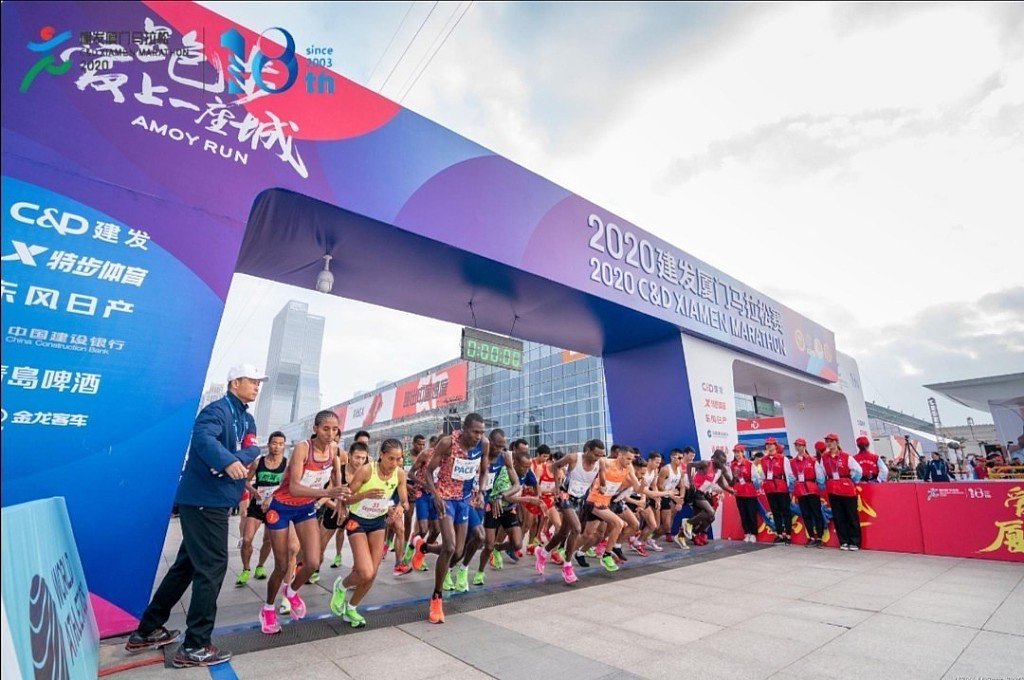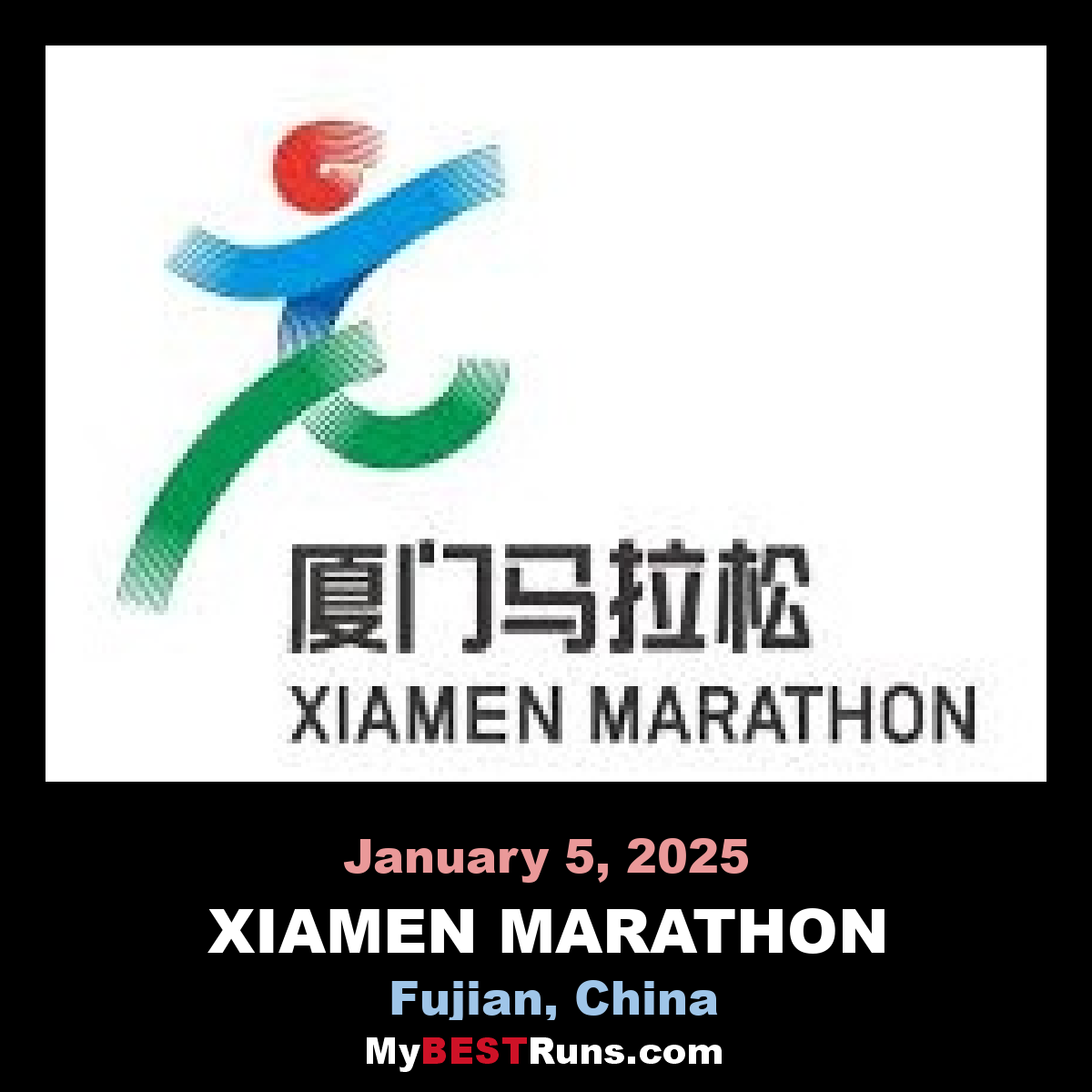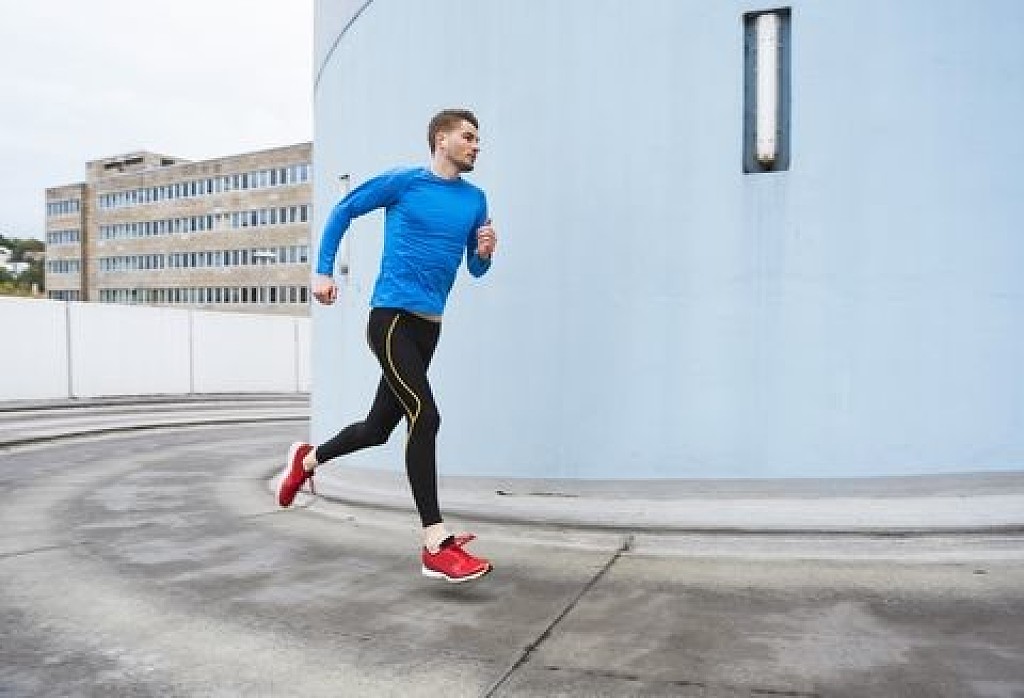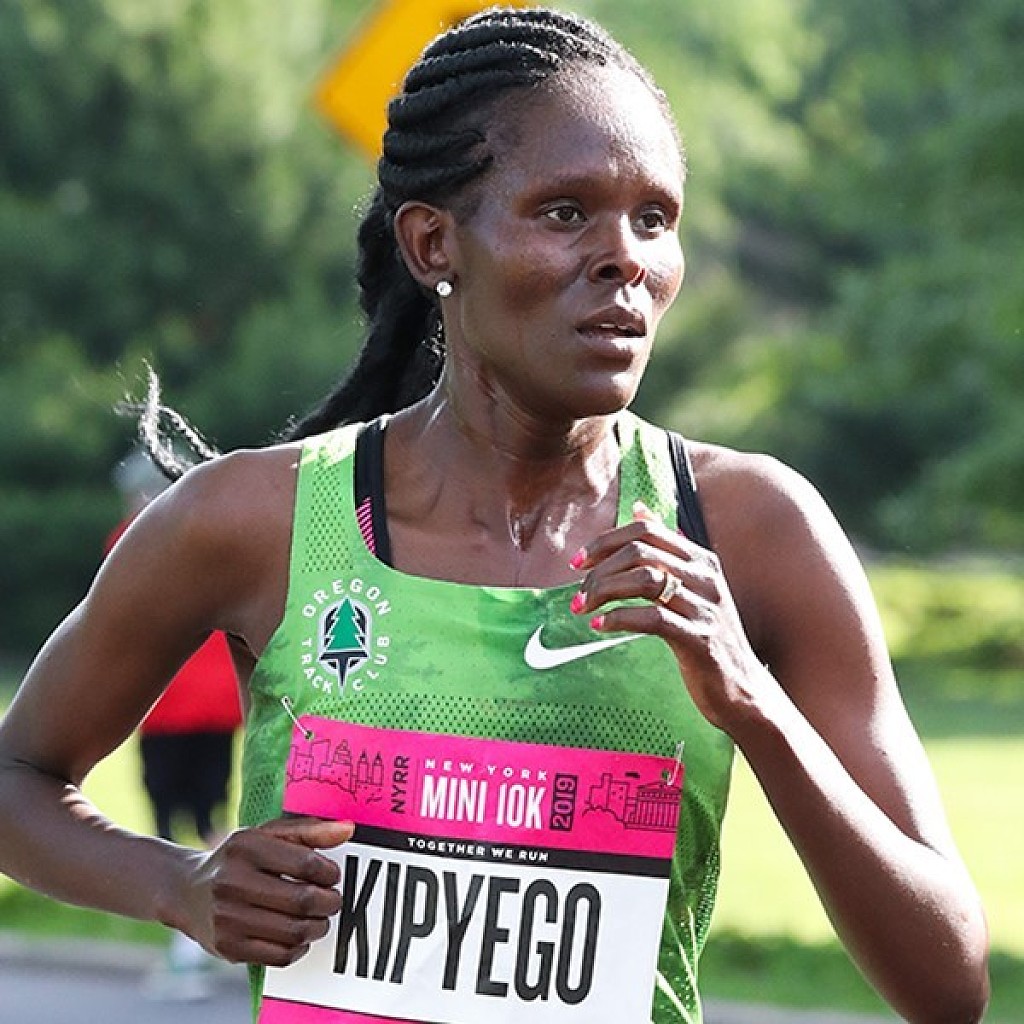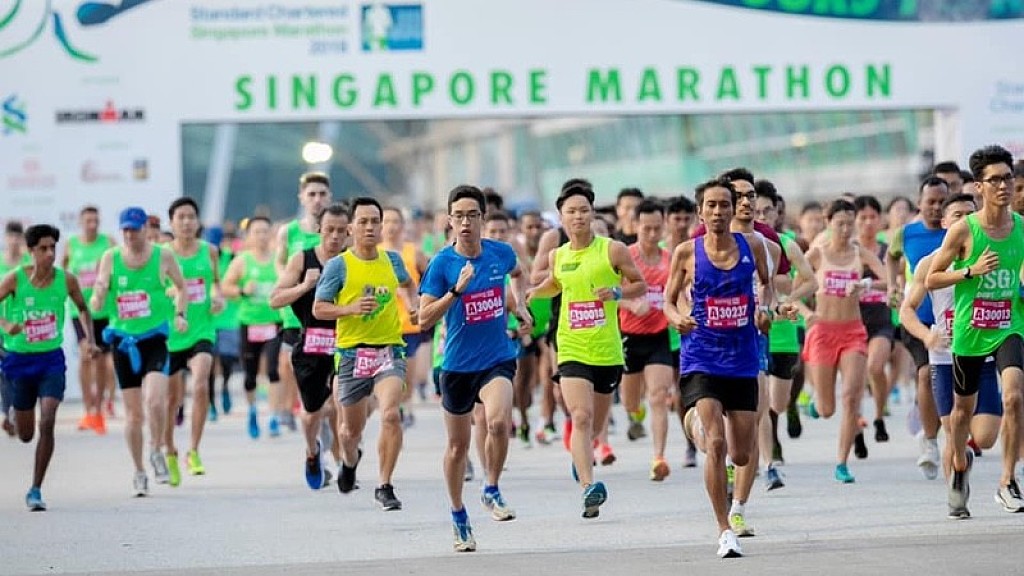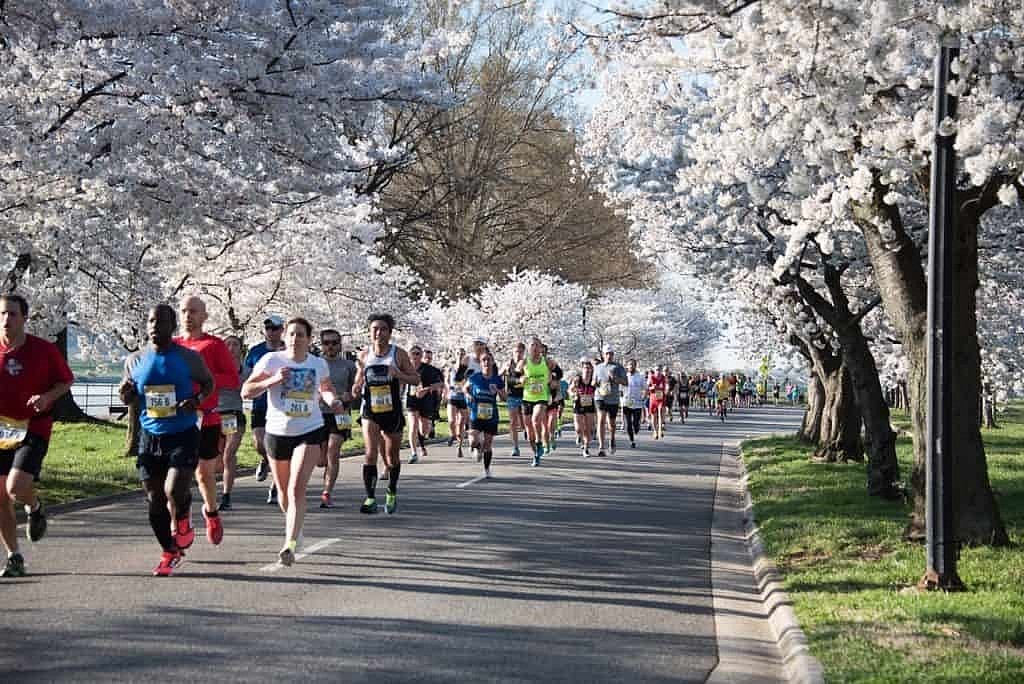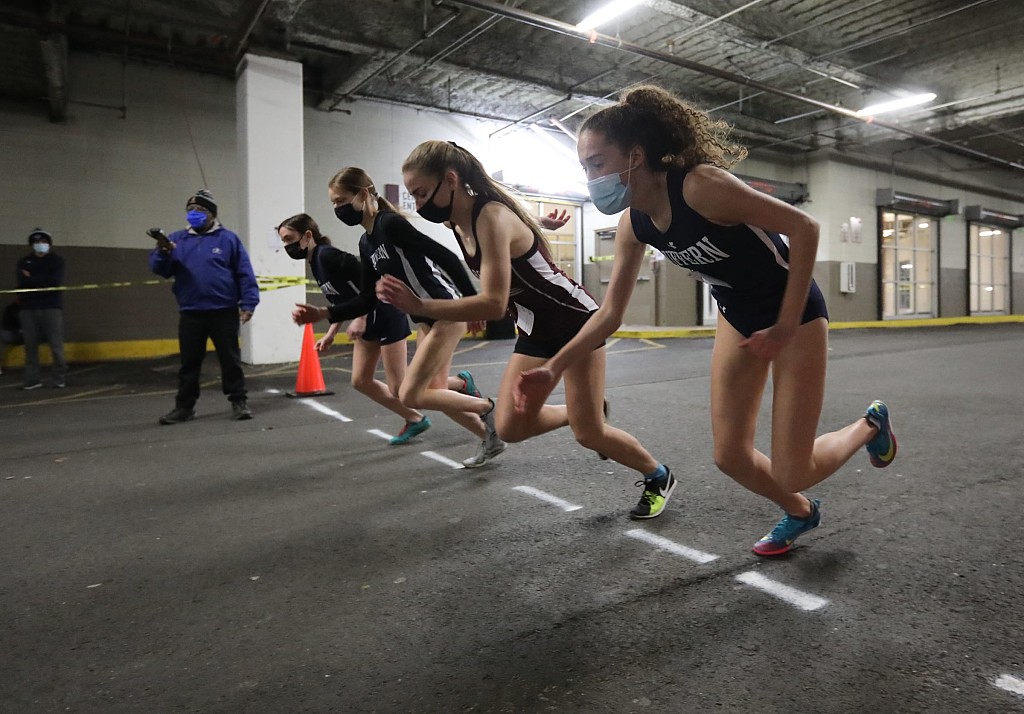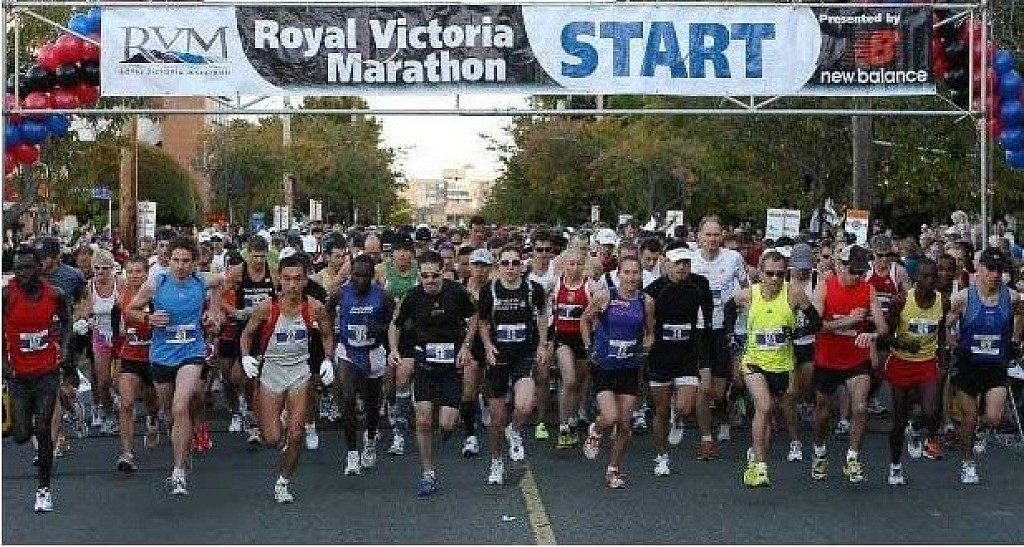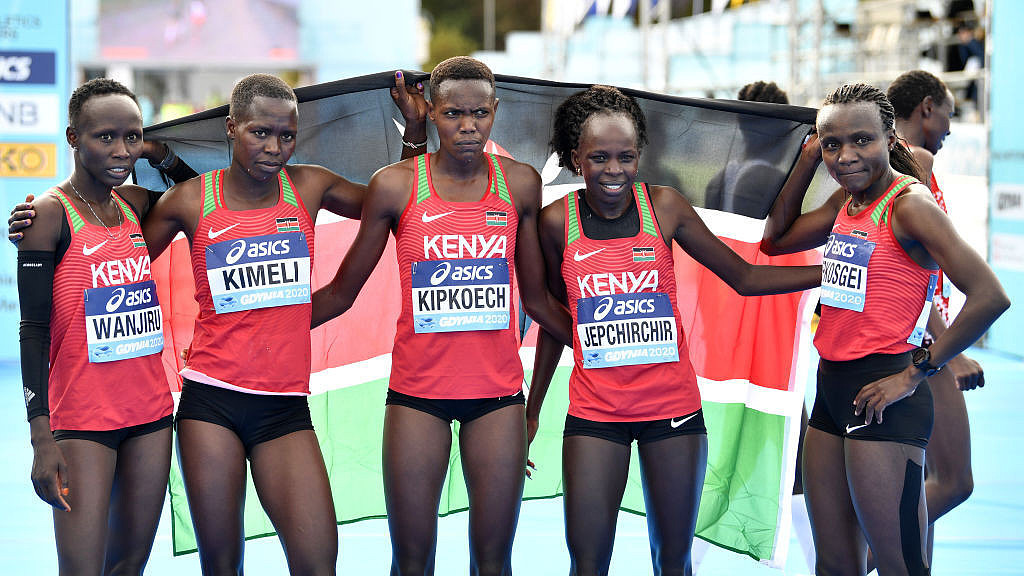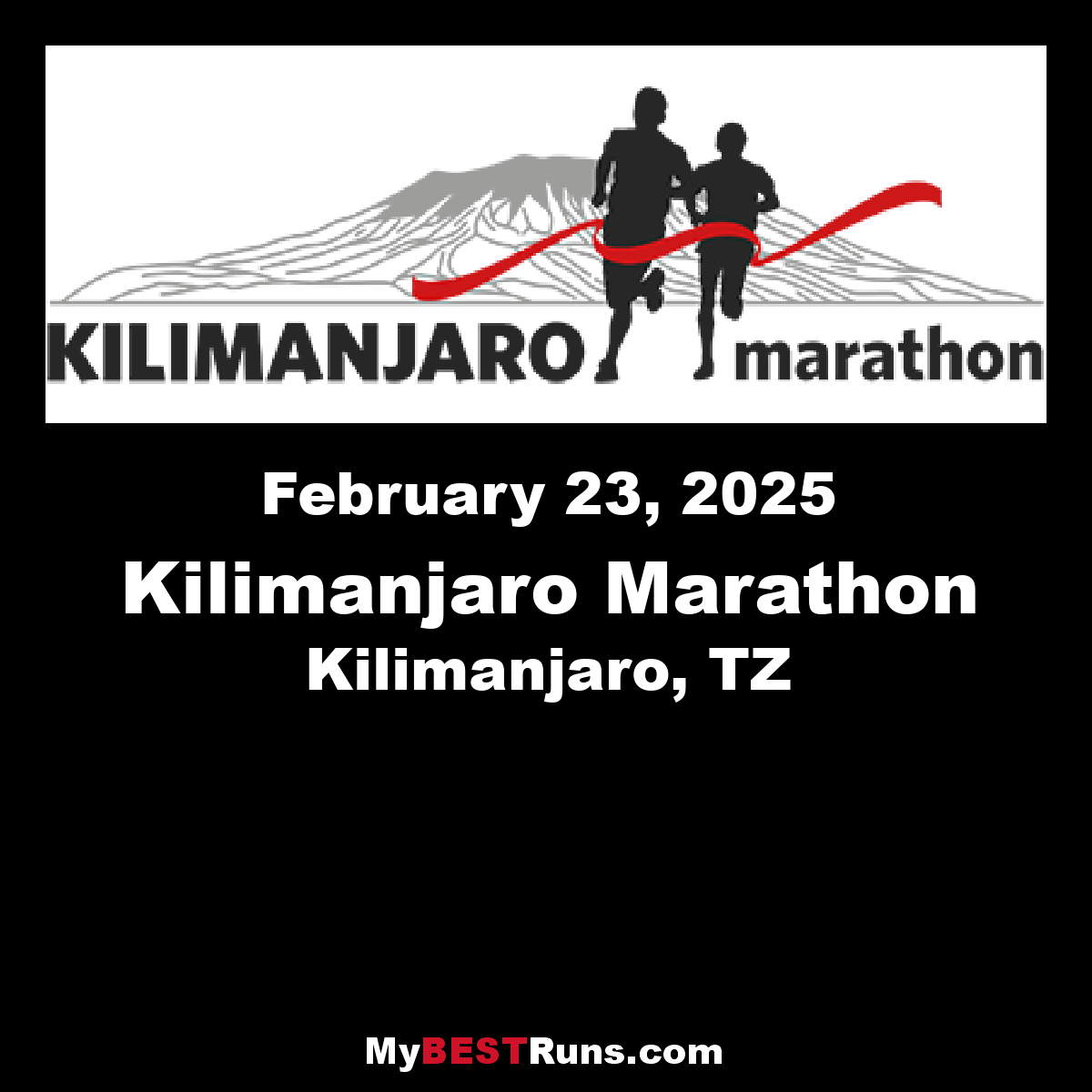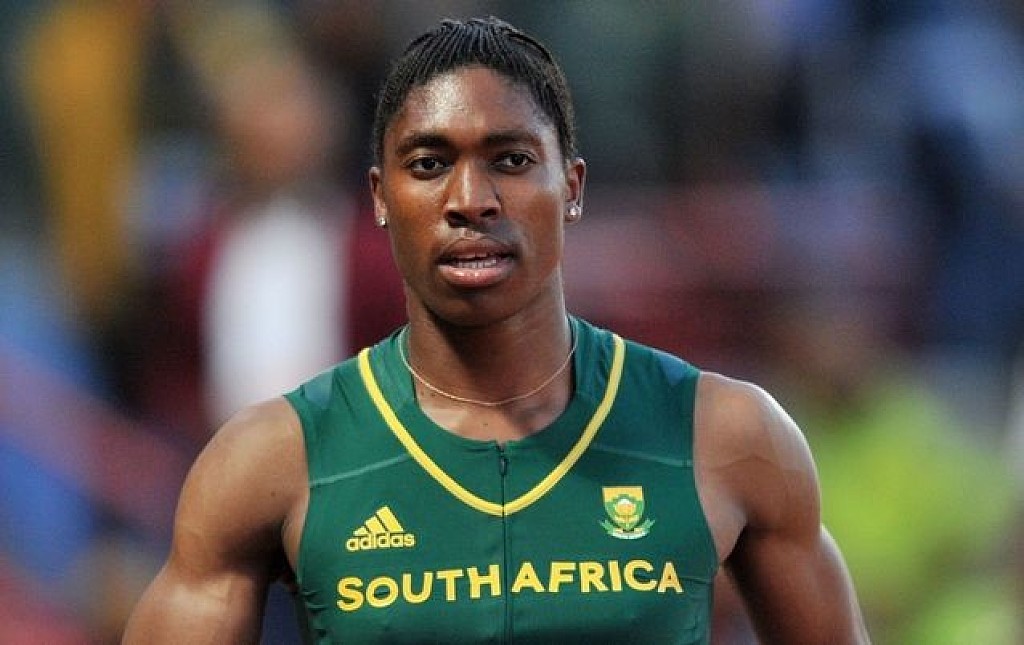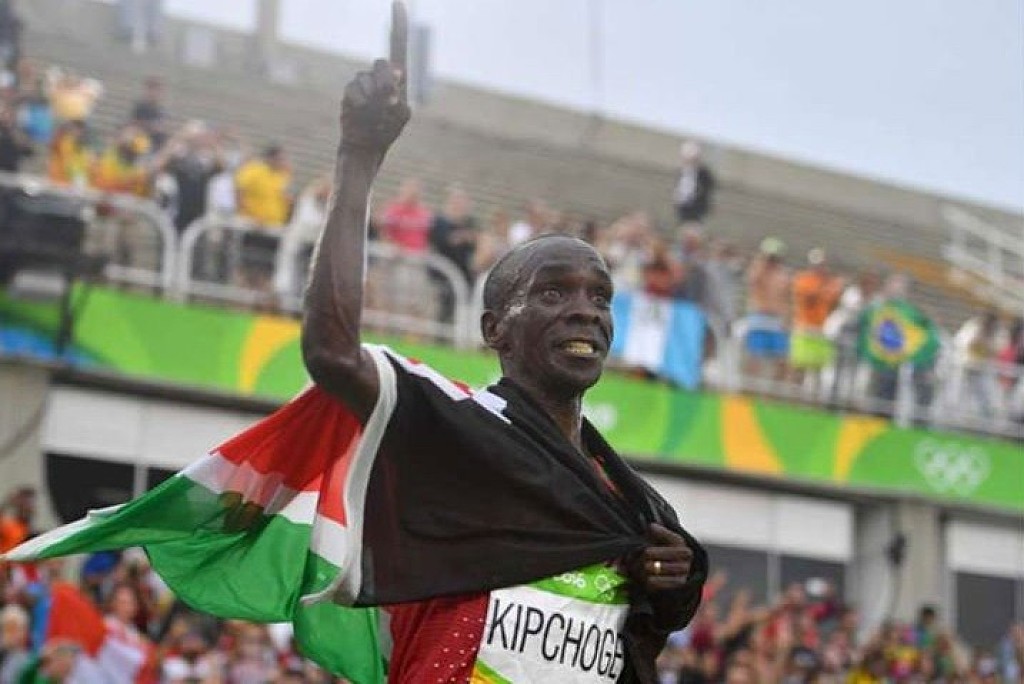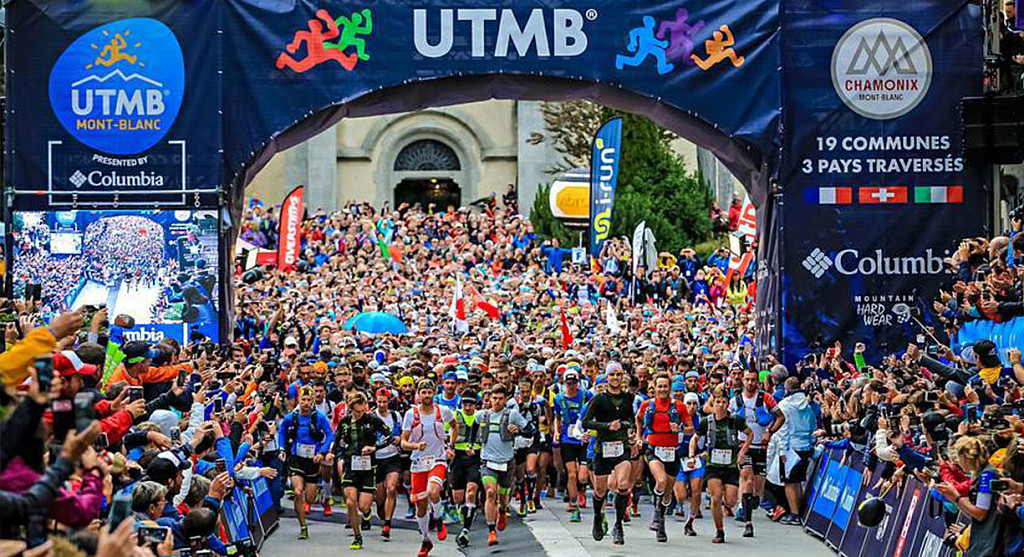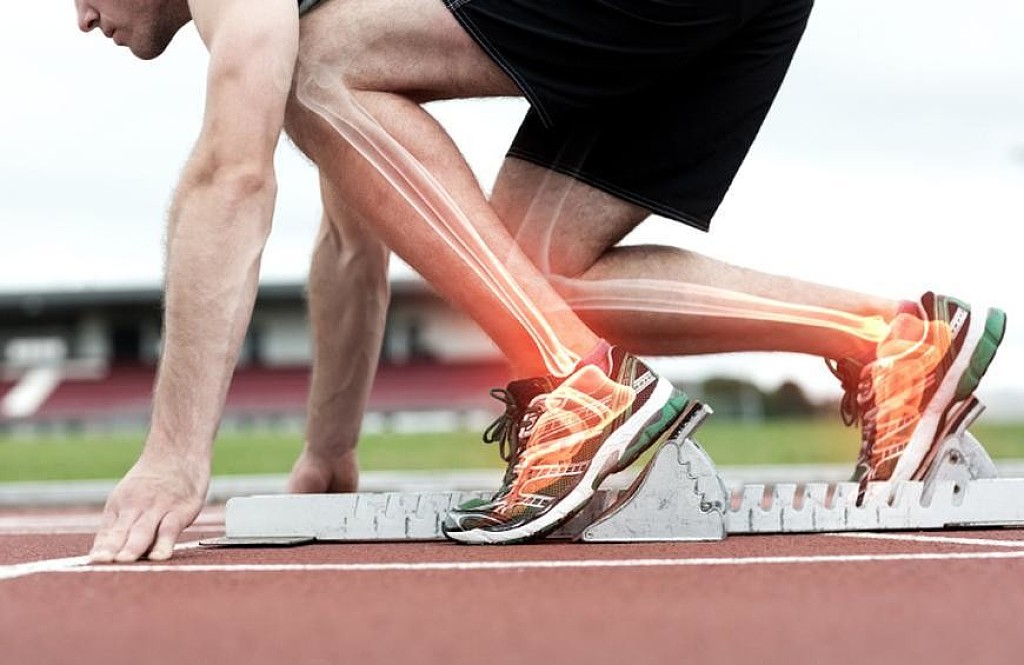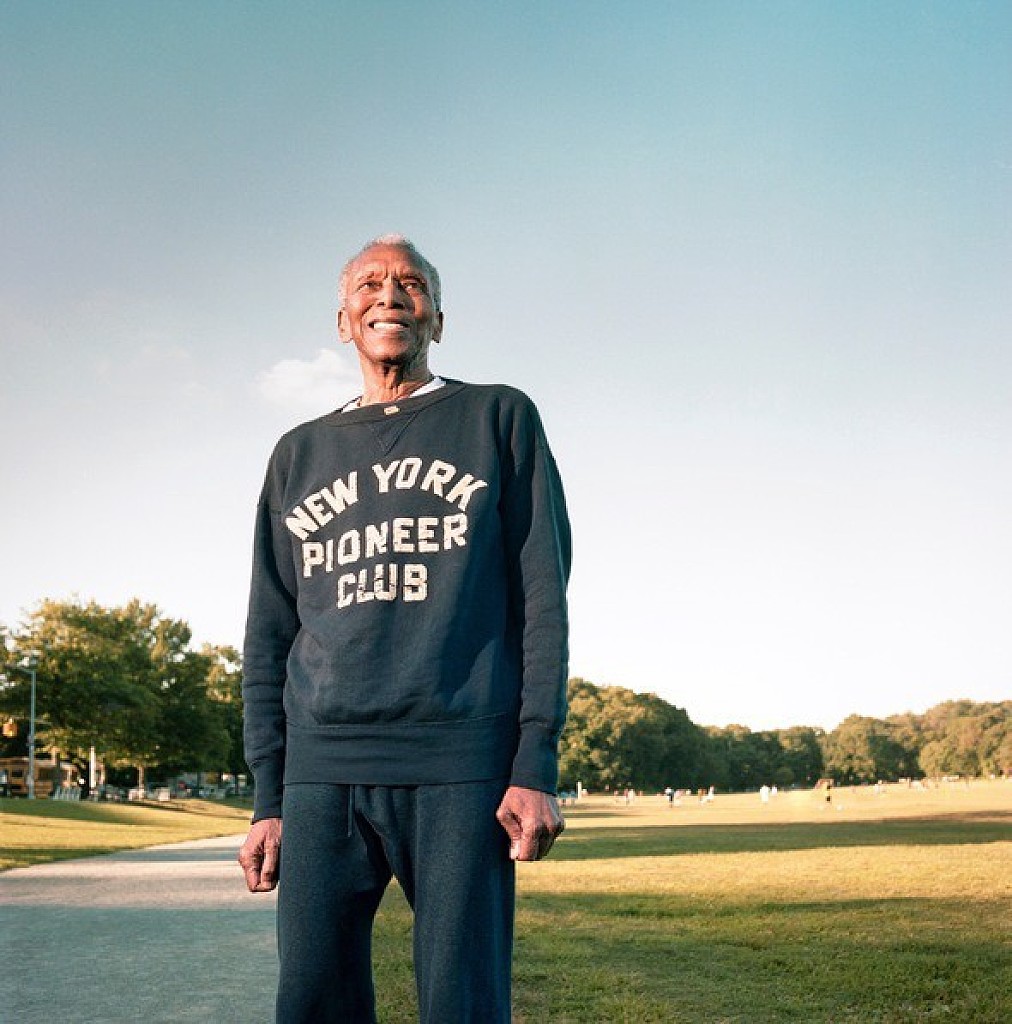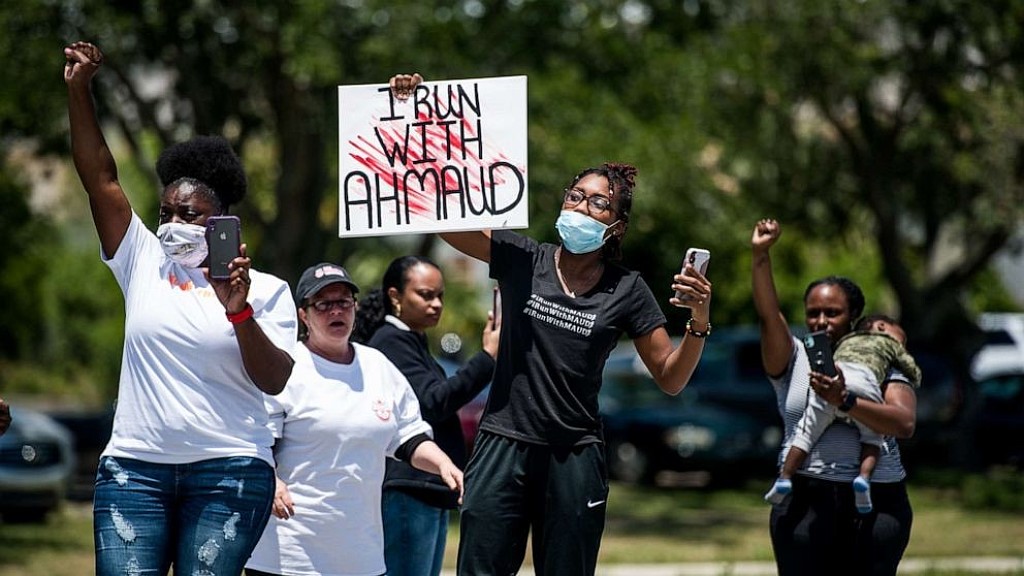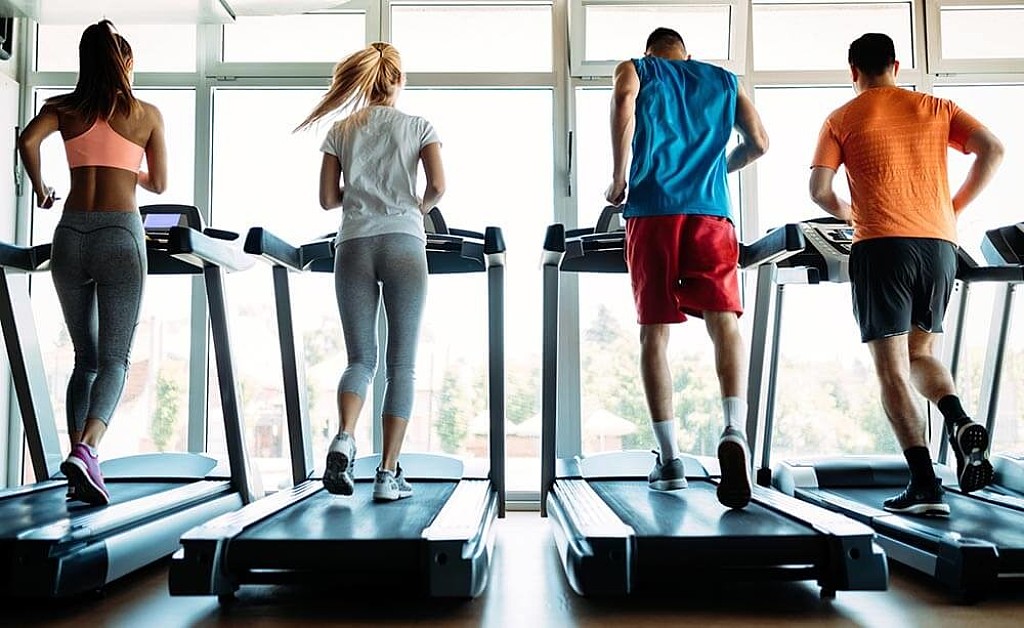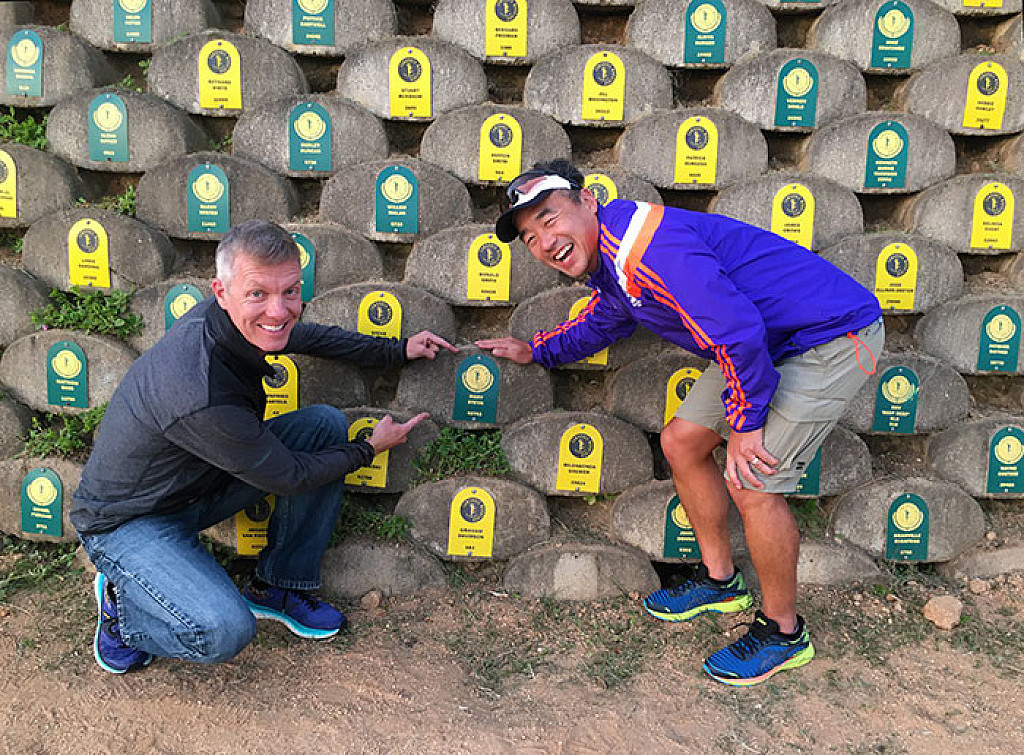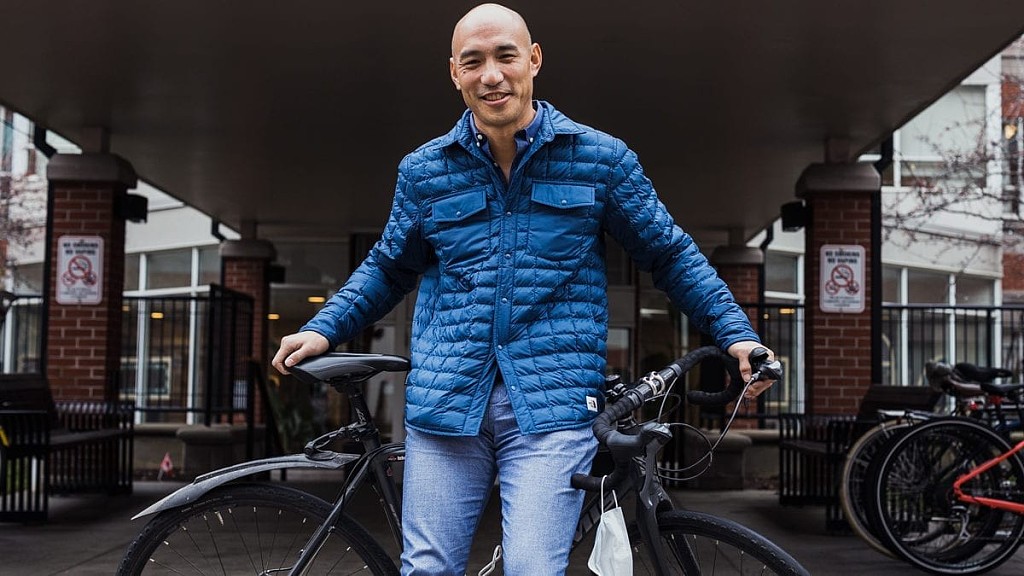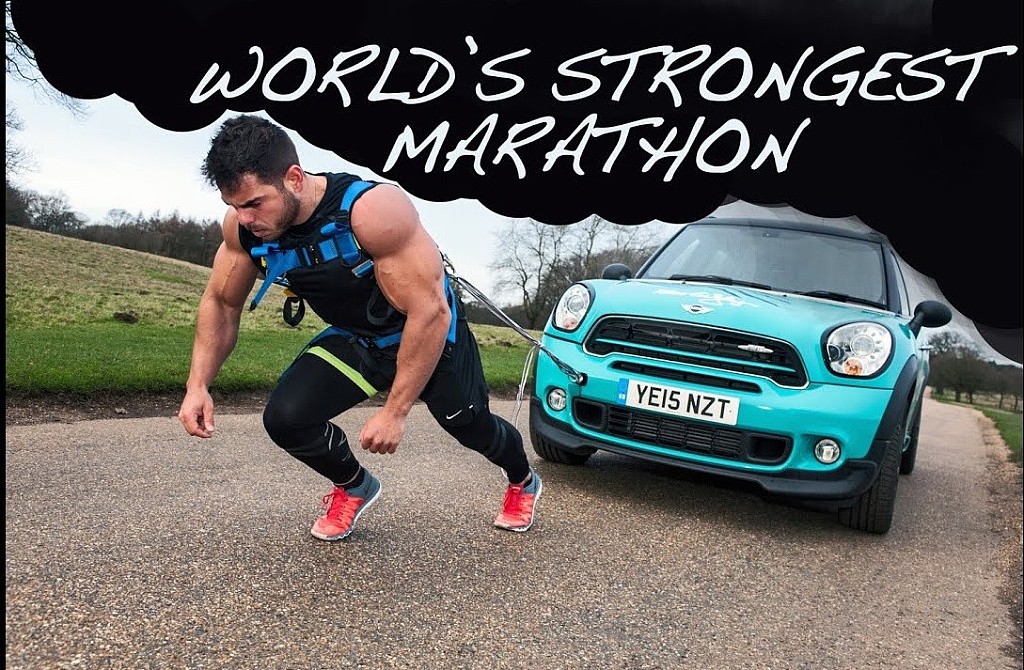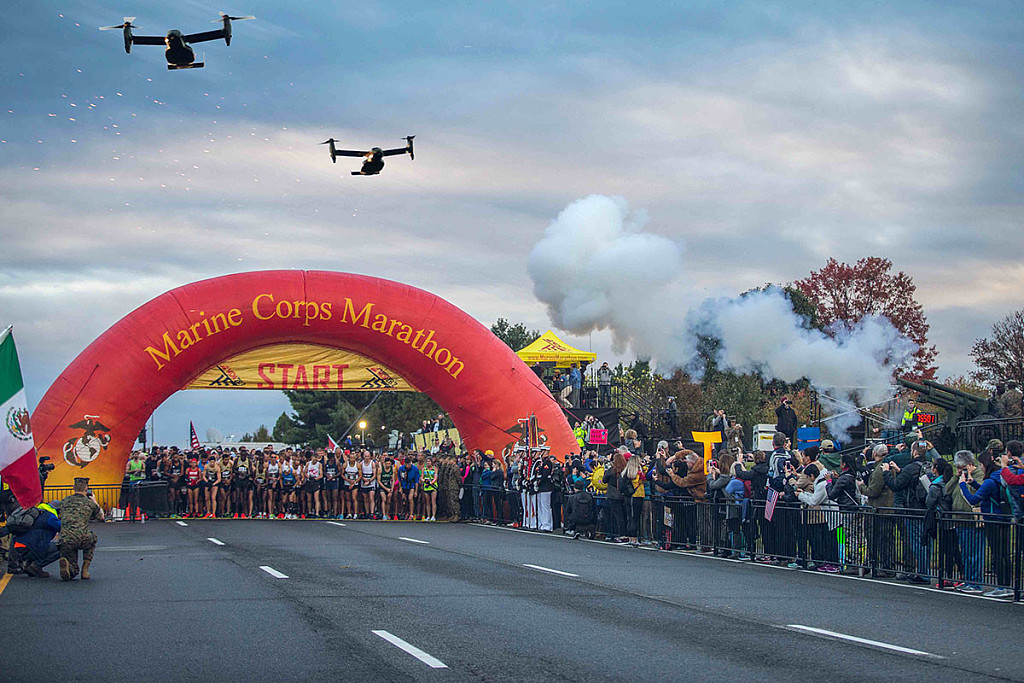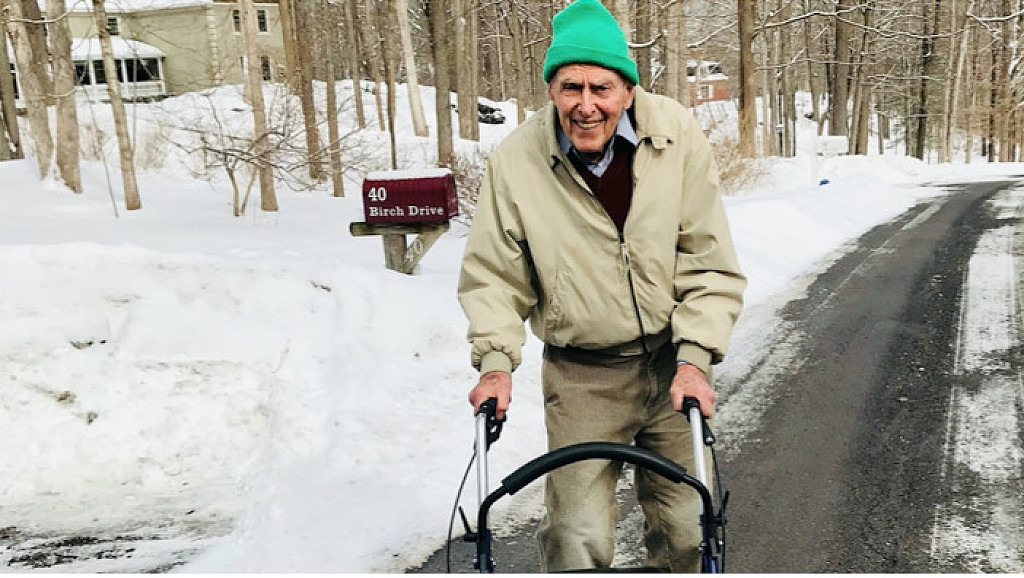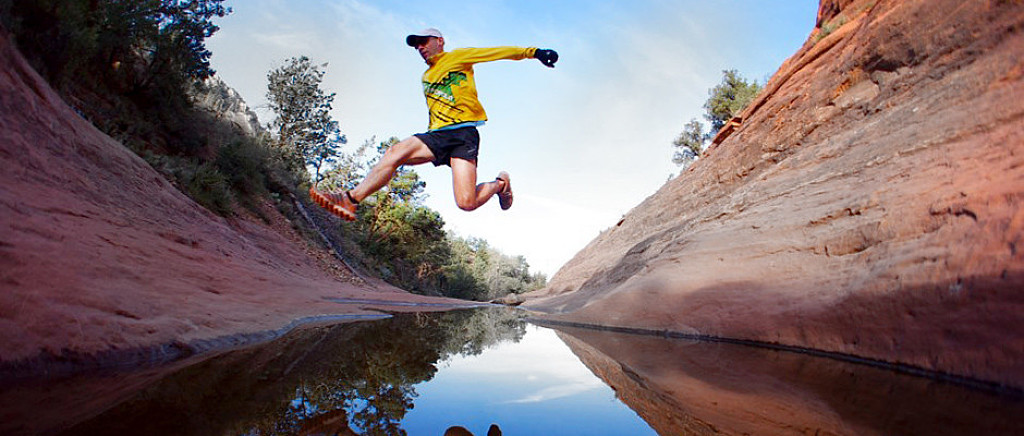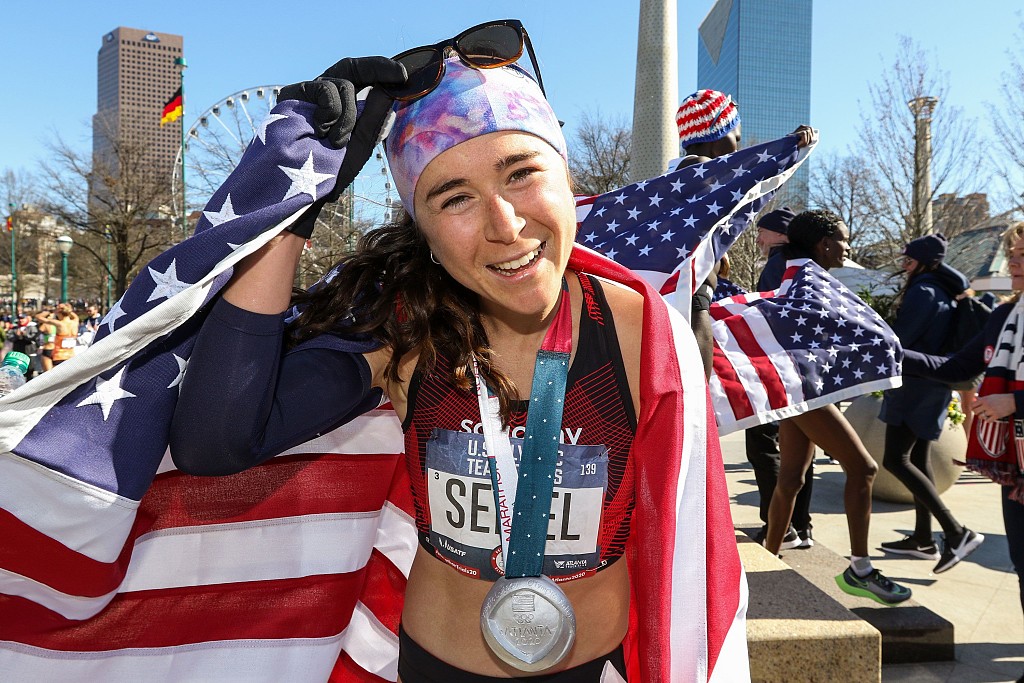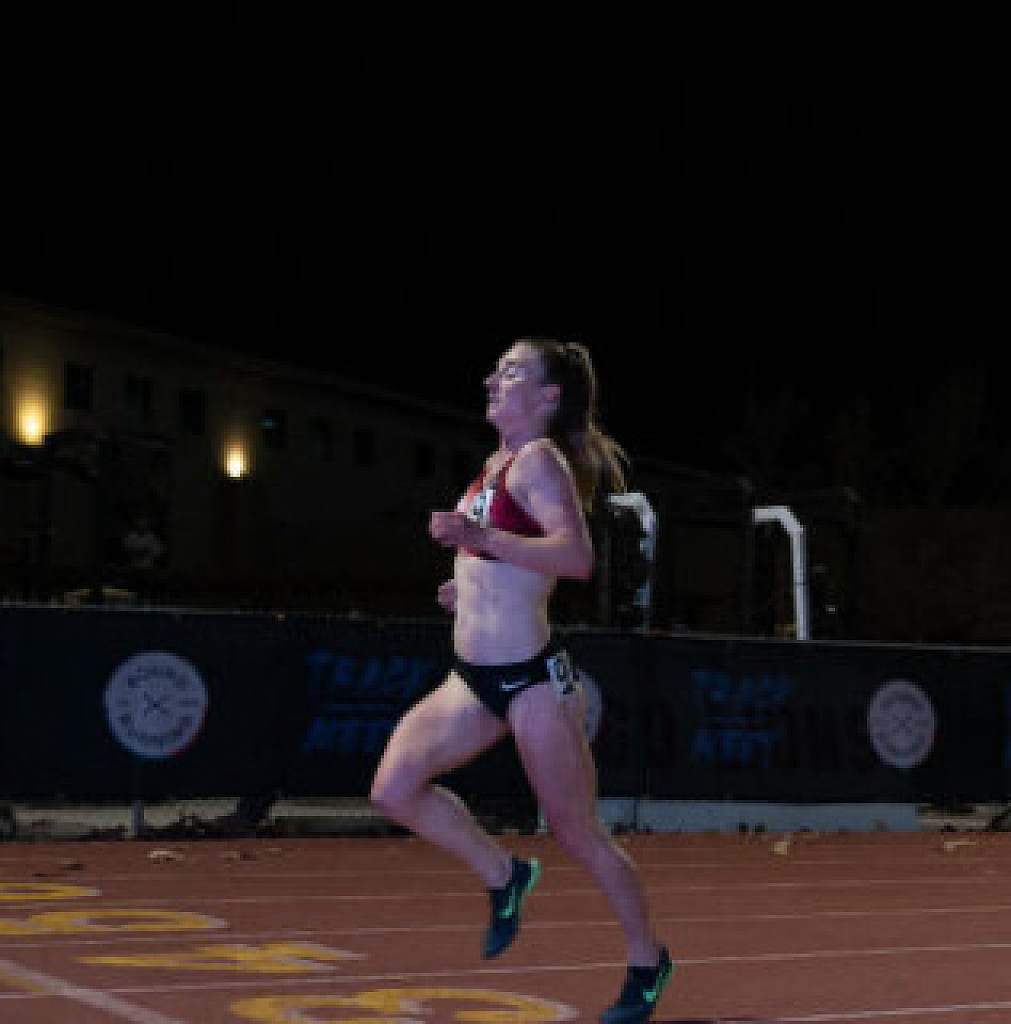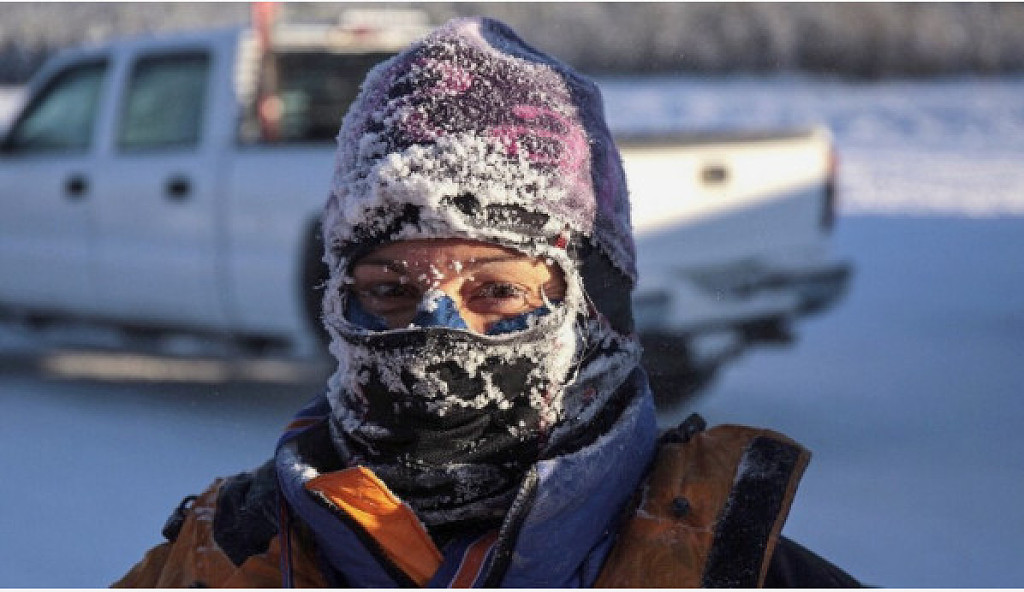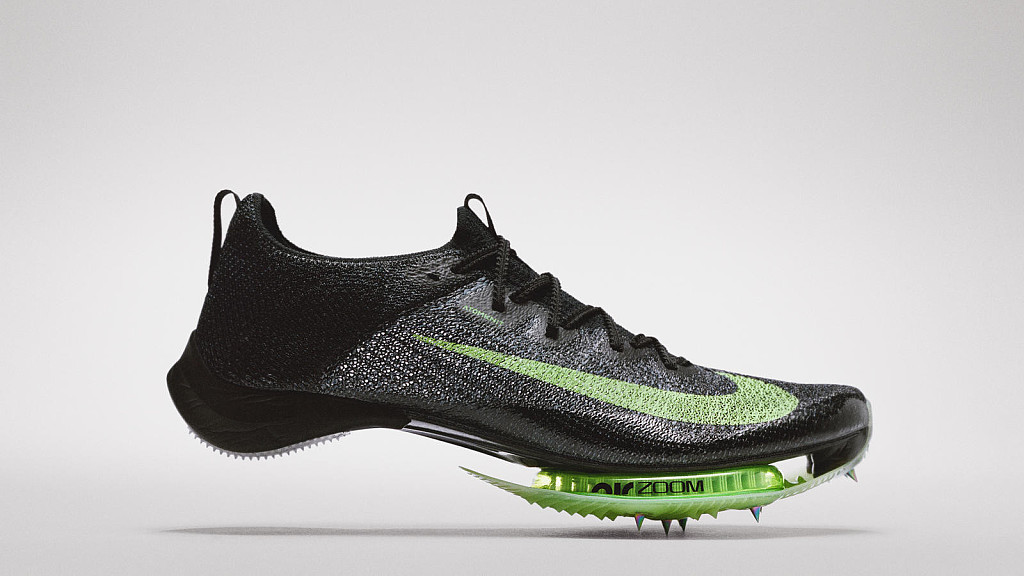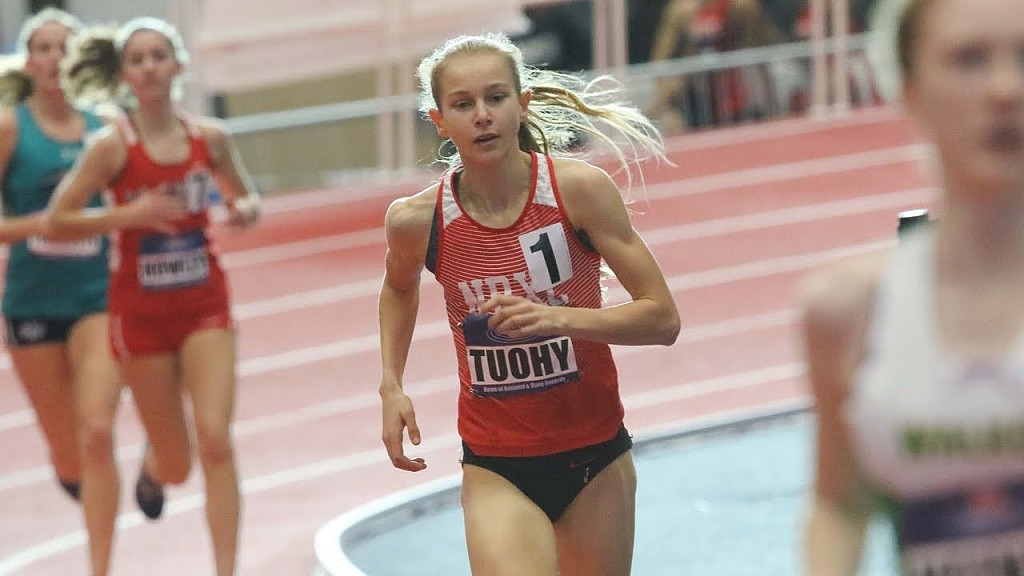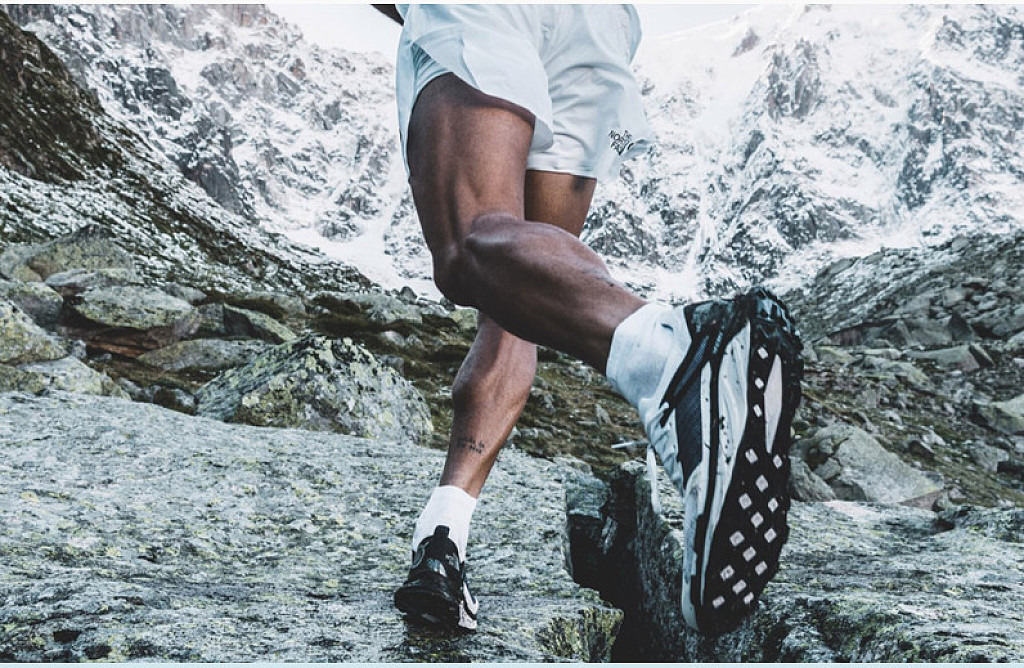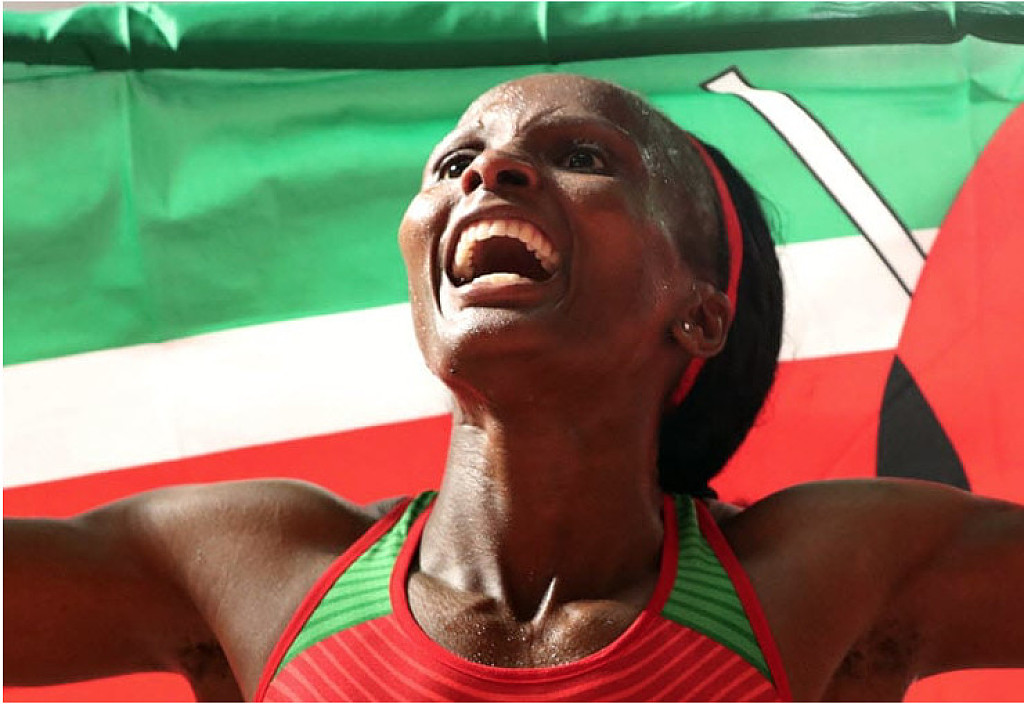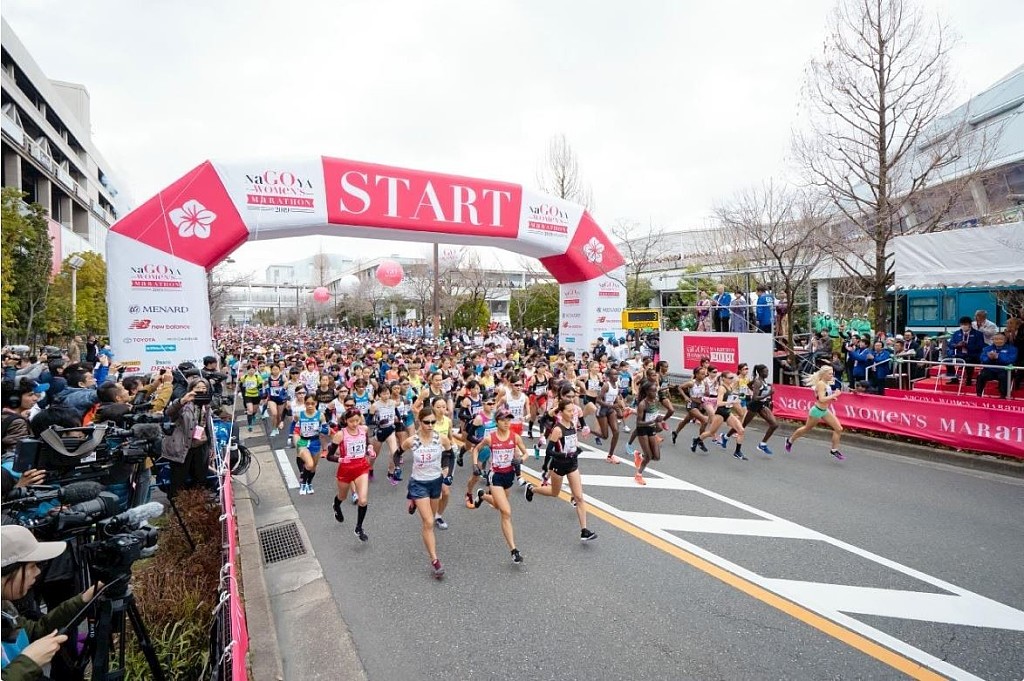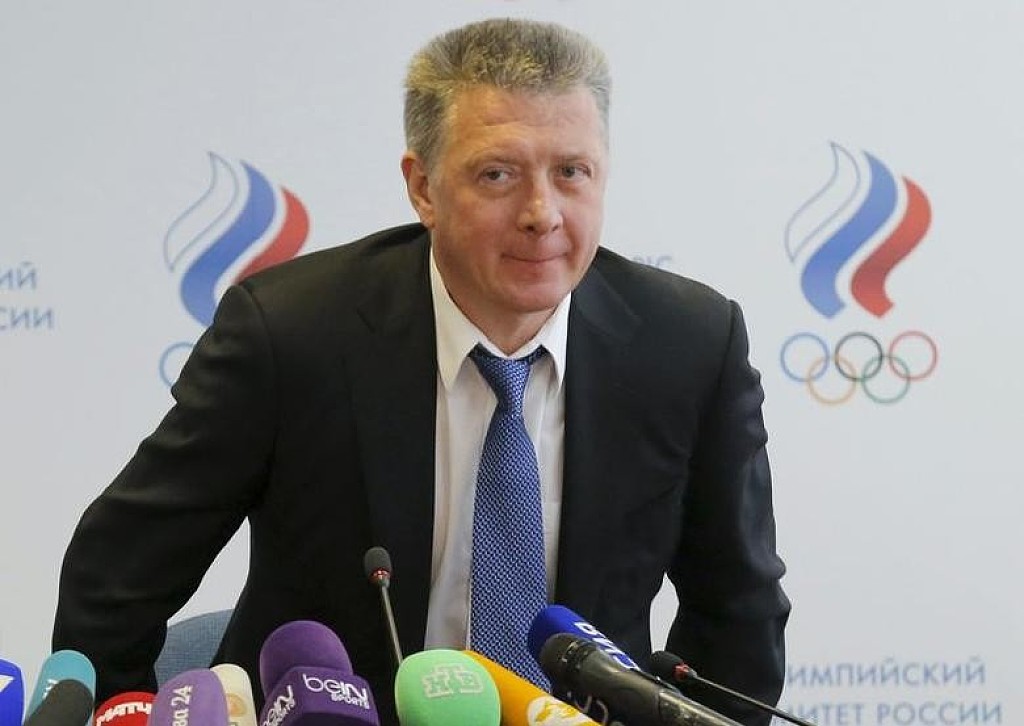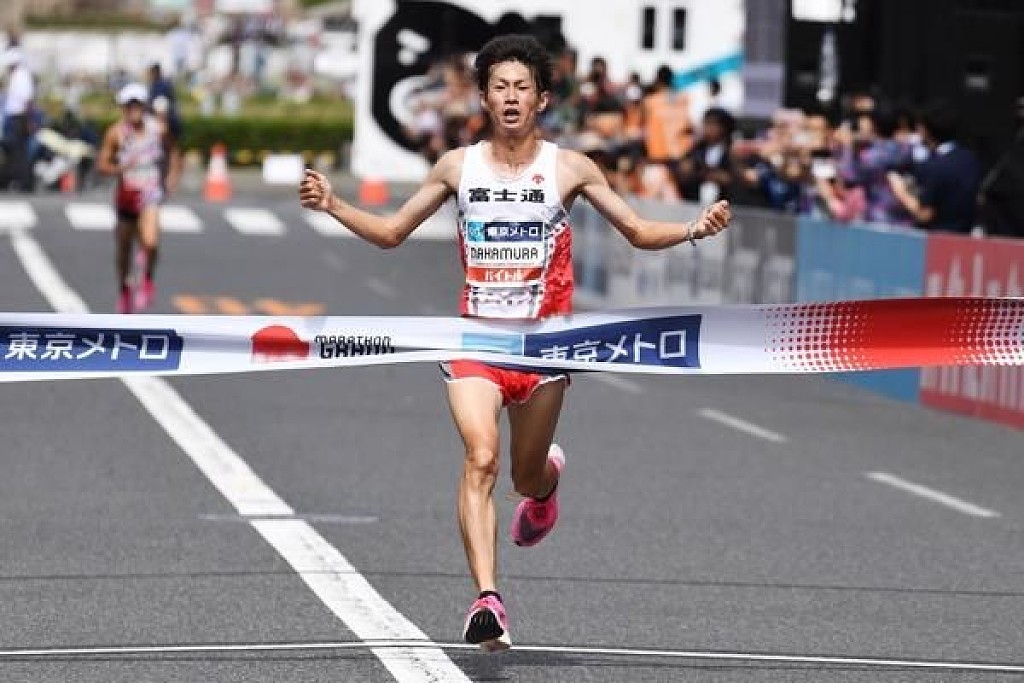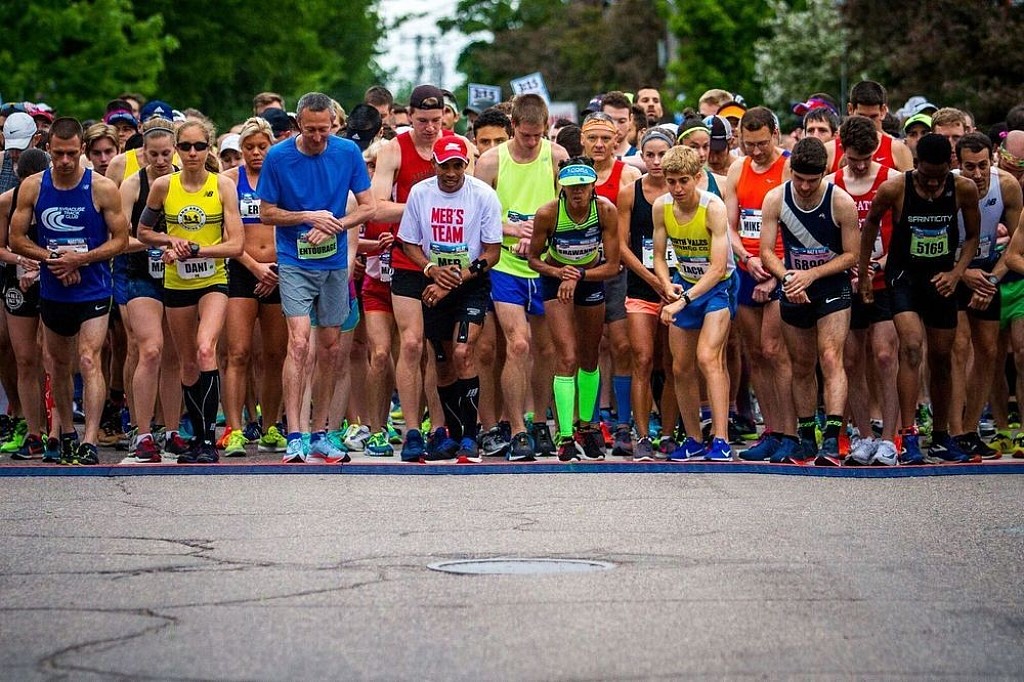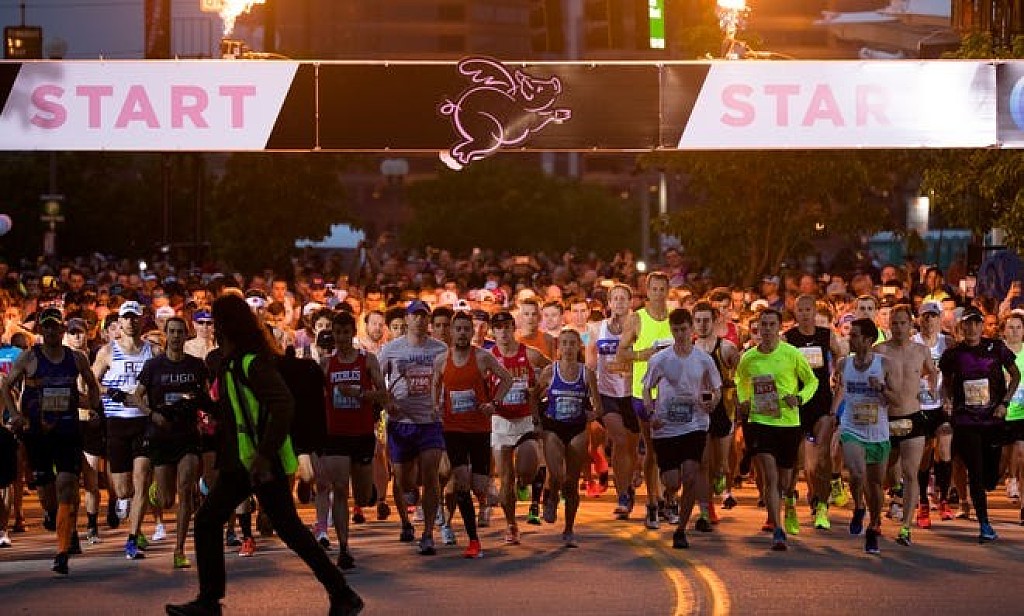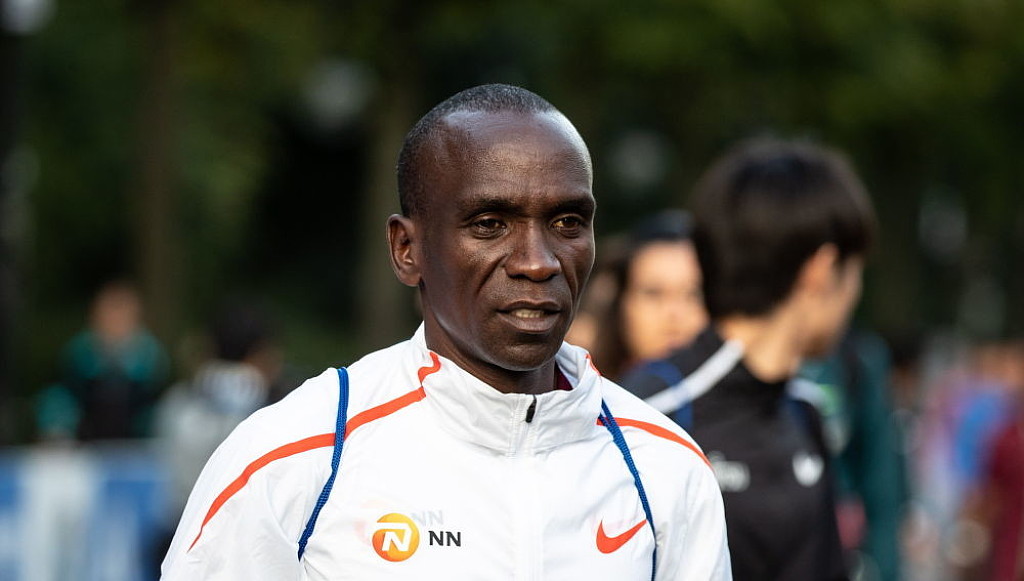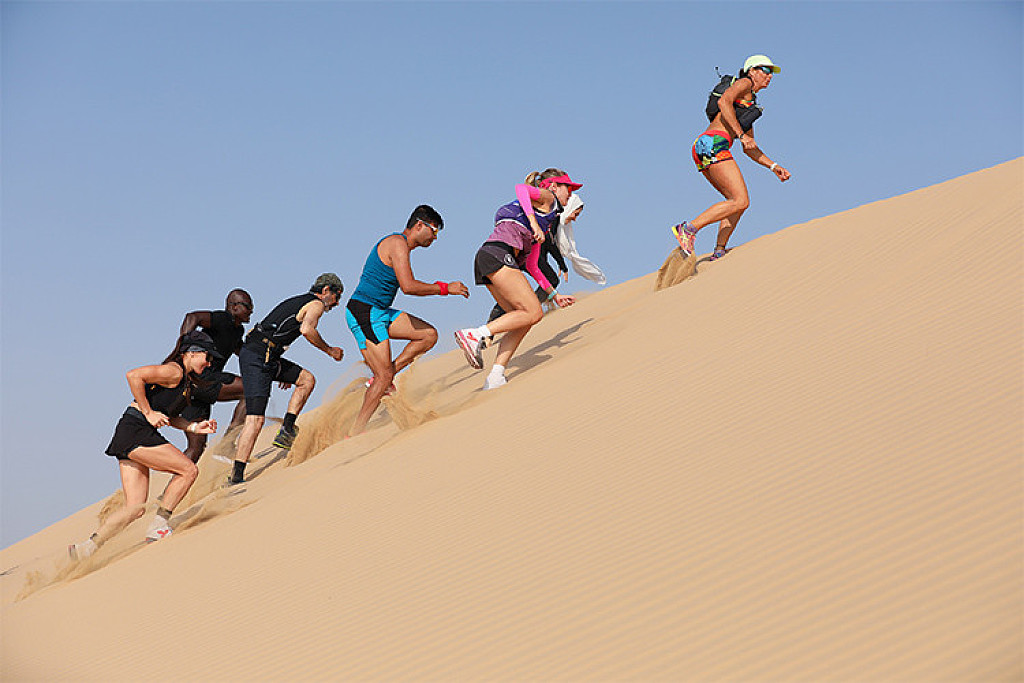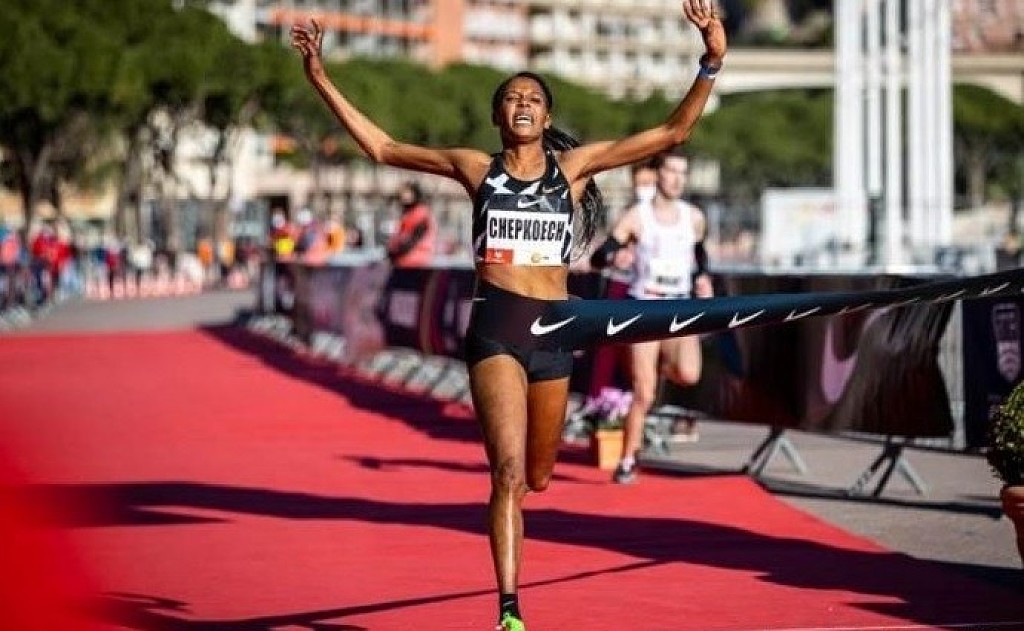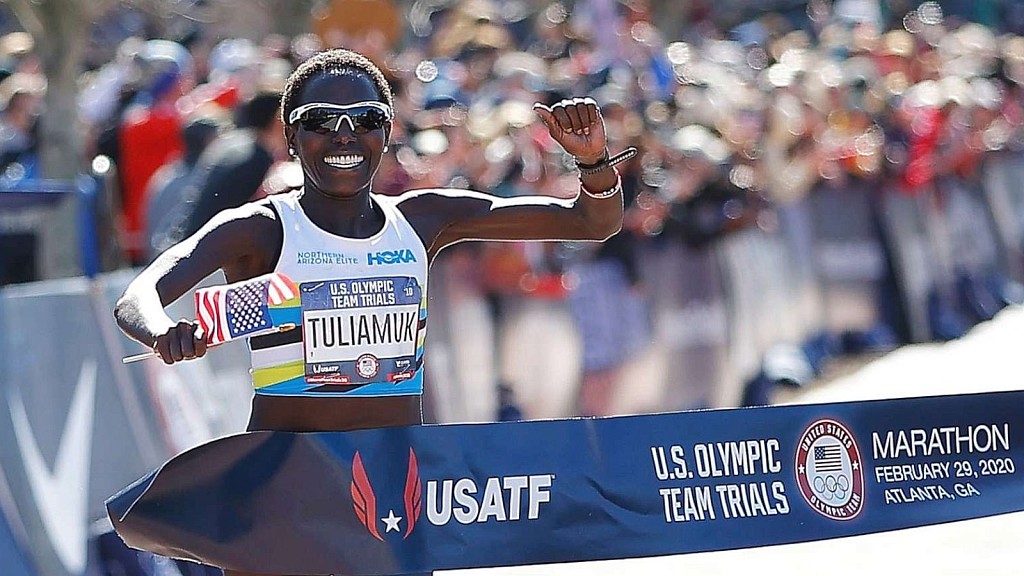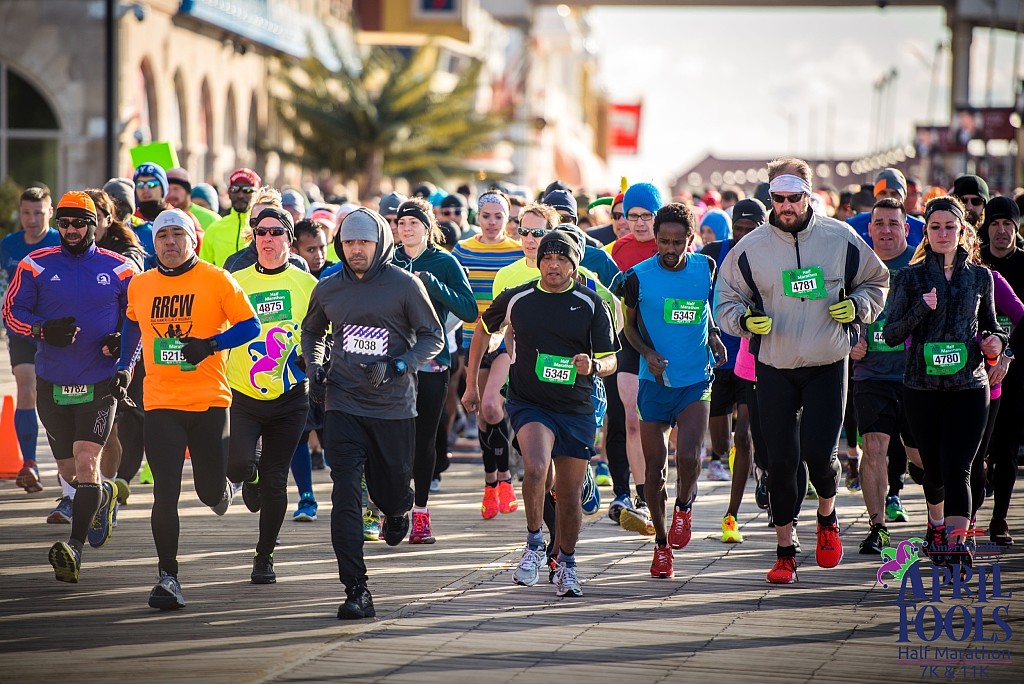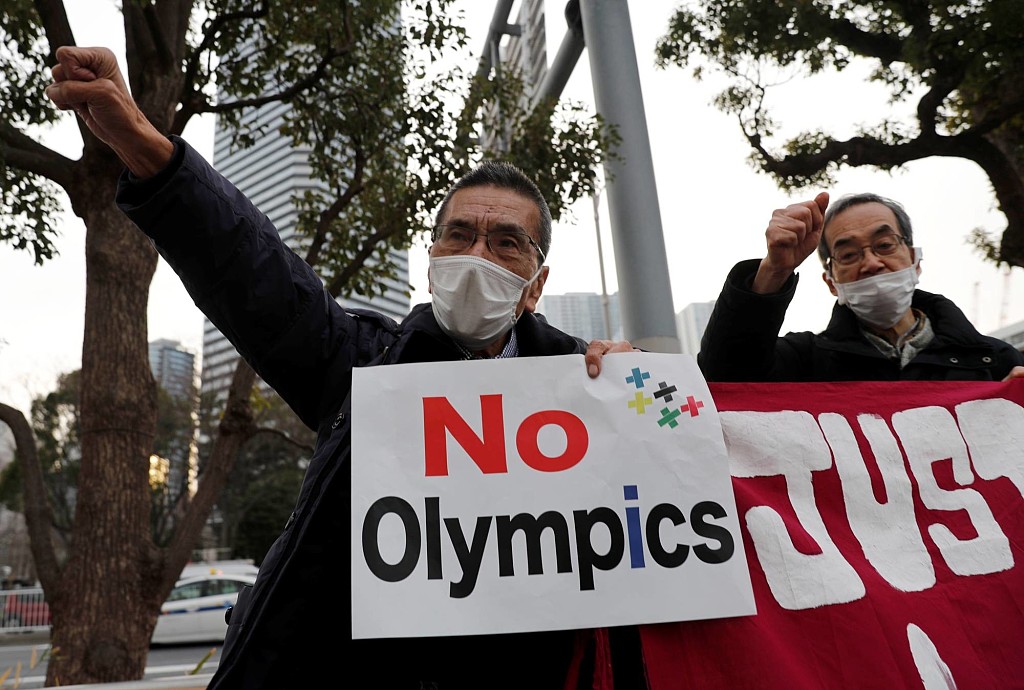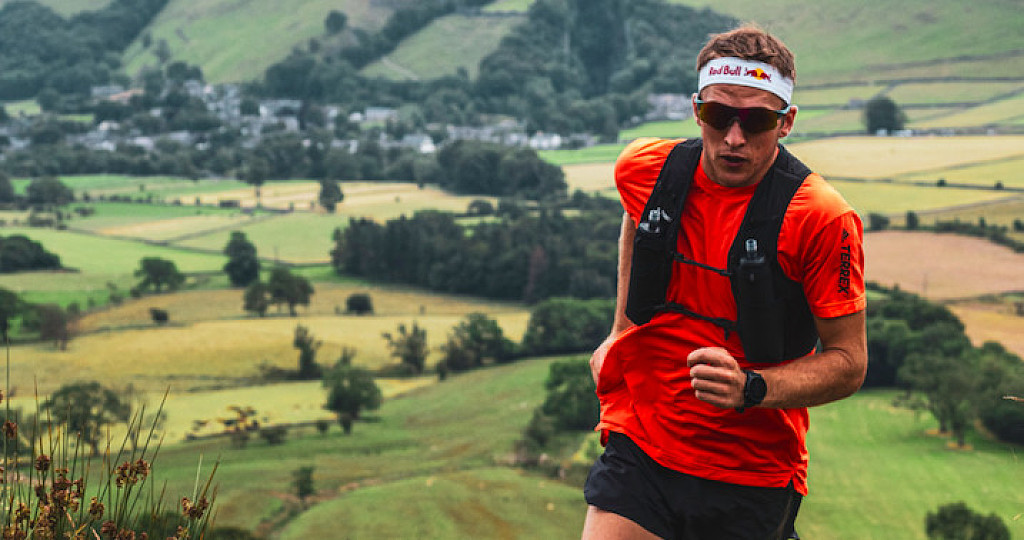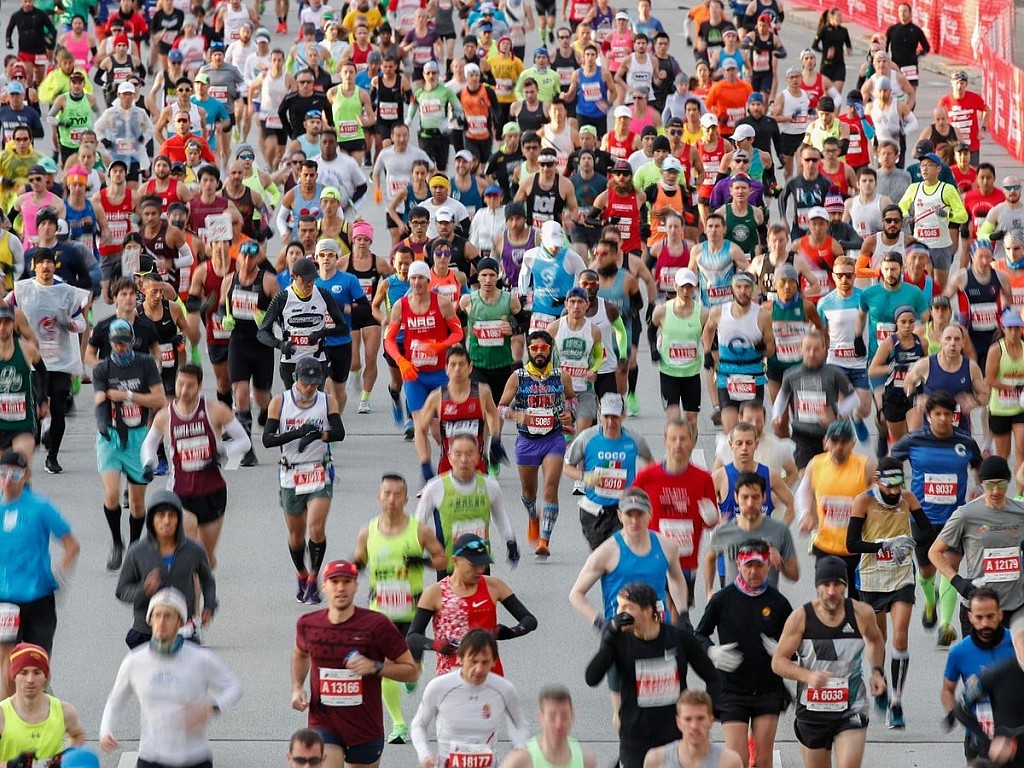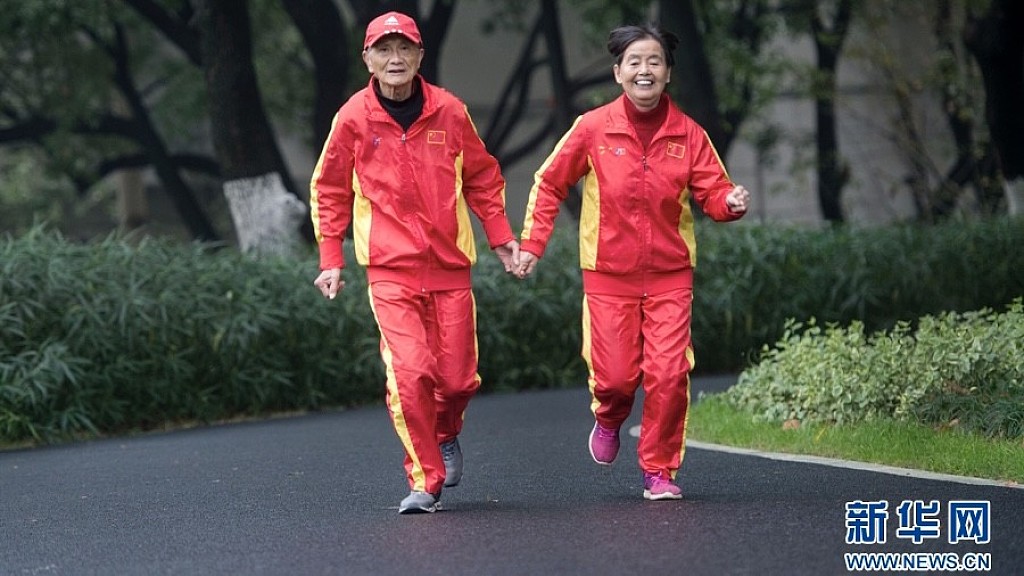Running News Daily
Running News Daily is edited by Bob Anderson in Mountain View, California USA and team in Thika Kenya, La Piedad Mexico, Bend Oregon, Chandler Arizona and Monforte da Beira Portugal. Send your news items to bob@mybestruns.com Advertising opportunities available. Over one million readers and growing. Train the Kenyan Way at KATA Running Retreat Kenya. (Kenyan Athletics Training Academy) in Thika Kenya. Opening in june 2024 KATA Running retreat Portugal. Learn more about Bob Anderson, MBR publisher and KATA director/owner, take a look at A Long Run the movie covering Bob's 50 race challenge.
Index to Daily Posts · Sign Up For Updates · Run The World Feed
The Xiamen Marathon has been granted World Athletics Elite Platinum Label
The Xiamen Marathon has been rated as a 2021 World Athletics Elite Platinum Label race, according to World Athletics' website.
The Xiamen Marathon gained the World Athletics Elite Platinum Label alongside the six world marathon majors (Boston Marathon, London Marathon, Berlin Marathon, Chicago Marathon, New York Marathon, and Tokyo Marathon), becoming the second race to win this label in China after the Shanghai Marathon.

The "World Athletics Elite Platinum Label", the highest level of the current 3-level race rating system, signifies the world's top race certification label.
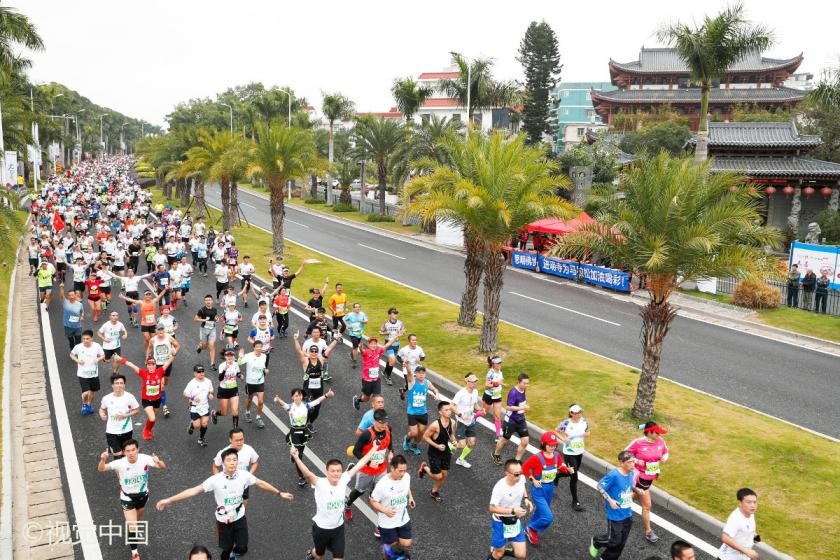
The Xiamen Marathon has run successfully for 18 years since its inception in 2003. The result of 2:06:19 made by Kenyan Moses Mosop at the 2015 Xiamen Marathon stands not only as the race record for the Xiamen Marathon, but also as the best result for men in marathons in China to date.
"Xiamen Marathon has contributed significantly to the development of marathons in China over the past 19 years," said Ruan Dunliang, director of Xiamen Municipal Bureau of Sports.
"The 'Elite Platinum Standard' represents a high degree of recognition and also a new mission for Xiamen Marathon, symbolizing a new era for Xiamen Marathon.
"Future efforts will keep focusing on improving the professionalism and internationalization of Xiamen Marathon to bring a higher-quality race to marathon enthusiasts worldwide."
(02/27/2021) ⚡AMPby Xinhua News
CD XIAMEN INTERNATIONAL MARATHON
The C&D Xiamen International Marathon is an annual marathon race held in January in the coastal city of Xiamen in Fujian province, People’s Republic of China. Every January, the first medal of marathon race around the world is awarded here. The race has become a golden name card of Xiamen, showing its splendor to the whole world.It is one of...
more...These tips will help you train for and race your best 10K.
The 10K is a popular pick for many runners. The distance attracts new and experienced runners alike. Whether you are running your first 10K or aiming for a personal record (PR), these tips will help you train for and race your best 10K.
Tips for Beginners

Build Endurance
For many new runners, the 10K is the natural next step after the 5K. If the furthest you have ever run is 3.1 miles, doubling the distance can be intimidating. Building your endurance will make the 10K both physically and mentally manageable.
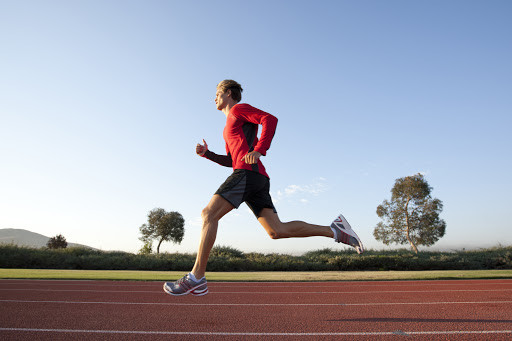
It’s important to give yourself time to build up to the 10K distance. Gradually increase both your long run distance and your overall weekly mileage, so that you can run 6 miles a couple of weeks before race day. You can increase your mileage by adding an extra day—such as 4 days of running instead of 3 days—or adding a mile to each run every couple weeks.
Pick up the Pace
If you are comfortably running 15 miles or more per week, you can begin to incorporate some faster running into your 10K training. Once per week, do a run that incorporates short intervals of running at a hard effort. Speedwork benefits all runners because of its unique ability to effectively improve your aerobic capacity. Quite simply, running faster in small amounts will help you run faster overall.
Beginners do not need to hit the track or run fast mile repeats. You can do your speed work on the roads, hills, treadmill, or track—whichever you are most comfortable with. Beginners should start with shorter intervals lasting one to three minutes in duration. Try this Intro to the Track workout or this Short and Fast Fartlek once per week in the 8-12 weeks leading up to your 10K race.
Tips for Experienced Runners
Respect the distance
It’s just 6 miles! Many experienced marathoners may dismiss the 10K as a “short” race, but the truth is that running 6.2 miles at the hardest effort possible is not easy. There is a huge difference between racing a 10K and completing a 6-mile easy run. The 10K hurts—a lot. The high level of discomfort—the burning lungs, fatigued legs, and metallic taste of the last 2 miles—makes the 10K more than just 6.2 miles. Respect the distance and prepare yourself mentally for being physically uncomfortable for a significant portion of the race.
Do Race Pace Speedwork
Many experienced runners will have a time goal for a 10K race. In order to run that time in the race, you need to practice the pace in training. Experienced runners with a solid aerobic base can spend 4-8 weeks specifically preparing for their 10K with workouts such as short intervals, tempo runs, and 10K pace intervals.
You do not want to leave your race in your training. The recovery intervals in between 10K pace intervals allow you to build your fitness without breaking down your body before race day. The 10K pace intervals can range from ½ mile to 2 miles at your goal pace, progressing as the race approaches. Begin with shorter intervals covering 4-5 miles total and build up to longer intervals covering 5-6 miles.
Some 10K pace workouts include:
8-10 x 1K at 10K pace with 2 minutes easy in between
4-6 x 1 mile at 10K pace with 3 minutes easy in between
4-5 x 2K (1.24 mile) at 10K pace with 3 minutes easy in between
2-3 x 2 mile at 10K pace with 3 minutes easy in between
Tips for Runners of All Levels
Strength Train
Running is essentially a prolonged series of single-legged forwards hops. The stronger your glutes and leg muscles are, the faster you can run and the longer you can sustain that fast speed. Your core and upper body strength matter as well, since your core provides stability and your upper body contributes to good running form.
Speedwork does improve your aerobic capacity and running economy, thereby making you a faster runner, but you can only do so much speedwork. Strength training supplements those gains of speedwork by further improving your economy. According to a 2003 study in Sports Medicine, distance runners can improve their running economy up to 8% with consistent strength training. Better running economy means more speed – which translates to a faster 10K time.
Finally, runners who strength train regularly are less likely to get injured, since strength training fixes muscular imbalances and makes muscles more resistant to the repetitive pounding of running.
Have a Race Strategy
Whether you are running a 40-minute or 80-minute 10K, proper pacing is key to running your best 10K. Starting out too fast can derail your goals and set you up for a miserable race. A race strategy keeps you from getting caught up in the excitement of the race. You can follow a race strategy regardless of your goals and experience. Aim to run the first mile at a controlled effort, the middle 4 miles at a steady and hard effort, and the last mile and two-tenths as hard as you possibly can. If you are trying to hit a certain pace, aim to run your goal pace to 10 seconds slower for the first mile, at your goal pace for the middle 4 miles, and as hard as you can to the finish line.
If you are running the 10K to complete it, you can do some dynamic stretches such as leg swings and arm swings to warm up. If you are racing for a time goal, treat the race as you would a hard workout and give yourself time to warm up before the race. You want to be ready to run fast! Jog at a very easy effort for 1-2 miles and complete your normal drills and dynamic stretches.
With these training and race day tips in mind, you are ready to run your best 10K!
(02/26/2021) ⚡AMPby Mary Cain
Sally kipyego is focused on winning a medal in the Olympic marathon
After the 2020 Olympics were postponed last March because of Covid-19, US Olympic marathoner Sally Kipyego and her coach Mark Rowland decided to take a laid back approach to the rest of 2020 with the hope that Kipyego’s body would feel refreshed when she resumed training in earnest last fall. The time is coming, however, to return to competition.
Kipyego was scheduled to race last week for the first time since she made Team USA at the US Olympic Marathon Trials in February 2020. But the race she was planning on running, the RAK Half Marathon in the United Arab Emirates, was cancelled. Instead, she has a 15K planned for March (Kipyego could not officially announce it, but the logical assumption is she means the USATF 15K champs in Jacksonville on March 20) and a 10,000 on the track in April, where she hopes to hit the qualifying standard for the 2022 Worlds in Eugene. After that, she will shift to marathon mode and focus on building up for the Olympics.

And Kipyego is dreaming big. And for good reason. Kipyego is the only member of the US women’s marathon squad with an Olympic medal, having earned a silver in the 10,000 in London in 2012 for her native Kenya, and believes she is capable of taking home another one this summer.
“I feel like if I get good consistent training — which I have been able to do the last one-and-a-half years — proper training, I think I’ll have a chance of medaling,” Kipyego says. “That is really the objective for this season for me, is to be able to medal.”
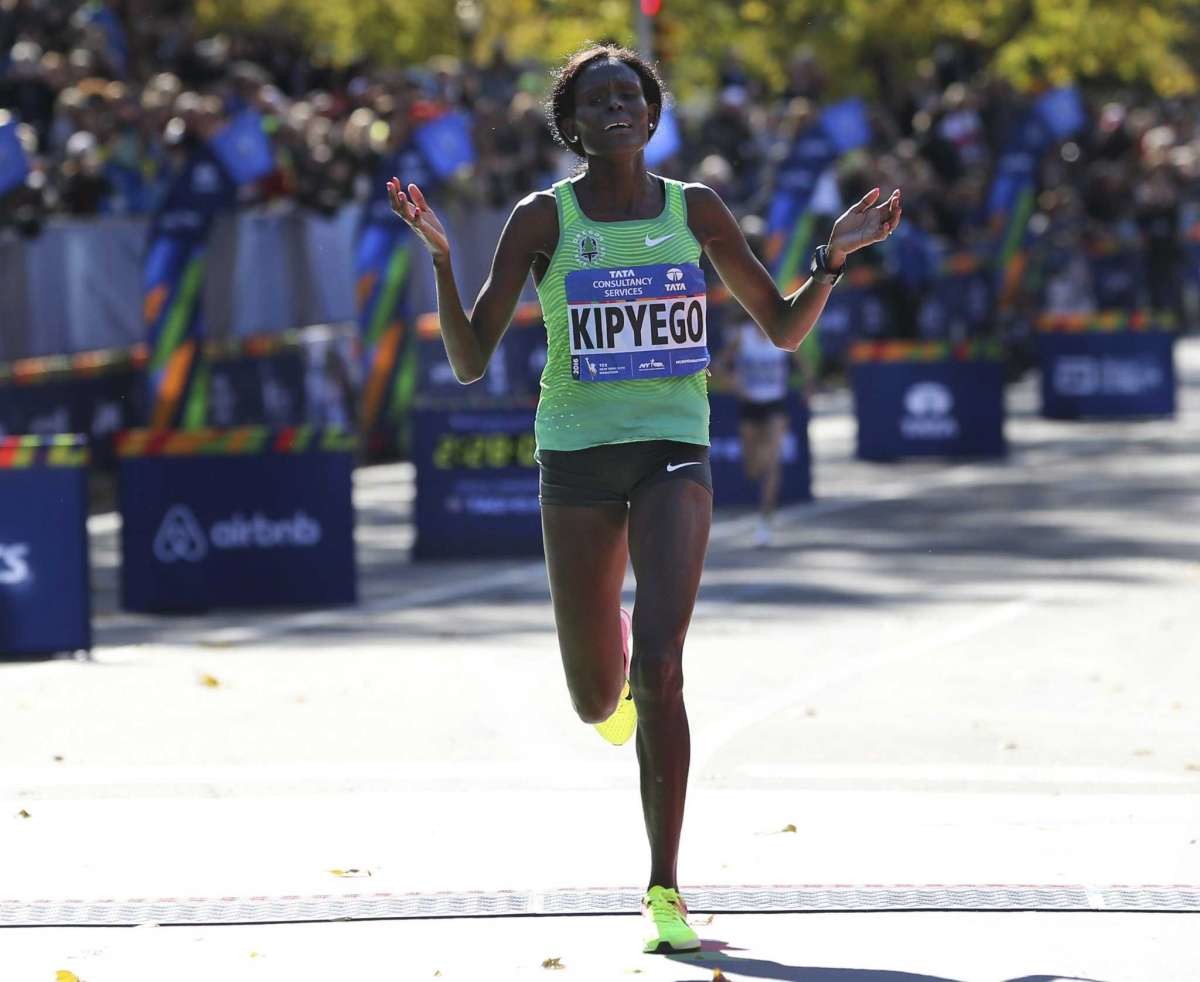
Some may think that is an ambitious goal for a 2:25 marathoner who was only third at the US Olympic Trials. After all, it has been over five years — when she was 5th in the 10,000 at the 2015 Worlds — since Kipyego has been competitive in a global championship. But those numbers don’t tell the whole story.
For one, Kipyego, who at 35 is two years younger than Sara Hall, feels she has yet to demonstrate her full potential at 26.2 miles, going so far as to say, “I haven’t really quite gotten a good marathon in.” Kipyego was second in the first marathon she finished, running 2:28:01 in New York in November 2016, but she was way back of winner Mary Keitany who ran 2:24:26. Shen then missed all of 2017 after giving birth to daughter Emma, and it took her longer than expected to get back to top form after her pregnancy.
It was not until the fall of 2019, when she ran 2:25:10 in Berlin, that the world began to catch a glimpse of the Kipyego of old, and she is confident in the training she has stacked together since then. But that still leaves a second problem: can Kipyego possibly get into medal shape given the current state of women’s marathoning? Of the seven fastest women in history, five have set their personal bests (all 2:17:45 or faster) since the start of 2019, led by Brigid Kosgei‘s 2:14:04 world record in Chicago.
“We’re talking about championships,” Kipyego says. “When it comes to championships, they’re not the same as major marathons, for example. You can still be competitive in a championship because you’re not running 2:14 or 2:12 marathon pace. If the race is being run at 2:20, most of us can be able to put themselves there. So I believe that if I can get — and I’m trying to get myself into — 2:20 or sub-2:20 shape going into Tokyo, and I think if I am in that kind of shape, my chances are pretty good at medaling.”
(02/26/2021) ⚡AMP
by Jonathan Gault
Tokyo 2020 Olympic Games
Fifty-six years after having organized the Olympic Games, the Japanese capital will be hosting a Summer edition for the second time, originally scheduled from July 24 to August 9, 2020, the games were postponed due to coronavirus outbreak, the postponed Tokyo Olympics will be held from July 23 to August 8 in 2021, according to the International Olympic Committee decision. ...
more...Standard Chartered Singapore Marathon exits proceedings for World Marathon Majors status
The Standard Chartered Singapore Marathon's (SCSM) bid to join an elite club of races is over, race organiser The Ironman Group announced on Friday (Feb 26).
The Abbott World Marathon Majors (AWMM) series is an exclusive set of just six of the leading marathons in the world - Tokyo, Boston, London, Berlin, Chicago and New York City.
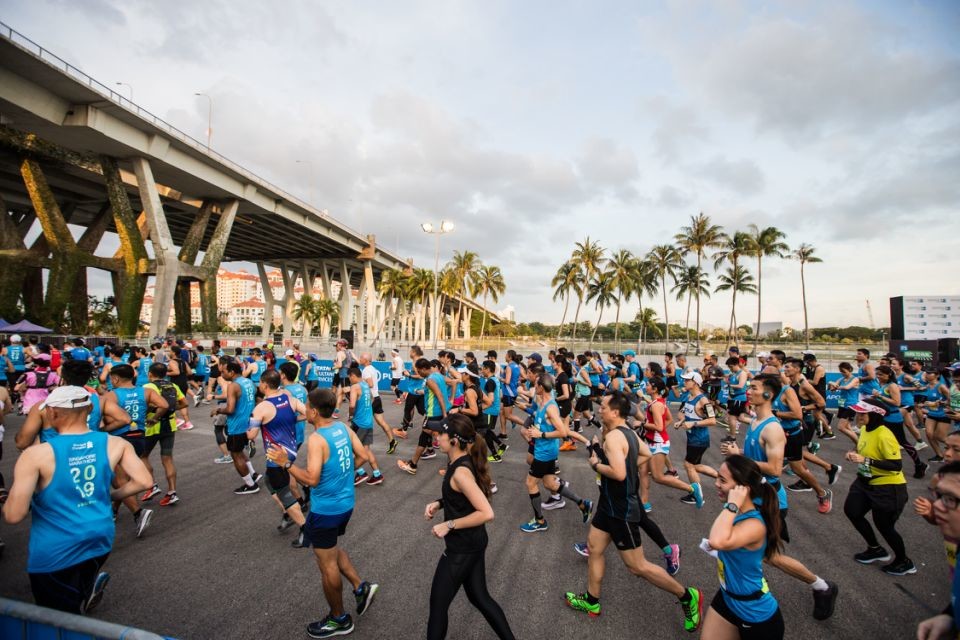
The Republic had put its hand up to join the series in 2017, the same year the AWMM inked an exclusive partnership with China's Wanda Sports Group to expand the series and develop marathon events worldwide.
According to a statement on the WMM website on Friday, two races - the Singapore Marathon and the Chengdu Marathon - had been "put forth" by Wanda to be considered for inclusion. However, in March last year, Wanda offloaded the Ironman Group for US$730 million (S$969 million).
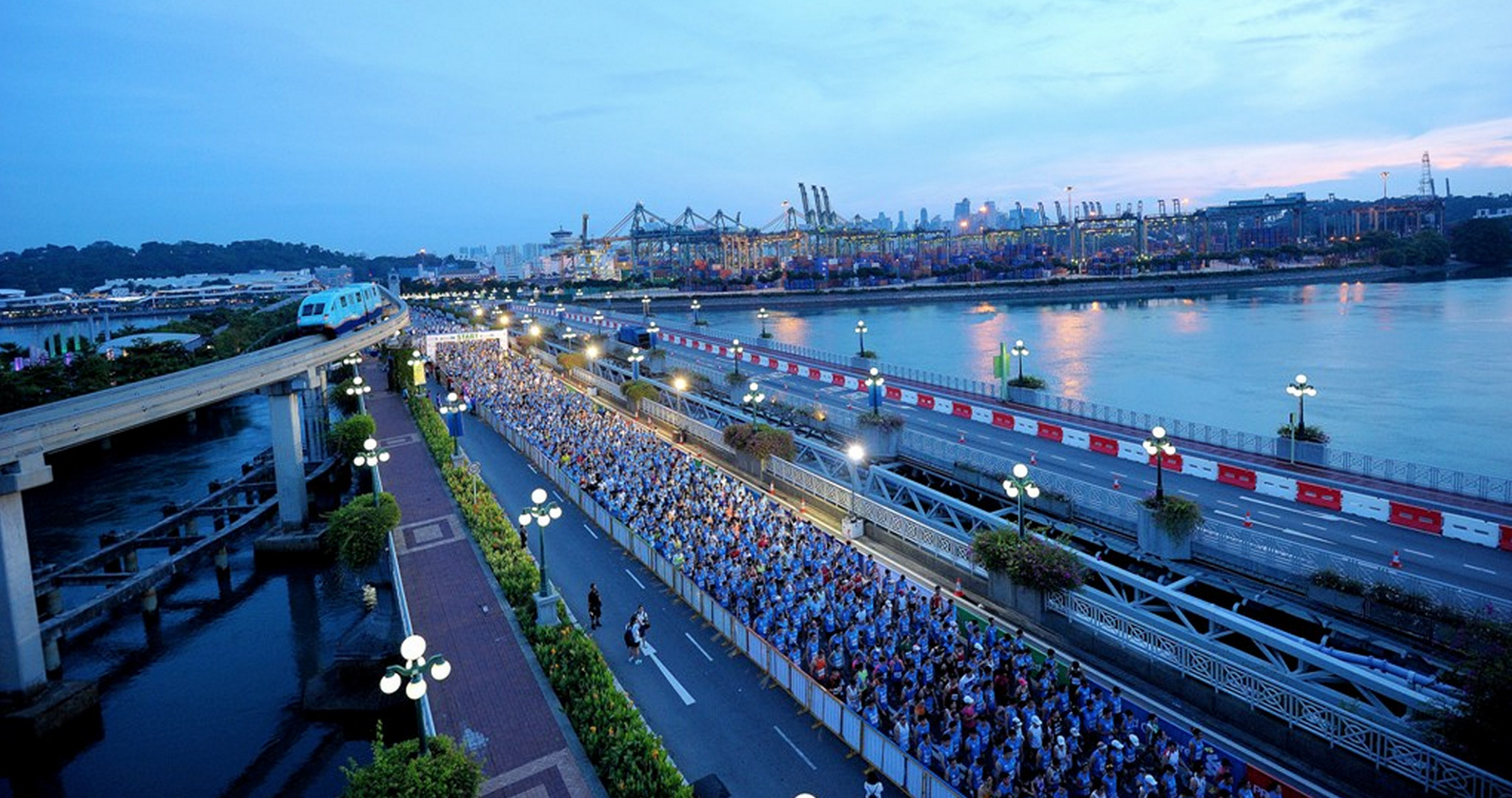
The WMM added: "Following the sale of The Ironman Group (who operates the Standard Chartered Singapore Marathon) by the Wanda Sports Group, the Singapore race is no longer a part of that candidate process. Wanda Sports Group has the exclusive right to put forward these races."
The decision, noted national sports agency Sport Singapore and the Singapore Tourism Board in a statement, was "commercial".
The Singapore Marathon typically attracts close to 50,000 runners annually. It is the nation's largest mass participation sports event and in 2019 - the last year it was held in the physical format prior to the arrival of the Covid-19 pandemic - the event saw 70,000 spectators line local streets to cheer participants on.
Despite the disappointment, the Ironman group said it "remains committed to delivering world-class race experiences and will continue its efforts in producing a signature event for the global running community". It declined to reveal how much it had invested in its attempt to attain AWMM status.
Sport Singapore and the STB also pledged to continue backing the event and to "continue to develop the SCSM as a world-class World Athletics Gold Label race for Singaporeans and our global participants".
(02/26/2021) ⚡AMPSINGAPORE MARATHON
The Singapore Marathon is an annual international marathon race which is held in December in the city of Singapore. It is an IAAF Gold Label Road Race. It has grown significantly since its inaugural race in 1982 – the 2013 event attracted a total of 60,000 entrants for all categories. There are four separate categories of competition: the full marathon,...
more...Organizers call for participants to run the Virtual National Cherry Blossom Festival, March 20 – April 11 wherever they are
While this year’s in-person Credit Union Cherry Blossom Ten Mile Run, 5K Run-Walk and all the usual race weekend activities have been postponed until September 10 – 12, 2021, race organizers have been busy planning for the upcoming Credit Union Cherry Blossom Ten Mile and 5K Virtual Runs that will coincide with dates of the National Cherry Blossom Festival, March 20 through April 11, 2021. Registration for the virtual runs is now open, and will remain open until through Friday, April 9. Runners are encouraged to browse the virtual run information on the Credit Union Cherry Blossom website for more information and a link to the registration page.
While it isn’t possible to allow dogs to participate in the in-person 10-mile and 5K events, dog-loving runners are encouraged to register both themselves and their favorite dog(s) in the Virtual Run. Dogs run for free, but dog lovers can dress up their pups with doggie scarves and dog collars, and celebrate their achievement with “My Dog Ran CUCB VR” car magnets available for purchase on the event website by March 10. In addition, intense competition is expected in the voting to be held for cutest dog picture at the conclusion of the Virtual Run.
“Initially, we were doggone disappointed to have to cancel our in-person event for the second year in a row,” said Event Director Phil Stewart, “but we’re doing all we can to be COVID-safe while encouraging runners, notably those with dogs, to get out and celebrate the cherry blossom season and the spirit of the National Cherry Blossom Festival wherever they are. Virtual Run participants are encouraged to run 10 miles or 5K in local areas that showcase cherry blossoms at their peak, and they will be able to upload cherry blossom photos with their race results.”
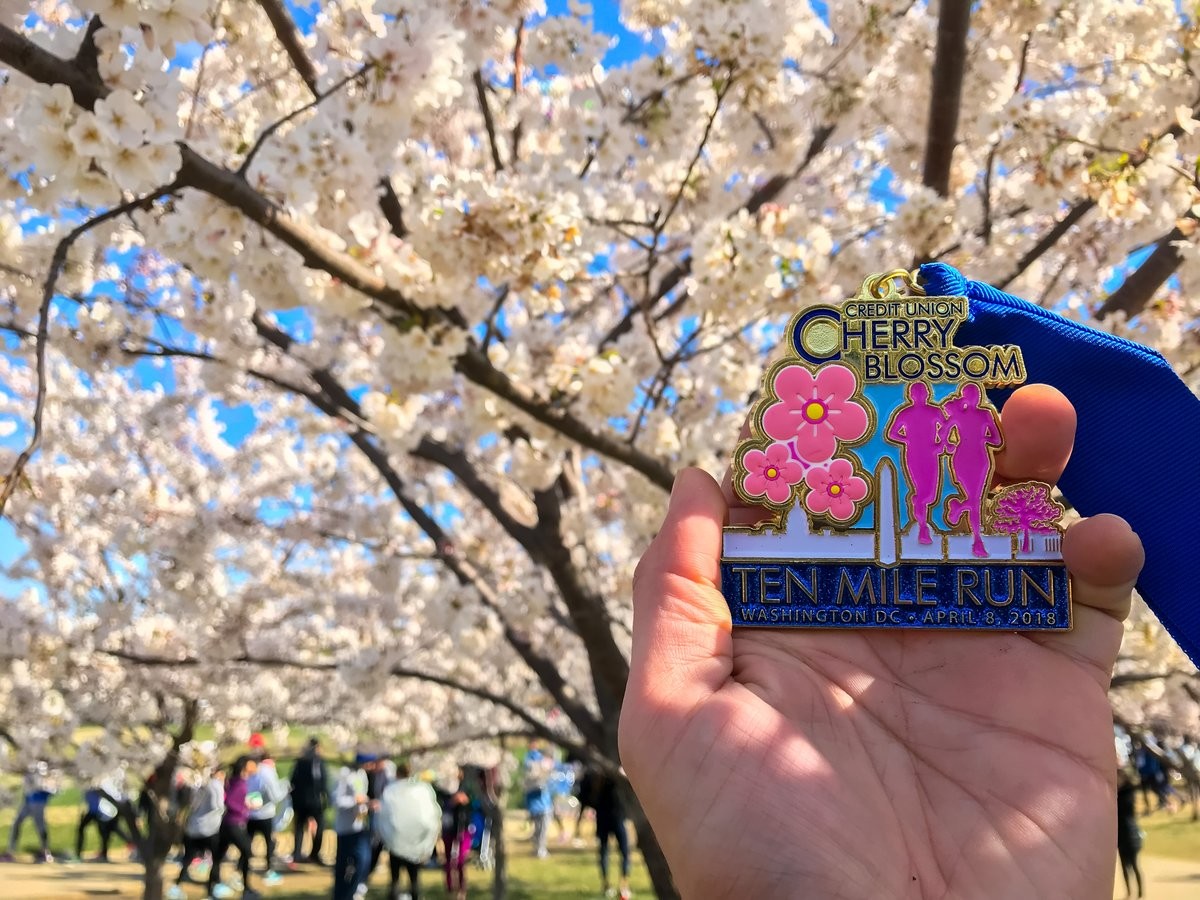
The ten best photos, as judged by event organizers, will be posted on the Credit Union Cherry Blossom website and social platforms for an open-to-the-public vote for the most scenic cherry blossom locale. Prizes will be awarded to the top three vote-getters
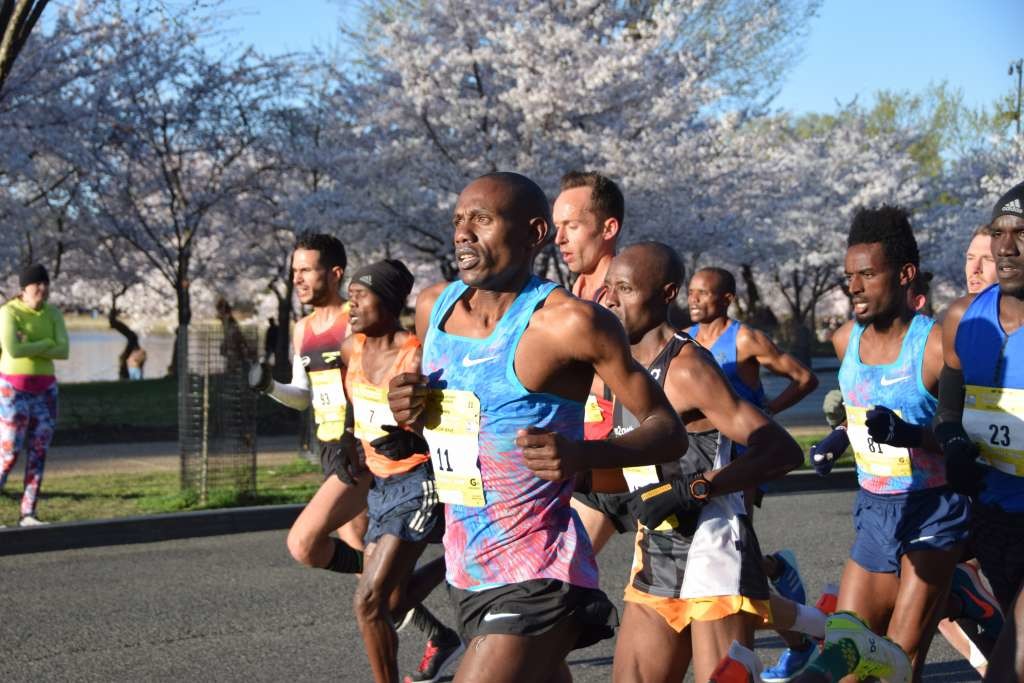
The entry fee for the Virtual Run is $35, which includes a specially designed Virtual Run cotton t-shirt and a Virtual Run medal featuring our unique Virtual Run t-shirt art. Runners who would prefer to receive an ASICS technical performance shirt can purchase an upgrade for $20.
Both the Credit Union Cherry Blossom Virtual Run March 20 – April 11 and the in-person events scheduled for September 10 – 12, 2021, serve as important fundraising opportunities for Children’s Miracle Network—our official charity partner—and Virtual Run participants are strongly encouraged to set up their own personal pages to raise funds to provide cutting-edge health care to children in their own communities using this link.
The 2021 Credit Union Cherry Blossom Virtual Run this spring and September’s in-person events will celebrate the 20th year of title sponsorship by Credit Union Miracle Day. Since 2002, over $10 million has been raised for the Children’s Miracle Network Hospitals, including $439,000 this year. Of that $439,000, $66,000 came from runners donating their entry fees instead of asking for a refund when race weekend in our Nation’s Capital was wiped out by COVID-19 last April.
(02/26/2021) ⚡AMPCherry Blossom Ten Mile Run
The Credit Union Cherry Blossom is known as "The Runner's Rite of Spring" in the Nation's Capital. The staging area for the event is on the Washington Monument Grounds, and the course passes in sight of all of the major Washington, DC Memorials. The event serves as a fundraiser for the Children's Miracle Network Hospitals, a consortium of 170 premier...
more...High school indoor meet held in parking garage?
High school track teams in New York state haven’t had many opportunities to race this indoor season. Some indoor tracks have been closed this year, and the main, most famous venue — The Armory in New York City — is currently being used as a COVID-19 vaccination centre.
With few options and an empty schedule, coaches at a high school in Suffern, N.Y., about an hour north of NYC, came up with the out-of-the-box idea to host a track meet in a parking garage. Surprisingly, other teams got on board, and the Palisades Center Underground Track Series was born.
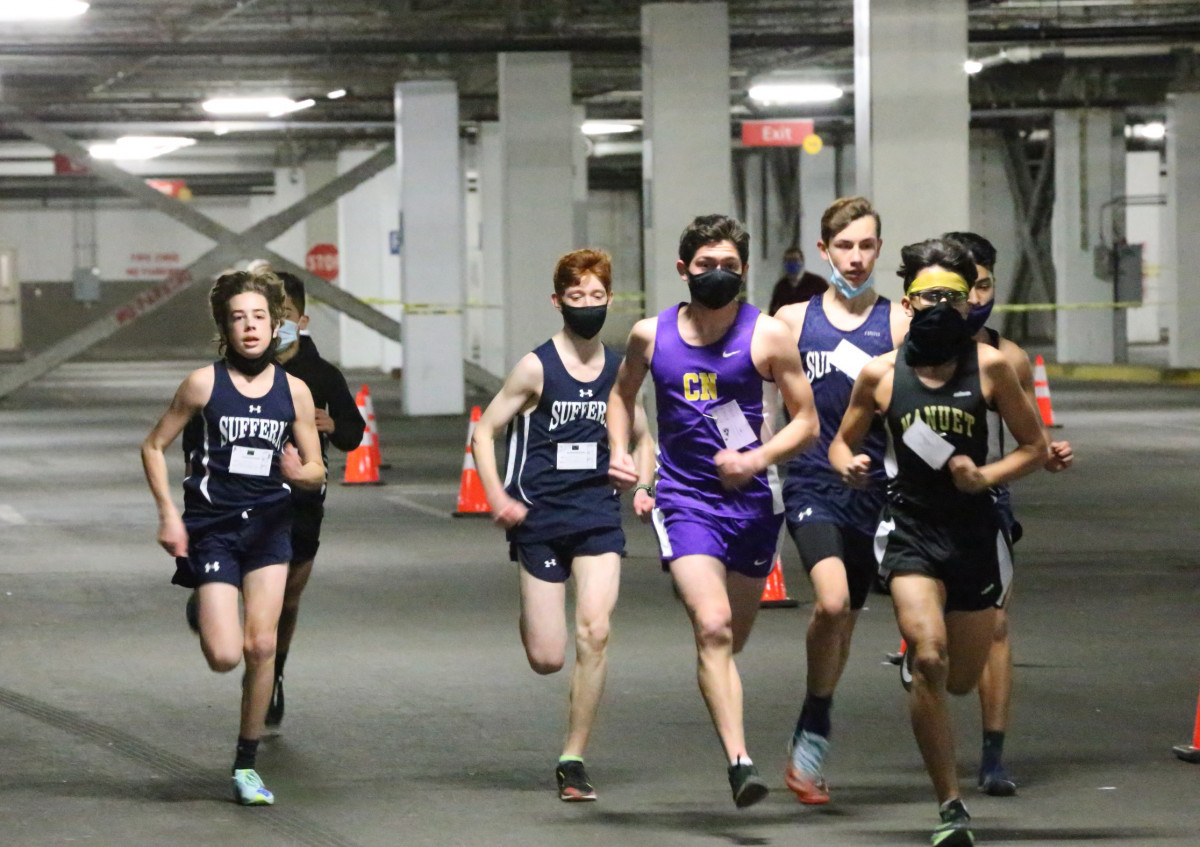
According to dyestat.com, suffern High School assistant track coach Steve Pashley came up with the idea and pitched it to Jeff Dempsey, the team’s head coach. Pashley told Dempsey about the Palisades Center, a mall in nearby West Nyack with a four-level parking garage that hasn’t been in use for several months. (The mall has remained open during the pandemic, but customers have only had access to the facility’s above-ground parking lot.)
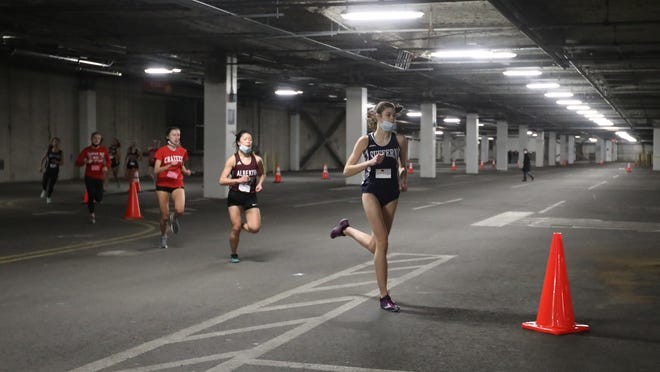
Pashley and Dempsey reached out to the Palisades Center staff, and although they were hesitant at first, the meet was eventually given the go-ahead. “The lot … is an enormous space,” Dempsey told dyestat.com. “You could do five 200m tracks in there.”
Dempsey and Pashley ultimately decided on a 300m loop for the races, and they included a 220m space where athletes could warm up. With the green light from the mall, final approval from the school district and a course laid out, the meet was ready to go, and four other high schools sent teams to compete.
The meet was hel on February 17, and 122 athletes showed up to race in 14 different events. There were runs as short as 55m up to 3,200m, plus boys and girls 4 x 300m relays. After the success of the first meet, a second was held on February 20, and the Palisades Center Underground Track Series was officially born.
Pashley and Dempsey said they aren’t sure if the series will continue much longer, as their school district has voted for the indoor track season to end on February 28. Even if they can’t run any more meets this season, the Palisades Center will always be a solid backup plan in the years to come if real indoor tracks are ever unavailable.
(02/25/2021) ⚡AMPby Ben Snider-McGrath
Victoria Marathon Flush Virtual Series will be run in addition to the in-person race, assuming it can go ahead as scheduled in October
Organizers of the Royal Victoria Marathon have announced the launch of several new virtual events. The lineup of races, dubbed the Royal Flush Virtual Race Series, will feature five distances that can be run from May to September.
The in-person Royal Victoria Marathon is still scheduled for October 10, although organizers cannot guarantee it will go ahead as planned.

The Royal Flush includes a mile run, a 5K, a 10K, a half and a full marathon. Participants can choose to run just one of the events, two (a pair) or all five (which would be the official Royal Flush). If an individual signs up for multiple runs, they can complete them whenever they please, whether that’s all in the same week or months apart.
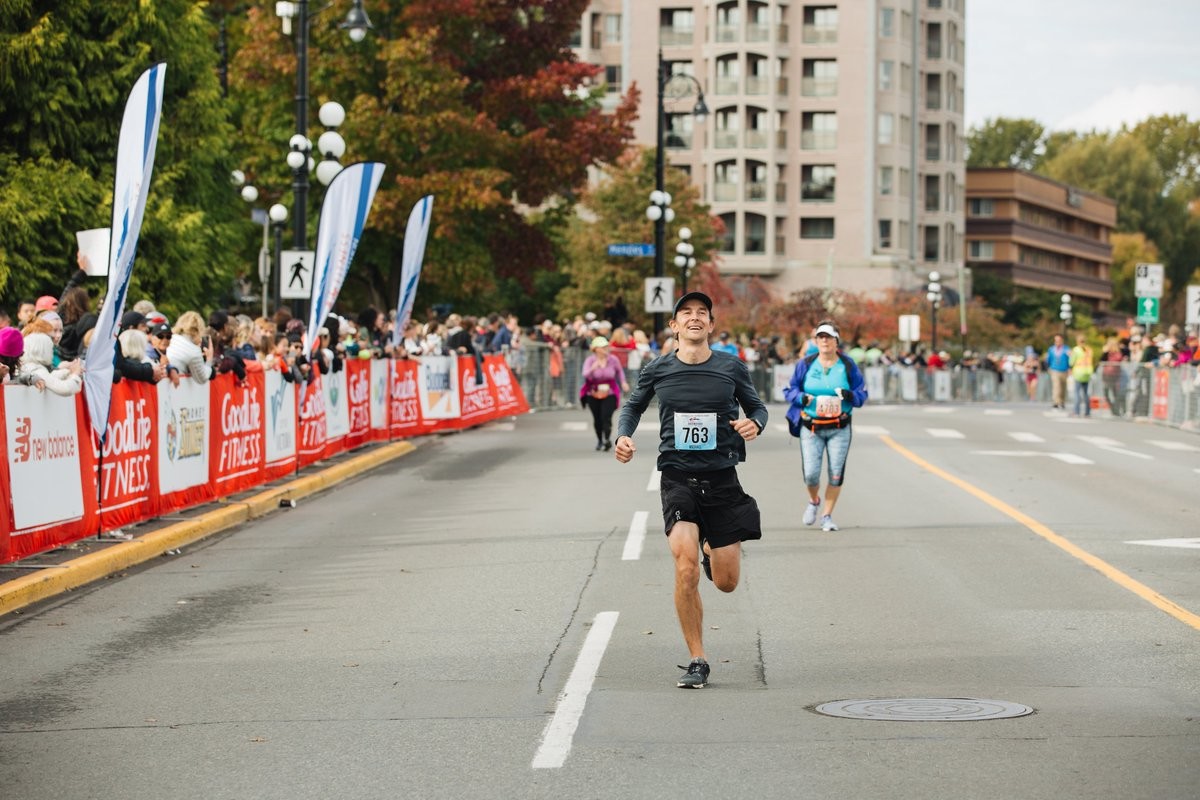
"I wish we could guarantee that we were going to be at the same start line on October 10,” says Royal Victoria Marathon race director Cathy Noel. “However, we are going to be able to keep everyone moving and motivated for five months as they participate in five different event distances and collect great swag.”
The contents of each participant’s swag bag is dependent on which races they choose to run, but race shirts, medals, bags, buffs and more will be sent to runners across the country after registering for the event. Everyone in the Royal Flush will also receive a special medal for running all five races.
Registration for the Royal Flush Virtual Race Series is open from now until the end of May.
(02/25/2021) ⚡AMPby Ben Snider-McGrath
Royal Victoria Marathon
We are one of Canada's premier running event, offering athletes an unmatchable running experience on the pristine West Coast. Our world-class, record-breaking course is designed by runners, for runners. As the only Certified Boston Qualifier on Vancouver Island, come join us to compete, to conquer and to move from warm-up to reward. ...
more...Kenya has banned its athletes from taking part in the Kilimanjaro Marathon in Tanzania this weekend, because of growing concerns over the spread of the pandemic in the host country
Athletics Kenya announced it would not permit its runners to participate in the event at the foothills of Africa's highest mountain "due to the global outbreak and spread of COVID-19".
But officials voiced more specific concerns about the spread of the disease in Tanzania, where the Government has been criticised for downplaying the seriousness of the pandemic and refusing to take tough measures against it.

"We have to protect our athletes," a senior official at Athletics Kenya told The Nation.
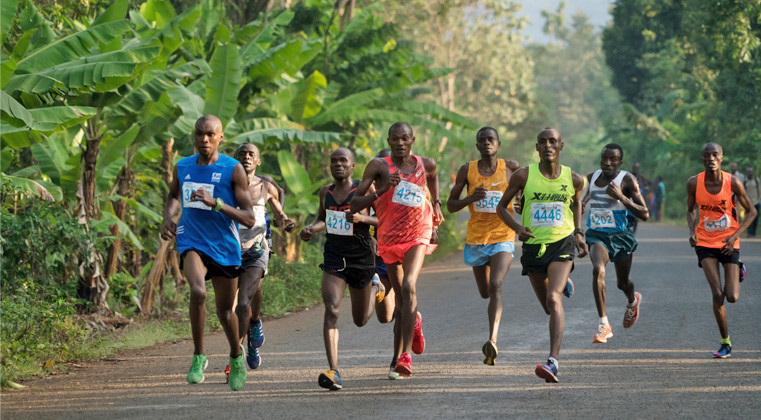
"If we allow them to compete in the Tanzania race, and they contract the virus, it will be easy to transmit it to other Kenyan runners back home."
Last week Tanzania’s President John Magufuli - who has insisted the disease can be defeated with prayer - conceded it was still circulating, revealing some of his aides and family members had contracted COVID-19 but had recovered.
World Health Organization director general Tedros Adhanom Ghebreyesus last week appealed to Tanzania to take "robust action" against the disease, after several travellers from the country tested positive.
On Monday (February 22) the United States issued a "do not travel" warning to Tanzania, due to the spread of the virus.
Kenyan male and female runners have enjoyed a clean sweep in the the last three editions of the Kilimanjaro race, which takes place in the northern town of Moshi near the border with Kenya.
Tanzania last gave case figures for coronavirus infections in April 2020, when it reported 509 cases.
(02/25/2021) ⚡AMPby Mike Rowbottom
Kilimanjaro Marathon
Situated south of the equator – in Tanzania – at 5 895 metres, this is Africa’s highest mountain and the highest free standing mountain in the world (as it is not part of a mountain range). Huge permanent glaciers flow down from the summit, and the sheer presence of this huge mountain dominates the entire area. An icon in Africa,...
more...Caster Semenya has filed an application to the European Court of Human Rights in a final bid to overturn rules preventing her from defending her Olympic 800m title
The double Olympic and three-time world champion last year saw her appeal to Switzerland’s supreme court dismissed against a Court of Arbitration for Sport ruling in 2019 that upheld controversial World Athletics rules for female runners with differences of sexual development (DSD).
Those rules prevent Semenya and other DSD athletes competing internationally at distances from 400 meters to the mile unless they lower their levels of testosterone through medication or surgery - something Semenya says she will not do.
On Thursday, the South African confirmed an application has now been filed to the European Court of Human Rights, as she continues to try different routes to have the regulations overturned following two appeal failures.
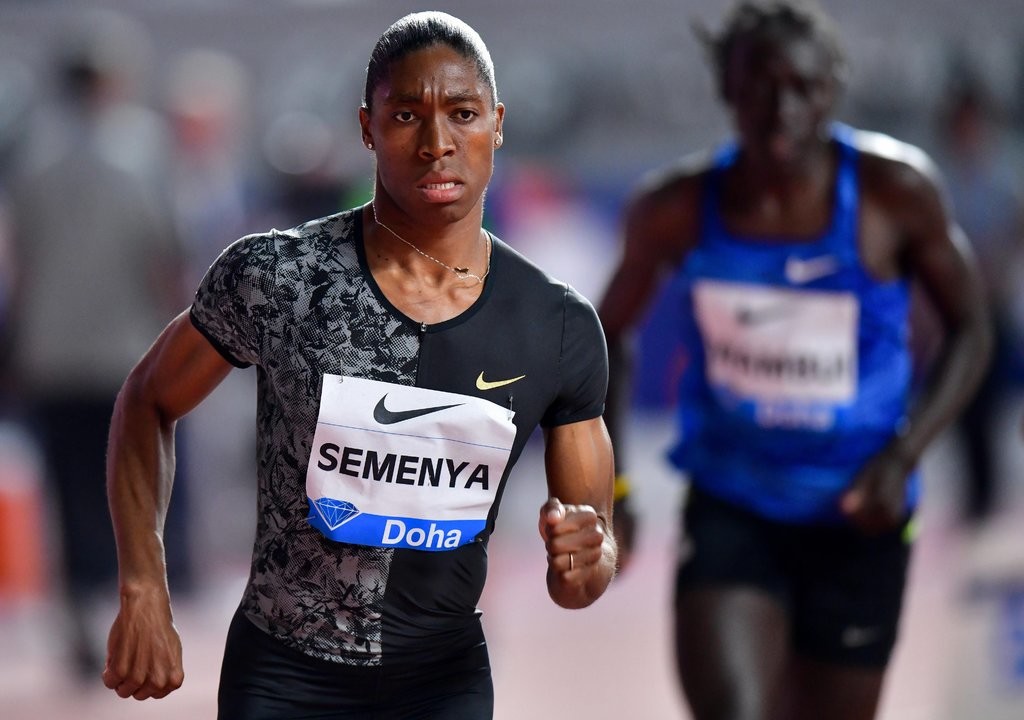
“I hope the European court will put an end to the longstanding human rights violations by World Athletics against women athletes,” said Semenya.

“All we ask is to be allowed to run free, for once and for all, as the strong and fearless women we are and have always been.”
Semenya’s team of lawyers, who span South Africa, France, Britain and Canada, said: “While the timeline of the application remains to be determined by the court, Caster remains ever hopeful that she will soon be allowed to return to the starting line in the 800m at international competition.
“Caster’s indomitable spirit continues to be a source of inspiration to all those fighting alongside her for the equality and dignity of women throughout the world.”
Even if the court disagrees with both the Court of Arbitration for Sport and Switzerland’s supreme court by ruling that World Athletics’ regulations should be overturned, it seems highly unlikely such a decision would be made before the upcoming Tokyo Games given the short time frame.
Last year, Semenya announced her intention to try and compete over 200m - a distance for which she would not need to take any medication - in Japan, although she ranked just 165th in the world in 2020 despite many leading athletes skipping the year due to the coronavirus pandemic.
Speaking when Semenya initially announced her intention to take the case to the European Court of Human Rights last year, World Athletics said: “For many years World Athletics has fought for and defended equal rights and opportunities for all women and girls in our sport today and in the future.
“Throughout this long battle, World Athletics has always maintained that its regulations are lawful and legitimate, and that they represent a reasonable, necessary and proportionate means of ensuring the rights of all female athletes to participate on fair and equal terms.
(02/25/2021) ⚡AMPby Bem Bloom
Kenya's Olympics Marathon team has been named
The 2020 Valencia Marathon winners Peres Jepchirchir and Vincent Kipchumba have been included in Kenya’s marathon team for the Tokyo Olympic Games.
Making the announcement Tuesday, Athletics Kenya senior vice president, Paul Mutwii, disclosed that Kenya will be represented by four athletes each in the men and women’s categories.
Jepchirchir, the World Half Marathon champion and Half Marathon World record holder, now joins World Marathon champion, Ruth Chepngétich, Marathon World record holder, Brigid Kosgei and multiple World champion and 2016 Rio de Janeiro Olympic 5,000m gold medalist and 10,000m silver medalist, Vivian Cheruiyot.
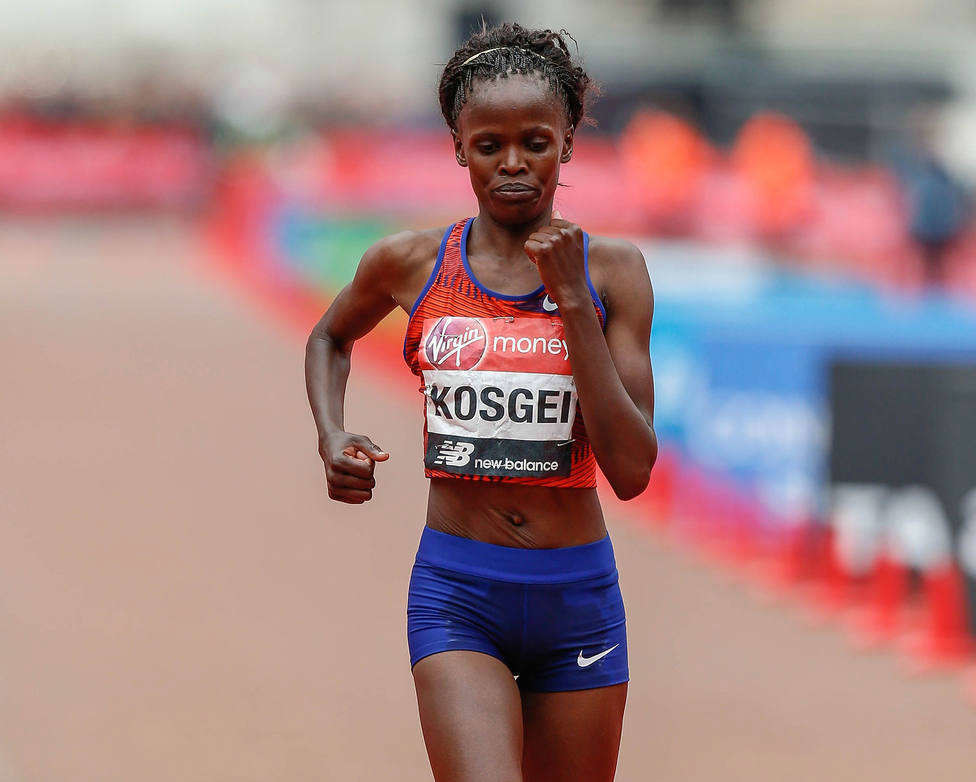
Kipchumba will team up with Olympic Marathon champion, Eliud Kipchoge, World Marathon bronze medallist, Amos Kipruto and 2019 Boston Marathon winner Lawrence Cherono.
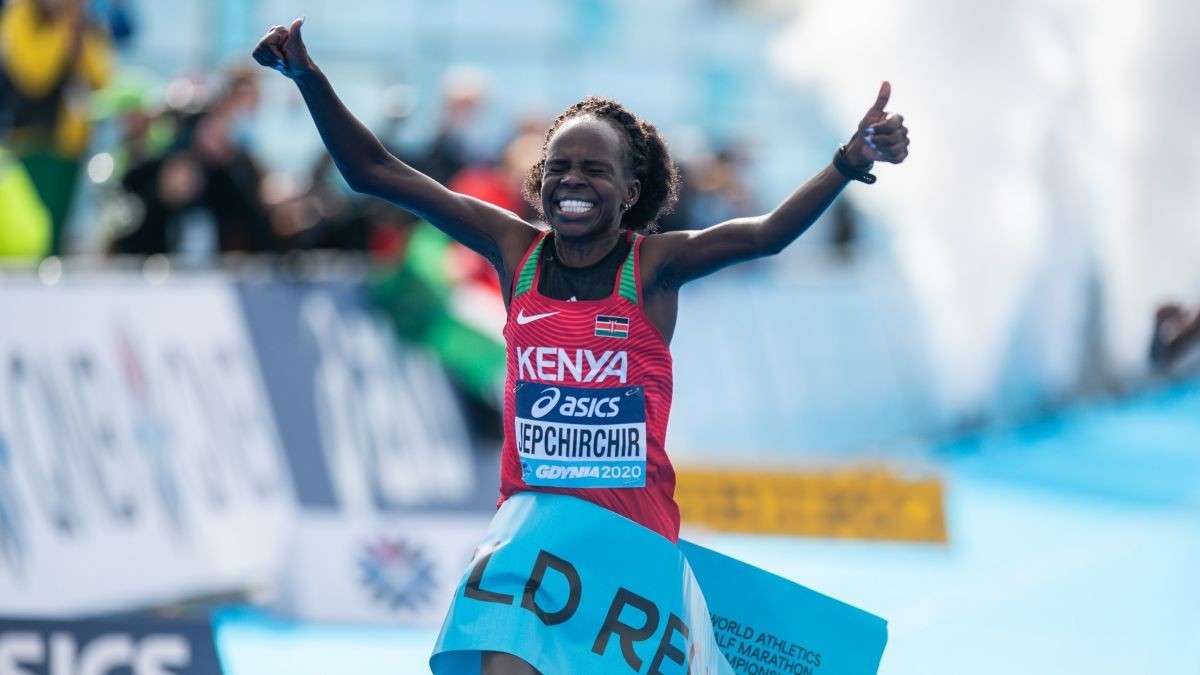
Four athletes, who were named as reserves in the original team that was named in January last year before the Tokyo Olympics were postponed owing to the Covid-19 pandemic, have been dropped.
They are Valary Ayabei and Sally Chepyego in the women’s team and Titus Ekiru and Bedan Karoki in the men's side.
Asked why they have settled on four athletes in each team, Mutwii said: "It's a decision we have made and we are certain they will deliver outstanding victories."
The delayed Summer Olympics will be staged from July 23 to August 8, but while the track and field events will be held at the Olympic Stadium in Tokyo, the race walk and marathon events will be at Odori Park in Sapporo, 1,167.7km from the Japanese capital.
Kenya won both the men and women’s Olympics marathon titles with disgraced Jemimah Sumgong going for the women’s gold medal at the 2016 Olympics.Sumgong has since been banned for a doping offence.
Mutwii disclosed that they will liaise with the National Olympic Committee of Kenya (NOC-K) on how best to prepare the team.
“The athletes can continue training individually before we roll out soon,” said Mutwii, adding that NOC-K had instructed them to prepare sprinters for an early camp.
(02/24/2021) ⚡AMPTokyo 2020 Olympic Games
Fifty-six years after having organized the Olympic Games, the Japanese capital will be hosting a Summer edition for the second time, originally scheduled from July 24 to August 9, 2020, the games were postponed due to coronavirus outbreak, the postponed Tokyo Olympics will be held from July 23 to August 8 in 2021, according to the International Olympic Committee decision. ...
more...Six former UTMB champs are on the start lists for the famed ultramarathon's comeback in August
The 2021 edition of the Ultra-Trail du Mont-Blanc (UTMB) is still months away, but the fields for the August race are officially set. After UTMB organizers cancelled their event in 2020 due to COVID-19, any race would have been exciting to watch this year, but fans will be treated to a pair of stacked lineups in the men’s and women’s fields.
With six former UTMB champions and many other world-class runners set to race in Chamonix, France, later this year, the storied 170K ultramarathon looks like it will be can’t-miss action.
The women´s race
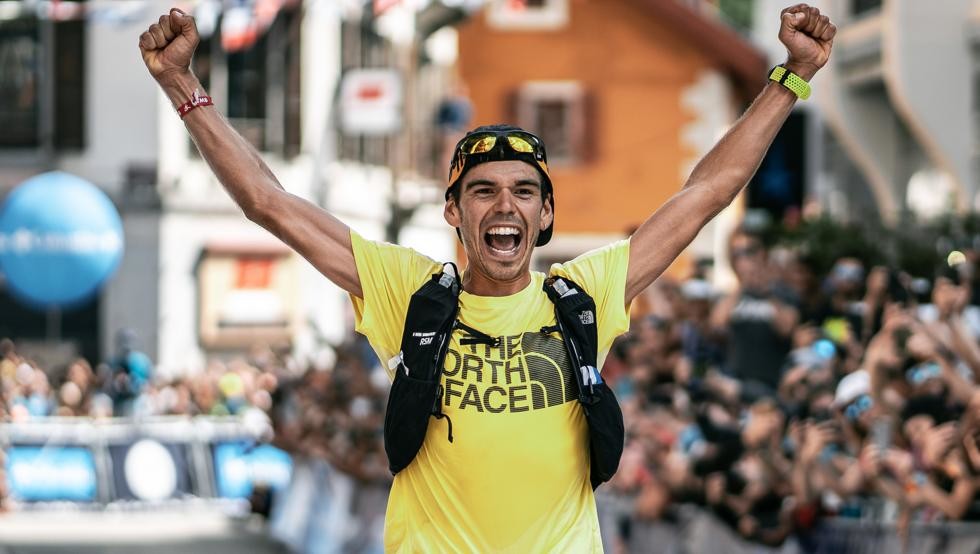
Former UTMB champs Courtney Dauwalter of the U.S. and Francesca Canepa of Italy headline the women’s race. Dauwalter is the reigning UTMB champion after her win in 2019, which was her first time running the race. She is widely recognized as one of the best ultrarunners on the planet, and she will be extremely tough to beat in Chamonix.
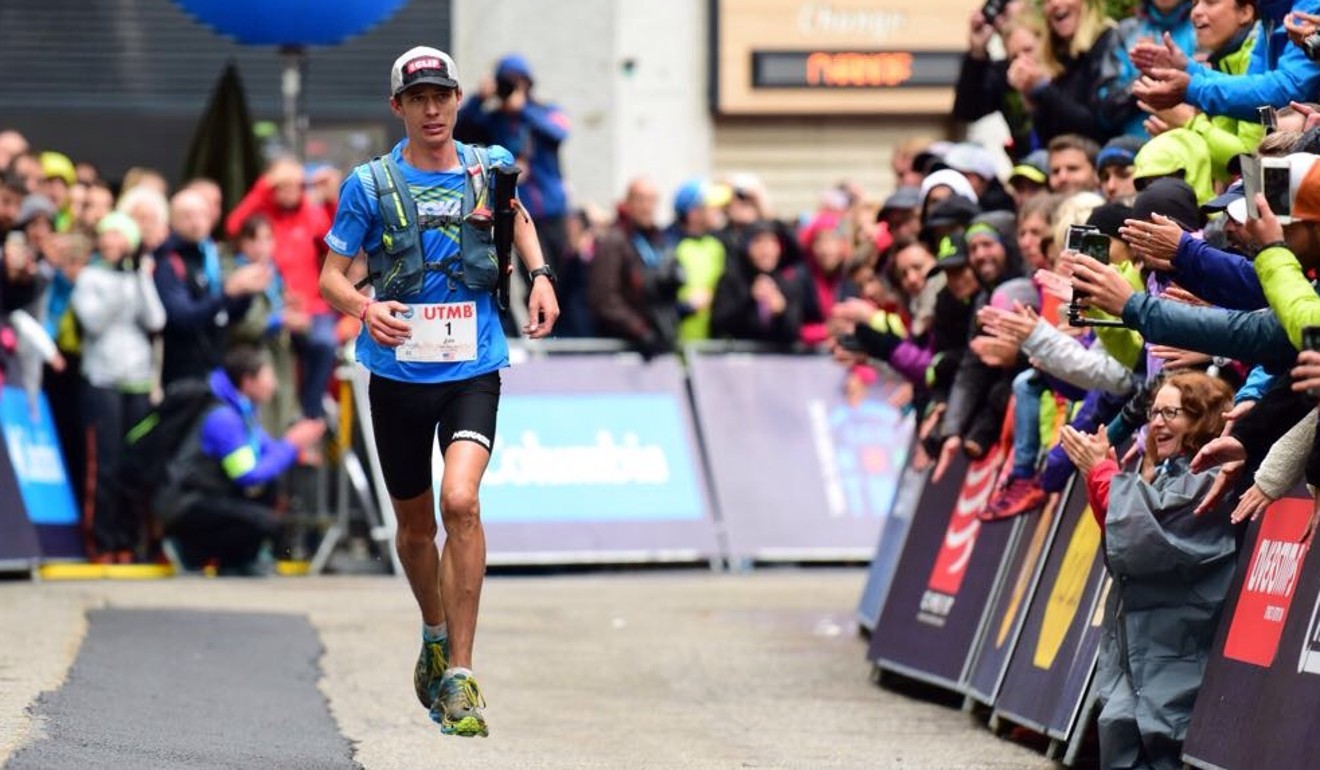
Canepa won the women’s UTMB crown in 2018, and she also placed second in 2012. Other former top UTMB finishers on the start list for 2021 include Japan’s Kaori Niwa (fourth in 2017 and the winner of the 2019 Oman by UTMB 170K ultramarathon), Uxue Fraile Azpeitia of Spain (three-time UTMB podium finisher) and Beth Pascall of the U.K. (fourth- and fifth-place finishes in 2018 and 2019).
Multiple world record holder Camille Herron is also set to race in Chamonix. She has won ultramarathons around the world, including the Comrades Marathon in South Africa in 2017 and the Tarawera 100-miler in New Zealand in 2019, and she certainly has what it takes to win or place high in the overall UTMB standings.
Alisa McDonald
Is the lone Canadian in the elite Camille Herron is also set to race in Chamonix. She has won ultramarathons around the world, including the Comrades Marathon in South Africa in 2017 and the Tarawera 100-miler in New Zealand in 2019, and she certainly has what it takes to win or place high in the overall UTMB standings.
The men’s race
On the men’s side, there are four former UTMB winners: Pau Capell of Spain (winner in 2019) and French athletes François D’Haene (won in 2012, 2014 and 2017), Ludovic Pommeret (won in 2016) and Xavier Thévenard (won in 2013, 2015 and 2018). The past eight UTMB crowns belong to these four men, and they’re all capable of extending that streak to nine straight this year.
Jim Walmsley and Tim Tollefson are the top two American hopes on the men’s side. Tollefson made the UTMB podium in 2016 and 2017 with a pair of third-place finishes, while Walmsley has only raced in Chamonix once, running to fifth place.
As Walmsley showed recently in a 100K world record attempt (he ran 6:09:26, missing the record by 12 seconds), he is in incredible shape this year, and while August is still months away, he has to be considered a favorite.
Also on the start list is the U.K.’s Damian Hall, who finished in fifth at the 2018 edition of UTMB. Hall is coming off a fantastic year of running that featured several prominent FKTs, and although he hasn’t raced in a while, he shouldn’t be counted out come August.
Finally, Canada will be represented by Mathieu Blanchard. Born in France, Blanchard now lives and trains in Montreal. He has raced in Chamonix before, running to a 13th-place finish in 2018, and in 2020 he ran onto the podium at the 102K Tarawera Ultra race.
(02/24/2021) ⚡AMPby Ben Snider-McGrath
North Face Ultra Trail du Tour du Mont-Blanc
Mountain race, with numerous passages in high altitude (>2500m), in difficult weather conditions (night, wind, cold, rain or snow), that needs a very good training, adapted equipment and a real capacity of personal autonomy. It is 6:00pm and we are more or less 2300 people sharing the same dream carefully prepared over many months. Despite the incredible difficulty, we feel...
more...Running has positive effects on muscle and bone health
Physical activity and exercise are important parts of the overall strategy for improving the health of your bones and the strength of your muscles. While participating in running has positive effects on muscle and bone health, it is important that we develop and maintain a strong musculoskeletal system that can provide us with support for the long run.Incorporate the following into your training routine to help keep your bones and muscles strong:
Incorporate Weightbearing Exercise
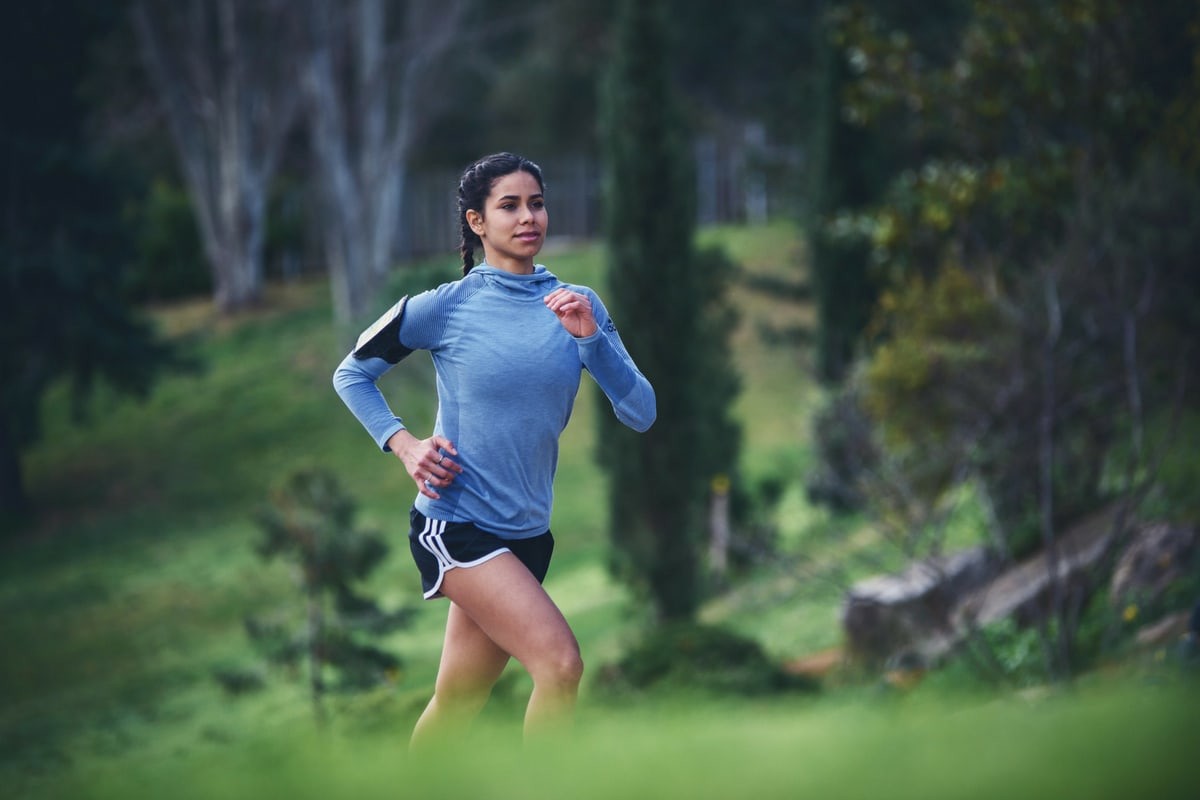
Every time our feet strike the ground, the impact causes a loading force on the bone, which encourages bone building. That’s why it’s important to engage in regular weight-bearing exercise at any age or fitness level.Moderate intensity activities such as walking and running have been found to have a positive effect on bone mass, but activities with high impact forces such as jumping, gymnastics, and a variety of ball and power sports cause a stronger bone response.
In general, you should aim to maintain a high level of weightbearing physical activity.

However, the activity selected must be appropriate to your current fitness level and safe for you to perform.
You can gradually work up to performing 30-60 minutes of weightbearing activities 3-5 times per week.
Incorporate a Strength-Training Program
Strength training is probably one of the most important things you can do for bone health and muscle strength. Strong muscles will help support your joints and bones while you are running. When the muscles are not strong enough to provide support, your joints and bones can get overloaded, which may increase the risk of injury.To get the best results from a strength training program you should consider:
Starting out by working on proper exercise technique with bodyweight exercises before adding external resistance. You can progress by gradually increasing the resistance as your muscles become stronger. Moderate to high intensity resistance training exercises have been shown to have positive effects on bone health.
Performing exercises that target major muscles groups at least 2 times per week. Allow for 24-48 hours of rest in between each resistance training session.
Including exercises that strengthen the core and hips. A strong core and strong hips will help you maintain proper postural alignment and provide you with support during the run.
Staying consistent. Improvements in strength and bone mineral density are not maintained when you discontinue to exercise.
(02/24/2021) ⚡AMPby Max Castrogaleas
The history of black running in America
Ted Corbitt laid the basis for measurement of road running courses in the USA and was the founding president of NYRR (New York Road Runners. He was black; and many assume he was the first black American endurance runner of historic importance.
Corbitt (1919–2007) was a formidable figure in long-distance running, but he was far from the first – or the only – notable African American long-distance runner. The history of black running in America dates back to at least the 1870s and is both rich and profound.
Gary Corbitt, Ted’s son, has spent years researching and writing about black American running and bringing many untold stories to life. He founded the Ted Corbitt Archive to preserve and highlight some of the amazing and almost forgotten stories of black American runners, coaches, clubs, teams, events, supporters and leaders.
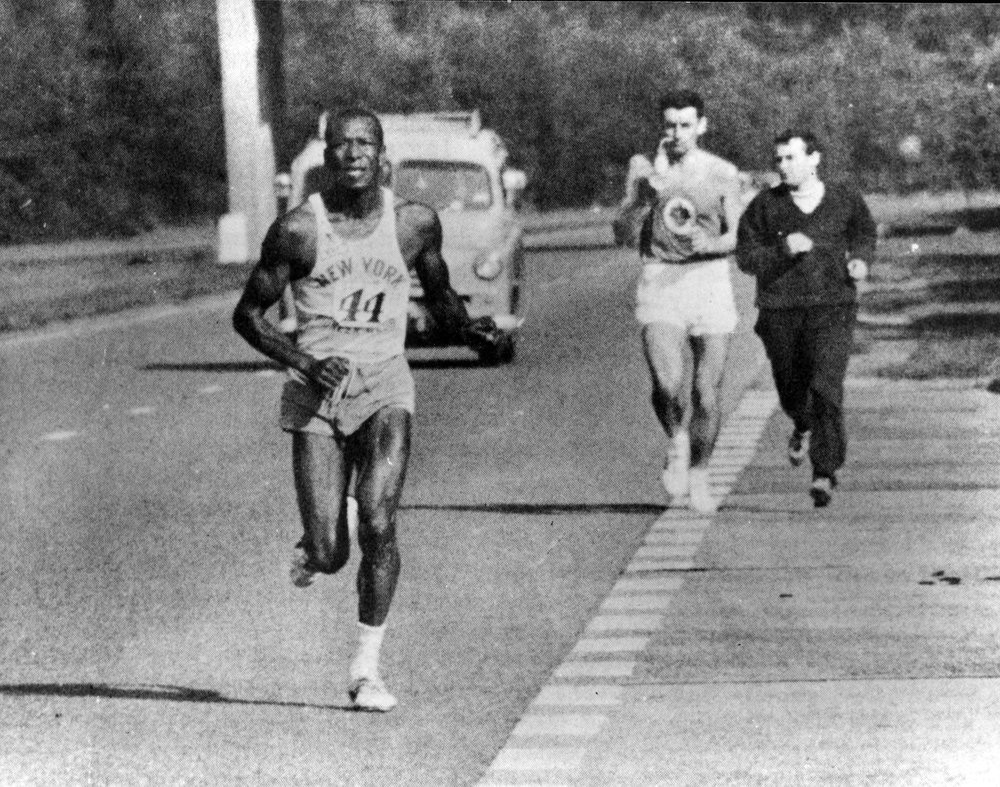
“My dad always told me he wasn’t alone – that there were other great black American long-distance runners,” says Gary. “I didn’t know how rich the story was until I started looking into it myself.”
Using books, articles, and a huge amount of primary documents, Gary created a “Black Running History 100 years (1880–1979)” timeline that spanned 100 years (1880–1979). “The work is not finished yet,” he says. “I have probably captured 75 percent of what is known from this 100-year period.”
He was inspired by a story his father told him about a letter he received from a young black runner. “The runner wrote that he wished he had known about my dad when he was in school and the coaches steered him away from long-distance running and into sprints,” said Gary. “If he’d had a black long-distance runner like my father as a role model, things might have turned out differently. I want today’s young black runners to know that they are part of a rich history and that they have many role models.”

Here are just a few of the highlights from the Chronicle. See tedcorbitt.com for more.
Frank Hart and the marchers (pedestrian) movement
In the late 1870s the most popular sport in the United States – and a few other countries – was pedestrianism: multi-day running and walking competitions over hundreds of miles, often on covered lanes in front of large crowds. Participants came from all walks of life and one of the most successful was a young black runner named Frank Hart (above, left). Born Fred Hichborn in Haiti in 1858 he moved to Boston as a teenager, worked as a grocer, and started running long distance runs to make extra money. He changed his name when he became a professional “walker” (pedestrian).
Hart won the prestigious O’Leary Belt Six Days at Madison Square Garden in 1880 completing an astonishing 565 miles – a world record. The runner-up, William Pegram, was also black. Hart’s success earned him fame and fortune; his image was featured on trading cards (the forerunner of baseball cards) nationwide, and he likely made over USD 100,000 in his lifetime thanks to the legal gambling that was at the heart of the sport and even allowed participants to wager on themselves.
Unfortunately Hart also endured racism, including heckling and physical harassment from viewers and snubs and slurs from his rivals. In the late 1880s baseball – with its rigid racial segregation policy – ousted walking in popularity. As an excellent all-round athlete, Hart joined a “Negro League Team” for a few years.
The spirit of the march (pedestrian) era inspired Ted Corbitt, who ran (and won) many ultra runs, completing 68.9 miles in 24 hours at the age of 82. “My father talked about running 600 miles in six days and walking 100 miles in 24 hours,” said Gary. “These were milestones from the marchers’ days, the meaning of which I only fully understood much later, after his death.”
Early NYC running clubs and marathon runners
Several black running clubs in NYC in the early 1900s, including the Salem Crescent Athletic Club, St. Christopher’s Club of NY, and the Smart Set Athletic Club of Brooklyn, showcased the talents of a generation of black runners at sprint to marathon distances.
In 1919, Aaron Morris of the St. Christopher Athletic Club finished sixth in the Boston Marathon in 2:37:13, making him the first known African American to run the race. At the 1920 Boston Marathon, Morris’ teammate Cliff Mitchell finished eighth in 2:41:43. Mitchell finished 13th in Boston in 1921, and another St. Christopher runner, John Goff, finished ninth that year in 2:37:35.
The New York Pioneer Club, which was founded in Harlem in 1936 by trainer Joe Yancey and two other black men, campaigned to give everyone interested and qualified regardless of race a chance. “It was an integrated running team that preceded the integration of professional sport,” says Gary Corbitt. Ted Corbitt joined the Pioneer Club in 1947 and in 1958 he and other members formed the core of the New York Road Runners.
Marilyn Bevans
Opportunities for female long-distance runners were few before the early 1970s. NYRR always allowed women as members and in its events, but the Boston Marathon excluded women until 1972, the same year that a women’s 1500m (less than a mile) run was added to the Olympic programme.
In the 1970s Marilyn Bevans of Baltimore emerged as the first competitive modern black American marathon runner. She was the first black American to win a marathon – the Washington Birthday Marathon in Maryland in 1975. She finished fourth in the 1975 Boston Marathon with a time of 2:55:52, making her the first black American to win a marathon run in under three hours. She completed a total of 13 marathons under three hours. Bevans later became a coach and is now in her 70s.
(02/24/2021) ⚡AMPby Gordon Bakoulis
Officials of Boston Marathon are encouraging people to run 2.23 miles in memory of Ahmaud Arbery
A year has passed since Ahmaud Arbery was killed in Georgia and Boston Marathon officials are urging people to honor him by walking or running 2.23 miles.
Arbery was fatally shot while running in a neighborhood outside the port city of Brunswick on Feb. 23, 2020.
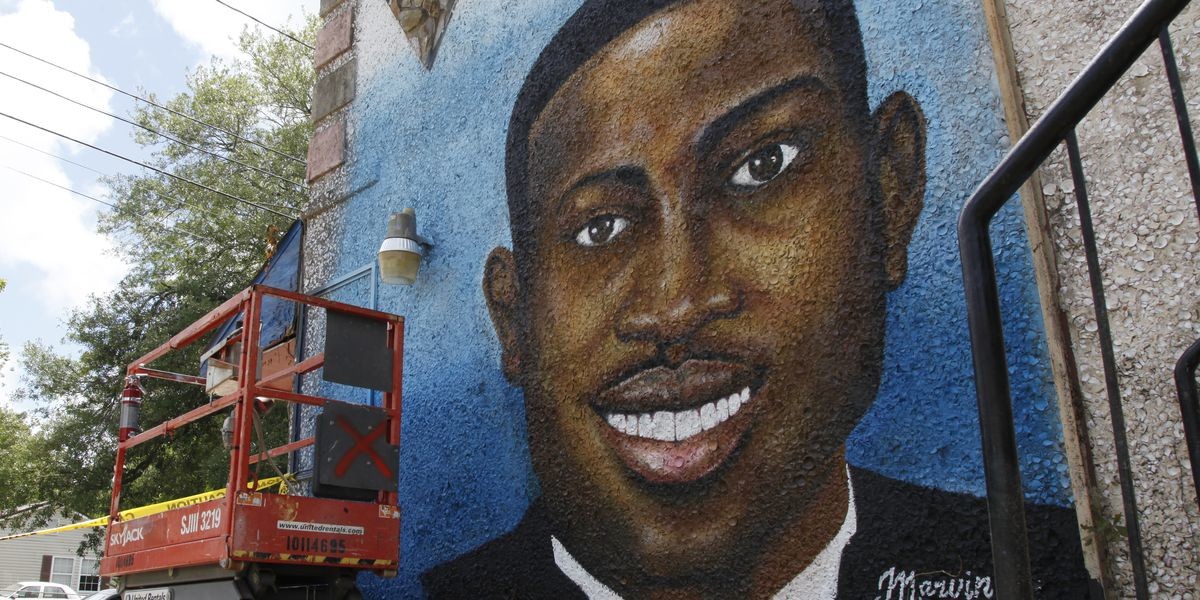
“We believe everyone should be able to advance their well-being by running safely & without fear or discrimination,” Boston Marathon officials wrote on Twitter.
Travis McMichael, his father, Greg McMichael, and neighbor Roddie Bryan are facing murder charges in connection with Arbery’s death.
(02/23/2021) ⚡AMPby 7 boston news
Boston Marathon
Among the nation’s oldest athletic clubs, the B.A.A. was established in 1887, and, in 1896, more than half of the U.S. Olympic Team at the first modern games was composed of B.A.A. club members. The Olympic Games provided the inspiration for the first Boston Marathon, which culminated the B.A.A. Games on April 19, 1897. John J. McDermott emerged from a...
more...Qualities to look for when you are trying to buy the right treadmill
When looking to buy a treadmill for your home, there are several key considerations that will impact your experience and exercise results. There are numerous treadmill brands, models, and features to choose from, but all have one main purpose: to assist you in achieving optimum fitness levels by running or walking at a comfortable speed with varying inclines and levels of resistance.
Have you been considering purchasing a home treadmill? Go ahead and take a glance at these tips before taking the plunge.
A Strong Motor
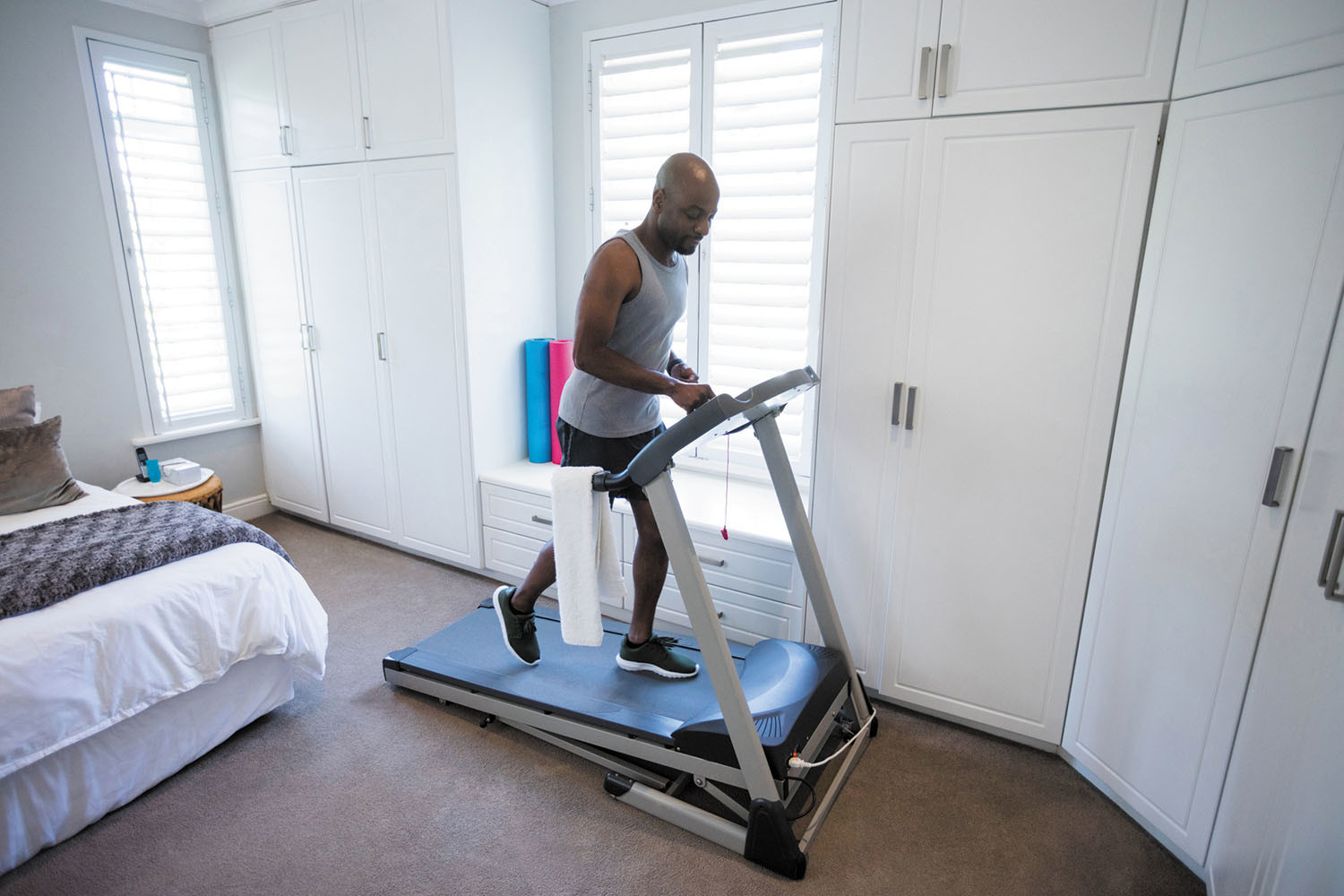
A treadmill has to have a strong motor for all the various speeds and inclines that you’ll push it to. A motor is obviously an essential part of what makes a treadmill work. The best way to think about the quality of your motor is in terms of horsepower. Just like a car, if you have a 2 HP or 3 HP motor should be enough to enable you to walk or run.
A Deck or Belt Size
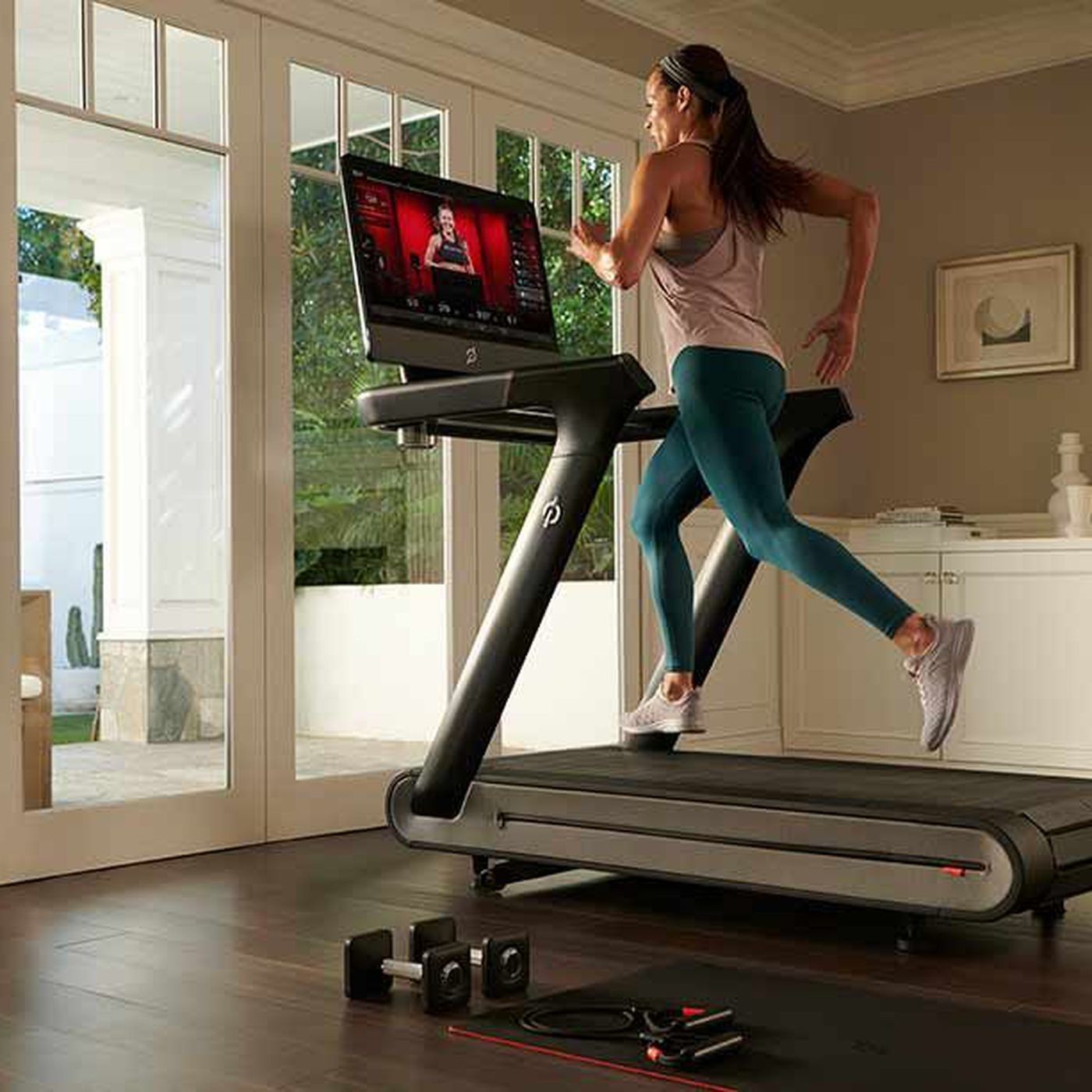
The deck or belt size of a treadmill is the distance between the inside edges of the walking surface. This measurement affects the space available to walk during workouts. Larger decks are better for taller users (while also being more expensive).
Sturdy Frame
A sturdy frame is an absolute must when it comes to fitness equipment. After all, one of the most important factors in a treadmill’s ability to run smoothly and safely is its frame. If your unit has wobbly wheels or moves around as you use it, this means trouble. It will shake, too, when it works – but that’s normal.
Emergency Stop Button
A treadmill is an effective and a medium to achieve fitness. However, this does not mean that they are all the same. Certain factors should be deliberated before the final purchase. The emergency stop button is one of the factors that come to mind when purchasing a treadmill machine.
This will quickly stop the belt in case of an emergency, like someone snatching a towel from you while you’re running and causing you to fall. The emergency stop button will come in handy so that you don’t have to keep one hand on the treadmill to make sure the speed stays low enough to not hurt yourself when the system comes to a halt.
Easy-to-use Buttons
Who wants to spend their time trying to figure out how to increase incline? No one frankly. And if you are looking to buy a treadmill, you probably also agree that easy-to-use buttons are essential! Ideally, the treadmill you buy will have a control panel that is easily accessible and user-friendly.
If you are looking for a treadmill in your own home, the control panel should be intuitive enough that someone who is not even into fitness can figure it out. The fitness geeks at https://fitnessmasterly.com say the best treadmills that are easy-to-use have are going to have buttons for the common things you will be using such as speed, incline, and selecting various workout programs. Simplicity is the ultimate sophistication.
Maximum Weight Rating
A good treadmill should be able to handle a lot of weight. You’re going to be on it a lot, sweating, and you want it to be able to handle your weight without wearing down too quickly. Obviously, larger people will require more support from the treadmill itself but everyone is different, and a good rule of thumb is to not have a maximum weight rating of between 200 to 400 lbs.
Easy to Maintain
Maintaining a treadmill is a must if you want it to last for years. You don’t want to spend hundreds of dollars on a quality machine and then have to put in hundreds more replacing parts here and there. The best way to make sure this doesn’t happen is to buy a treadmill that’s easy to maintain.
There are many factors to consider when shopping for a treadmill. One of the most important factors in choosing a treadmill that will last over time. Purchasing a poor quality treadmill will cause you to have to replace it prematurely. It can also lead to injuries caused by poor quality equipment. The best thing to do is go online and research the different treadmills that are on the market today. Always steer clear of any product that does not have a good warranty.
(02/23/2021) ⚡AMPby Colorado Runner
Natural energy boosters that you can add to your daily routine
Natural energy-boosting drinks are made from plants and do not contain artificial additives. Artificial energy boosters on the other hand contain caffeine, artificial additives, and added sugar. These ingredients can have a lot of undesirable side effects. For instance, the caffeine in artificial energy drinks can cause anxiety and panic attacks especially if you take too much of it. Irritability, insomnia, and palpitations in the heart are other side effects that can occur due to the excess caffeine that is found in artificial energy drinks. The caffeine in these drinks is not natural unlike that in natural energy drinks.
The added sugar in the energy drinks acts as a stimulator and these drinks may contain as much as 20 teaspoons of sugar in each drink. The number of drinks in these drinks can be more than the one in a bottle of Coca-Cola. This sugar gives you a temporary energy boost but it also comes with many side effects. For instance, the excess sugar triggers your brain to release dopamine which is also produced by addictive drugs and this can make you get a sugar addiction.

Sugar is also reported to increase the inflammation in the brain and trigger the release of a stress hormone called cortisone and this can lower your moods and make you feel sadder than normal. Since sugar also affects your brain function, you may have short concentration spans, reduced short-term memory, and the ability to learn and the sugar also puts you at risk of diabetes and other lifestyle diseases. Since natural energy booster drinks don’t contain these artificial additives, they do not give you these unwanted effects. This is why natural energy boosters are becoming more popular. Given below are some examples of natural energy boosters:
Guayusa Tea

Guayusa tea is an energy drink that comes from an evergreen tree called Camellia sinensis with caffeinated leaves mostly in the areas near the Amazon rainforest. Some of the areas where Guayusa grows are in the southern part of Colombia and the northern part of Peru. In Ecuador, there is an indigenous group called Kichwa that has used the Guayusa tea for more than a thousand years. The Guayusa tea is brewed like the normal tea.
Some of the benefits of Guayusa tea include providing energy and strength and therefore most people take it very early in the morning so that they can concentrate at work throughout the day. The Guayusa tea has been nicknamed the “night watchman” because hunters use it before they go hunting to help them stay alert. Other benefits of the Guayusa tea include improving concentration and focus and helping you to stay calm.
Matcha Tea
Matcha tea is also derived from the Camellia sinensis where these tea plants are covered for about 30 days to prevent direct sunlight. When the tea plants are covered, the amount of chlorophyll that they have increased, and therefore the plants get a green hue that is darker than the regular tea. This also increases the amino acid contents and these are building blocks for proteins. Upon harvesting, the leaves are separated from the stems and veins and then they are ground to make Matcha powder.
Some of the benefits of Matcha include alertness and mental focus, providing antioxidants that destroy the free radicals that cause chronic diseases. Matcha also enhances attention and memory and prevents damage to major organs like the liver and kidney. Matcha tea also reduces the risk of cancer, helps with weight loss, and boosts the health of your heart.
Green Tea
Green tea is made by pan-frying and steaming the leaves of the Camellia sinensis plant to heat them. These leaves are then dried. Drying of these leaves prevents them from turning brown and also preserves their green color and fresh taste. When the green tea is brewed, it can either be green or brown and it can have a toasted, steamed, sweet, or grass-like taste. The benefits of green tea include improving memory and concentration, helping with weight loss, reducing the risk of cancer, stroke, heart disease, and other chronic inflammatory conditions.
Turmeric Tea
Turmeric is a spice that is extracted from the plants of the Curcuma longa plant. Most of the turmeric supply comes from India but the plant is now being grown in many parts of the world. The turmeric powder or the grated turmeric root can be used to brew the turmeric tea. To ensure the purity and hygiene of your turmeric tea, you can grind the turmeric tea for yourself.
Some of the benefits of turmeric tea include boosting energy especially when you combine the tea with physical exercise, and anti-inflammatory properties therefore it helps in the treatment of inflammatory conditions like arthritis. Other benefits of turmeric include boosting the immune function because turmeric has some antioxidants. The tea can therefore help to fight bacterial, viral diseases. Turmeric tea also helps in the treatment of cancer, and liver diseases.
Yerba Mate
Yerba mate is a herb that is common in South American countries like Uruguay, Argentina, and Brazil. The tea is prepared in traditional gourds called “mate” where the yerba herb is grounded in. Coldwater is added to this powder to prepare an infusion together with hot water. A tea-like beverage forms when the yerba infuses into the water. The Yerba mate has caffeine which helps to stay alert and energized. Other benefits of Yerba mate include an increase in mental focus, weight loss, and enhancing performance in sports. The tea also helps to reduce inflammation.
Fresh Fruit Juices
Fresh juices are also important natural energy boosters. Some of the juices that you can take include orange juice and beetroot juice. Beetroots contain nitric acid which dilates blood vessels and improves the blood supply throughout the body while helping to reduce blood pressure. You can mix the beetroots with lemons and apples to increase the energizing effects. This is a drink that you can enjoy on a hot afternoon.
In summary, natural energy boosters do not contain the artificial additives that are in artificial energy boosters like excess caffeine and sugar. In addition to providing energy, natural energy boosters also have other benefits like reducing inflammation and free radicals in the body. These drinks have also been useful in the prevention of cancer and other chronic diseases like liver and kidney diseases. Some of the natural energy boosters include Guayusa tea, Matcha, green tea, beetroot juice, and turmeric tea.
(02/23/2021) ⚡AMPby Colorado Runner
Comrades Marathon created a Wall of Honor to commemorate the achievements of the Comrades runners
Organizers of the Comrades Marathon created a “Wall of Honor” back in 1993 as a permanent landmark to commemorate the achievements of the Comrades runners who covered the epic distance between Durban and Pietermaritzburg.
Building the Wall began in 1993 with plaques being available for purchase since 1994. It is constructed from interlocking blocks such as those commonly used for retaining walls. Runners who have successfully completed the Comrades Marathon can acquire their own building blocks to last forever. These are mounted on an attractive badge, which records the name, start number and personal status of the runner, which can be updated in later years.
The plaques are bought by runners, family members or friends on their behalf in order to give them away on special birthdays, anniversaries, Comrades milestones or other occasions. The Wall of Honor memorial pads cost ZAR 550 (EUR 30) per pad. This includes the block, the plaque and the engraving as well as the maintenance and care of the block and the site for posterity.

The wall is situated close to the halfway mark on the Comrades route, just outside Drummond. On a down run it would be on the left as you make your way through the valley of a Thousand Hills.

The stretch of road beside which the Wall of Honor is located is on the municipal boundary alongside PheZulu Game Private Park and has the potential to be extended for many years to come. It forms a retaining wall which now stretches over 200m long. Covered with green and yellow Comrades plaques there are now over 6000 of them, belonging runners who have successfully completed the Comrades at least once. They have placed their names on this wall to commemorate their race achievements. Runners who have earned their Permanent number (run Comrades more than 10 times) have a green plaque while those who have run less than 10 have a yellow plaque.
A runner who already has a plaque on the wall and has achieved their green number, double, triple or quadruple green number, can upgrade their plaque on the wall to reflect their prestigious status as a green number. The upgrade of the badge costs ZAR 275 (EUR 15). Only one block/badge per finisher is allowed. Plaques can be purchased retrospectively.
The first section of the wall is set aside and contains the plaques of former Comrades winners. The Comrades Marathon Association awards these to the winners starting from the first race winner, Bill Rowan, in 1921. On average about 500 runners a year are added to the Wall of Honor. Our virtual events don’t qualify for addition to the Wall.
(02/23/2021) ⚡AMPComrades Marathon
Arguably the greatest ultra marathon in the world where athletes come from all over the world to combine muscle and mental strength to conquer the approx 90kilometers between the cities of Pietermaritzburg and Durban, the event owes its beginnings to the vision of one man, World War I veteran Vic Clapham. A soldier, a dreamer, who had campaigned in East...
more...Aspiring Olympian, 10, Ayrton Alemao runs 9km a day to train for London Marathon
A 10-year-old boy who ran 21km in just over two hours has set his sights on the London Marathon.
Ayrton Alemao, from Gravesend, dreams of one day representing Team GB at the Olympics as a long distance runner.
After competing in two half marathons in the space of three months, Ayrton hopes his running ability will persuade organizers of the London Marathon to let him take part despite the age restriction.
The Peacock Street resident runs 7-9km six days-a-week after his training sessions with Dartford Harriers running club were cancelled due to lockdown.

In October, the aspiring athlete took part in his first 21km half-marathon and clocked in at 2 hours 15 minutes. He participated in his second event in December, also running 21km.
Ayrton has since booked his place for another half-marathon in March, which his mum, Karen Alemao, says he can't wait for.
Ayrton has since booked his place for another half-marathon in March, which his mum, Karen Alemao, says he can't wait for.
She said: "He started practicing long distance running with his dad in March last year. "Since then he's been building himself to work towards being able to run for about 7 to 9k, five to six days a week regularly, which he continues to do without a miss.
"Ayrton is looking forward to getting through the trials for the London Marathon, which is a struggle due to his age, but he is keen.
"He would love to train and run at the Olympics. That's his dream."
(02/22/2021) ⚡AMPby Will Payne
TCS London Marathon
The London Marathon was first run on March 29, 1981 and has been held in the spring of every year since 2010. It is sponsored by Virgin Money and was founded by the former Olympic champion and journalist Chris Brasher and Welsh athlete John Disley. It is organized by Hugh Brasher (son of Chris) as Race Director and Nick Bitel...
more...Toronto man John Yip looks to run every street in the city
When the COVID-19 pandemic first hit, John Yip needed an escape from his everyday life working as the CEO of Kensington Health, a nonprofit healthcare organization in Toronto. An avid triathlete with no races to train for, Yip decided on an individual challenge, and he began running all around Toronto with the end goal of covering every one of the city’s streets.
Now, close to a year later, he has run a little over 10 per cent of Toronto’s more than 10,000 streets (he tracks his progress on citystrides.com), and although he still has a long way to go, he is as motivated as ever to carry on with this project and chip away at the entire city.

Finding new routes

"I used to just do six set routes," Yip says. “I would choose routes that avoided traffic lights and busy roads.” This quickly changed after Yip began his every street project, and he soon found himself running in parts of the city he says he didn’t even know existed.
"I ever started to see things in my own neighbourhood, like 1k away, that I didn’t know were there,” he says. Early on in his project, Yip ran into work every day. After knocking off all the routes from his home to work, he began driving in early and running around downtown Toronto.
“I’m not just running the streets, but the laneways, too,” Yip says. Laneways are the narrow streets that branch off from the city’s main roads and access garages or backyards. “The laneways are named after historical figures or local people from the neighbourhood. There are Italian names, Jewish names, Asian names. It reflects the texture of the neighbourhoods of downtown Toronto.”
Yip says he tries to remember a few things from every run, like names attached to laneways, which he then looks up. He also records his runs through photography, snapping shots of graffiti he sees around the city. “The artwork stunning,” he says. “Take Graffiti Alley, for example. That’s about a kilometre-long strip of laneway near Spadina and Queen. It’s just wall-to-wall graffiti.”
A fresh perspective
Yip says he is part of a group of about a dozen runners working toward running every street in Toronto. “I haven’t met the bulk of these people, but we follow each other on Strava and comment on each other’s runs,” he says. “It’s created this community. We don’t care about pace, because we’re all exploring.”
Yip says he is far more interested in seeing and discovering new places than hitting a certain mileage or average pace. “I’d say 90 per cent of the routes I’ve run so far are completely new to me,” he says. “I had never seen these parts of Toronto before. Not driving, not cycling, not running — never.”
With every run, Yip posts his route on Strava and adds the photos he took along the way. “I just love looking back at the pictures and streets I’ve run,” he says. “The last 10 months have really shown me how vibrant the city really is.”
With close to 90 per cent of Toronto’s streets left to run, Yip’s project is far from complete, but he’s in no rush. He of course has his eyes on running the entire city, but the challenge was about giving himself a break from everyday stressors during the pandemic. “If there’s a silver lining for this past year, it’s that my world has opened up dramatically,” he says. “And as a result, it has given me daylight when it’s been dark since the pandemic started.”
To follow Yip’s progress, head to his CityStrides profile or check him out on Strava.
(02/22/2021) ⚡AMPby Ben Snider-McGrath
From going solo on balconies to running underwater for 42.2K, people have run the wildest and amazing ever run marathons
Running a marathon is a goal held by many people. It’s a big accomplishment that requires a lot of time and effort to complete, making it a worthwhile and rewarding pursuit. While running a marathon is impressive enough as it is, some people decide to take the classic race to the next level and add twists to it. There are many races and runs out there that fall under this category, but here are five of the best out-of-the-box marathons ever completed.
Underwater Marathon

In 2003, a British man called Lloyd Scott navigated the depths of Loch Ness in Scotland and worked through a 42.2K underwater marathon course. Prior to this run, Scott had completed several marathons on dry land wearing a 120 lbs deep-sea diving suit, and he finally decided to head underwater in 2003. Raising money to support children with leukaemia, Scott spent 12 days in Loch Ness, and he eventually made it to the marathon finish line.
Car marathon

In 2016, Ross Edgley (another British athlete) completed a marathon while pulling a car. In a challenge he dubbed the “World’s Strongest Marathon,” Edgley towed the 3,000 lbs Mini Countryman behind him along a Formula One race track in the U.K. The 42.2K slog took him more than 19 hours, but he made it to the finish line in one piece.
The Everest Marathon
While Scott´s and Edgley´s marathons are possible to recreate, they would take a lot of time and planning to get organized. One wild race that anyone can run (assuming you can get to the start line) is the Tenzing Hillary Everest Marathon on the world’s tallest mountain. Running a marathon is tough enough at sea level, but this race takes runners to new heights, and it starts at Mount Everest Base Camp (which has an elevation of more than 5,000m). There are also half-marathon and 60K options offered.
Balcony marathons
Before COVID-19, running a marathon on a balcony would have sounded ridiculous, but when the pandemic hit, many runners worldwide did just that. Lockdowns and quarantines forced people to stay indoors, but runners refused to let that stop them from getting in their daily mileage. One man ran 50K around his apartment in China, another runner covered 42.2K on his balcony in France and so many other people ran marathons in their backyards.
Kipchoge´s sub-two-hour marathon
Yes, Eliud Kipchoge‘s run at the INEOS 1:59 Challenge in 2019 was a regular marathon, but it was incredible, and it deserves a spot on this list. With his run, Kipchoge became the first person to break the two-hour barrier in the marathon, and he smashed it with a 1:59:40 showing.
(02/22/2021) ⚡AMP
by Ben Snider-McGrath
2021 Marine Corps Marathon offers early registration
Starting on Wednesday 24 February, MCM Runners Club members have a two-week early-registration window to enter the 46th Marine Corps Marathon (MCM) and the 2021 MCM50K.
Members of the MCM Runners Club – an exclusive group of runners who have finished the MCM five times or more – will be able to register and secure a spot in this year’s MCM and MCM50K prior to the general registration in March.
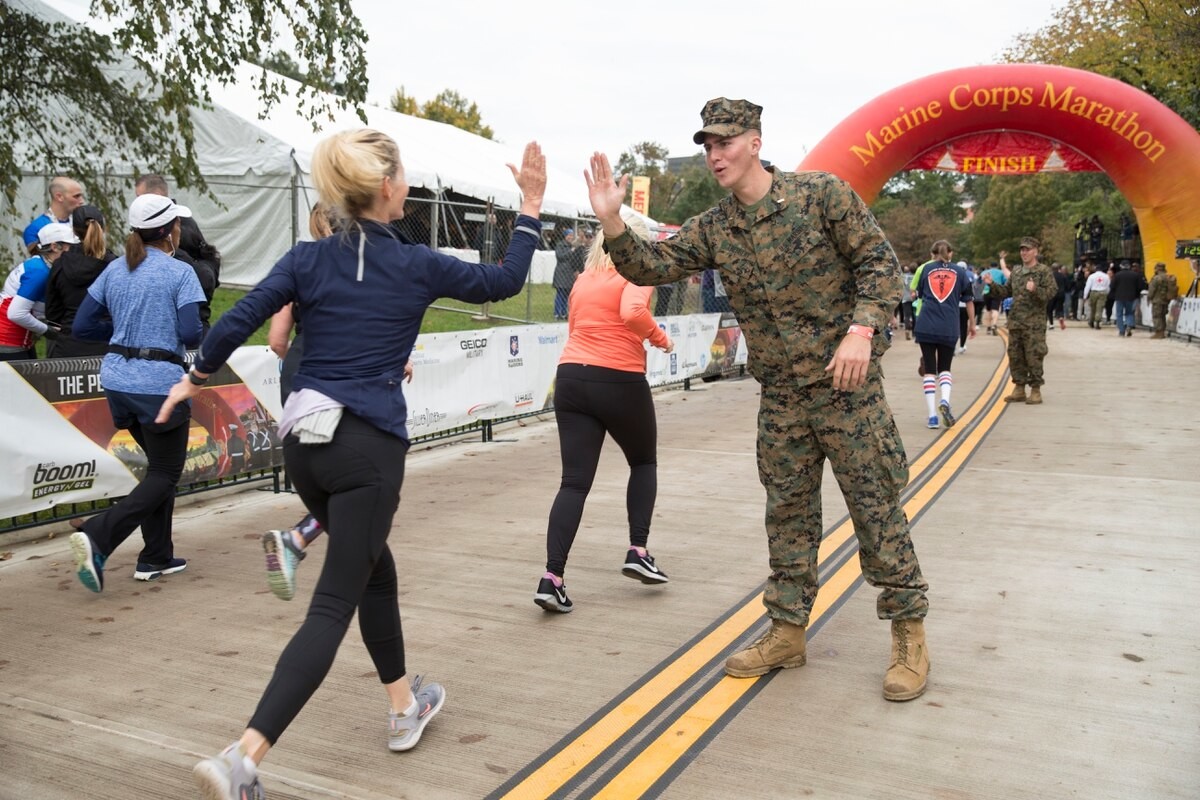
Currently, the 2021 MCM Weekend is scheduled as a virtual event with the possibility of a live version in October in accordance with local guidelines. Virtual entries are USD 55 (EUR 45) plus a processing fee and are available to runners ages 14 and older at www.marinemarathon.com.
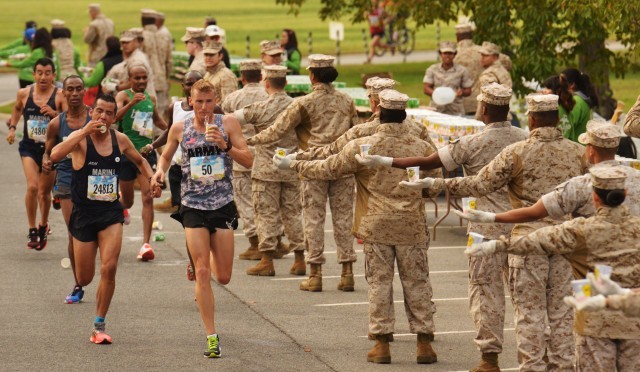
All MCM and MCM50K virtual participants will receive the official event shirt, a stunning finisher medal, patch, socks, digital bib and collectible bib delivered in a branded Mission Accomplished finisher box.
Registration for the virtual 46th MCM and MCM50K opens to the public on Wednesday, March 10 at 17.00 GMT via www.marinemarathon.com. Ambitious runners can once again sign up for the Semper Fidelis Challenge, a two-event challenge including either the Historic Half or the Devil Dog Double in May 2021 and the MCM or the MCM50K in October 2021, as well as the MCM Trifecta.
(02/22/2021) ⚡AMPMarine Corps Marathon
Recognized for impeccable organization on a scenic course managed by the US Marines in Arlington, VA and the nation's capital, the Marine Corps Marathon is one of the largest marathons in the US and the world. Known as 'the best marathon for beginners,' the MCM is largest marathon in the world that doesn't offer prize money, earning its nickname, “The...
more...Prefecture governor Tatsuya Maruyama wants 2021 Olympics and torch relay cancelled
The Tokyo Olympics have endured a lot of controversy over the last few weeks, but despite everything that’s been happening, there’s been no update on the status of the actual games themselves.
At present, the Games are still scheduled to begin on July 23, but with the global pandemic still in full swing, will they actually go ahead as planned? Will they be cancelled? Will they be postponed yet again? At the moment, all we can do is speculate.

One thing we may not need to speculate on, however, is the future of the torch relay. The relay is planned to tour all of Japan’s 47 prefectures over 121 days, finishing in Tokyo in time for the start of the Games. But recently the relay has been the subject of discussion, with popular comedian Atsushi Tamura withdrawing as a relay runner, and now Shimane Prefecture governor Tatsuya Maruyama planning on withdrawing any torch relay events from his prefecture.
Maruyama commented that he believed the Tokyo Olympics should be cancelled if the coronavirus situation doesn’t improve. He added that he would have no choice but to cancel the torch relay events, scheduled to happen in Shimane Prefecture in May.
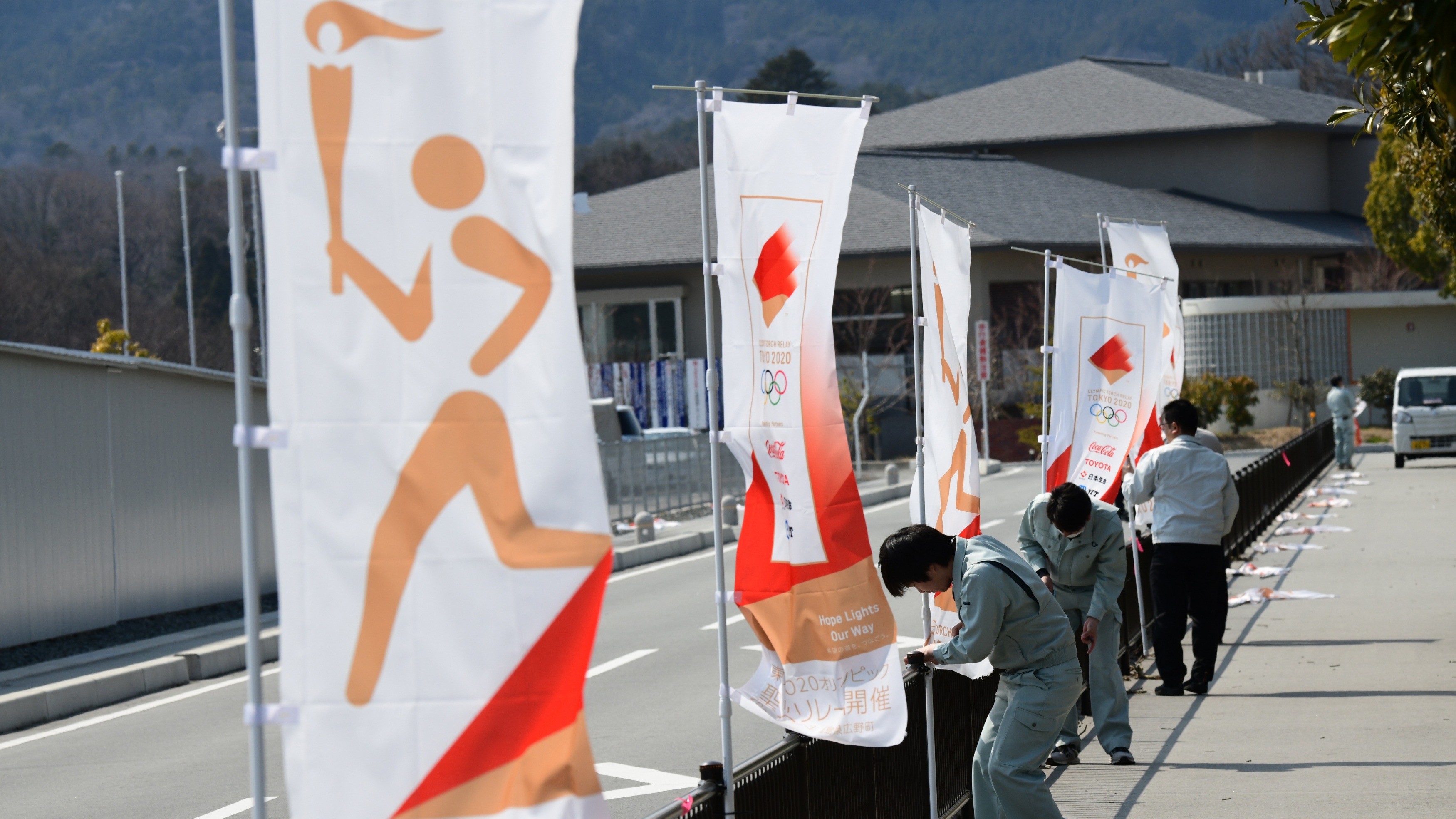
Upon hearing these statements, Liberal Democratic Party member and Shimane representative Wataru Takeshita commented:
“I’m confused by these comments. If this was coming from a prefecture with a lot of infected citizens, maybe I could understand. But Shimane is far from where most infections are happening. Other prefectures shouldn’t follow Shimane’s example. Now is the time to be getting everyone excited for the Olympics. The governor should be summoned and reprimanded for his remarks.”
“It’s the governor’s job to keep his citizens safe from coronavirus. It doesn’t matter about comparing corona rates, or if we should be ‘getting everyone pumped’ about the Olympics.”“Why don’t we just skip Shimane, if they’re being so uncooperative?”“Instead of reprimanding the governor, why don’t they try discussing it? What an old-fashioned way of thinking.”
A decision will need to be reached soon, as the torch relay is due to start on March 25 in Fukushima Prefecture. And while we wait for the final verdict to be made, we can always snack on an edible version of the Olympic Torch in Tokyo!
(02/22/2021) ⚡AMPby Katie Pask
Tokyo 2020 Olympic Games
Fifty-six years after having organized the Olympic Games, the Japanese capital will be hosting a Summer edition for the second time, originally scheduled from July 24 to August 9, 2020, the games were postponed due to coronavirus outbreak, the postponed Tokyo Olympics will be held from July 23 to August 8 in 2021, according to the International Olympic Committee decision. ...
more...Joe Handelman, the 90-Year-Old Runner Who Still Hits the Track Five Days a Week
Here’s a little inspiration if you need help getting out the door today.
Joe Handelman doesn’t like to miss his daily run. It’s only 30 minutes or so. Sometimes more, sometimes less. But for the 90-year-old from Cross River, New York, it’s his way of getting out and staying active, especially after suffering a massive stroke a decade ago.

Handelman has enjoyed the sport since the 1940s, when he ran cross country and track in high school. He went on to run collegiately at Princeton, where he was teammates with the late Lou Jones, who’d later win gold at the 1956 Olympics in the 4x400-meter men’s relay team. In one 400-meter race, Handelman even beat Jones.
But 15 years away from running led to him being 50 pounds overweight, so he started jogging again in the 1960s—and he hasn’t stopped since. He has raced everything from 5Ks to attempting a 50K once, trying to enjoy all of the miles he can.
“Speed, competition, and meeting people were the three reasons I ran,” Handelman told Runner’s World. “Meeting people was the most important for me because of all the friends I’ve made.”
For decades, Handelman enjoyed his speed, but his age and a few health problems, including his stroke, limit his mobility these days. Initially after the stroke, Handelman said he was depressed and stayed away from his running friends and attending races. It wasn’t until his eldest son, Cary, began running his his mid-50s and helped get Handelman back into the sport for enjoyment.
Though he can’t race anymore, because he uses a walker to get around, he still tries to get out and meet people while he’s outside and enjoying life.
When the weather is good and the local track is clean, Handelman takes his walker to the track for 30 to 40 minutes alongside his health aide, Nell Singh. He often can at least get a lap or two in, while onlookers cheer him on.
“People come up and compliment him and tell him he is a motivation, he’s a hero,” Singh told Runner’s World. “We even went to a physical therapist a few months back because he was losing his balance and had lost the use of one of his eyes when he accidentally fell on the corner of a television. He was sad because he couldn’t go walking, and it was tough to get him back out on the track. When we finally went back, you could see the difference. Exercise for him is life.”
During the winter, when snow might pile up or the track is closed, many people often look for ways out of their runs, and rightfully so. In that case, let Handelman be your inspiration to get out the door. In the winter, he throws on his warm clothes and still gets out there. And when the track is closed or snow-covered, he takes laps around his home.
But whether he is on the track or in his home, he says running is what keeps him going. Just like the days when he’d move fast around town or in races, he says his mind still drifts to a calm, meditative state where he can think clearly while he’s moving.
And he has a lot to think about. He still works—though not in an office recently because of the pandemic—he’s an active member member of the Friends of Princeton Track, and he can still meet new people, even if it is a little different these days with the pandemic.
People, including Singh, see him as a hero. His physical therapist once asked Handelman for his autograph on a copy of an article from the local paper, which she gave to her son who’s a runner.
Handelman does appreciate the fact that he inspires people to be active and acts as an example, and he plans to just keep moving as long as he can.

(02/21/2021) ⚡AMPby Runner’s World
Adventurous Trail Running Is Good for Your Mental Health
Trail running taps into something that road running does not: a sense of adventure that comes from rambling through the woods, hopping from step to step around rocks, roots and ruts, surrounded by nature in all her glory. Some of us - maybe all of us, deep down - have an innate need for adventure. We crave it.
A paper published in the Journal of Adolescence (2016) titled, "Mental Benefits of outdoor adventures: Results from two pilot studies," investigated mental health benefits of outdoor and adventure education programs. Studies on the two separate groups, one a school group of 14-year-olds who hiked through the Alps for nine days, and one a group of adults who spent eight days in the Norwegian wilderness, found notable mental health benefits. Participants reported improved life satisfaction, increased mindfulness, self-efficacy and decreases in the perceptions of stressful demands.

This may all sound obvious: It's why companies like Outward Bound exist, and why many of us head to the hills when we're stressed.
But the question is this: Do we all have an innate need for adventure? And if so, how can we maximize the benefits from mini-adventures such as short and safe trail runs?
"Even a short trail run can spark joy in our day-to-day aspect by allowing our minds to be activated on the task at hand, which requires much more focus than a road run," says Dr. Hillary Cauthen, Psy.D., CMPC, executive board member for the Association for Applied Sport Psychology. "Because of the varying movements, and the excitement of what's to come, trail running has a beautiful quality of activating creativity and imagination," she adds. "Being in this wanderlust situation, and moving in a somewhat childlike way, allows freedom and creativity to come to you."
It's not that road running doesn't allow any mental health benefits - far from it. Cauthen ran track and cross country at the University of New Hampshire and Miami Ohio, and now runs both roads and trails in Austin, Texas. She points out that the relaxing repetitive movement of road running's linear process allows us to focus on calming thoughts and breath control.
But trail running's varying movements and immersion in nature activates our minds in a different way. "Especially trail runs that are adventurous, where you think, 'Maybe I'll veer off on this trail, it looks fun,'" she says. "Get lost in the woods for a moment and you come out feeling free."
When we have these little adventures afforded by trail runs, even runs on dirt paths in urban parks, we're outside of our regular comfort zones. Finding confidence in completing a trail run, according to Cauthen, can lead to better productivity, higher endorphins, greater happiness and a greater ability to regulate our emotions.
"Those feelings are contagious," she says, "and can lead to better relationships, and a better work life balance." Cauthen adds that trail runs, where we have childlike moments of exploration and our bodies can sometimes feel a little out of control, can help us feel calm.
(02/21/2021) ⚡AMPby Trail Runner Magazine
Molly Seidel Racing A Special Edition Of The Atlanta Half-Marathon On The Atlanta Motor Speedway February 28
Gripping the steering wheel of her Audi Allroad while driving on an Arizona highway three days ago, Molly Seidel spoke breezily on her cell phone about what it’s like to go fast. Seidel, whose stunning second place finish at the USA Olympic Team Trials nearly a year ago in Atlanta catapulted her into the national spotlight, enjoys both running and driving fast.
“This thing goes fast,” she said of her car. “I’m a bit of a leadfoot.”

Seidel, 26, will be returning to Atlanta on February 28, where she will run a special edition of the Atlanta Half-Marathon which will be held at the sprawling Atlanta Motor Speedway, partly on the facility’s 1.5-mile race track. The race, part of Atlanta’s Marathon Weekend organized by the Atlanta Track Club, was moved from the streets of the city a year ago to the racetrack grounds in order to offer athletes of all abilities a COVID-safe, in-person running competition. Seidel said she’s never actually run on a racetrack, but she’s very excited by the concept.
“When the race opportunity came up in Atlanta we immediately jumped on that,” Seidel told Race Results Weekly. She added: “I’ve had a lot of exposure to race tracks because my dad and my brother race cars semi-professionally. It’s super cool to watch. I love it.”
Speed is what Seidel will be after in Atlanta. She’ll be using this event as part of her build-up to the Olympic Marathon in Sapporo on August 7, and thinks it fits perfectly into the training plan she and coach Jon Green have devised. She is trying to use as productively as possible the extra year of preparation time she’s been given by the pandemic in advance of the Tokyo Olympics.
“Basically being in kind of a unique position of having already secured the spot several months out we, my coach Jon and I, got to plan backwards a little bit,” Seidel said. “A big part of that is try to, like, get in a combination of strength and speed that I need for Sapporo. For me I really wanted to be able to focus on the half-marathon a little bit more just because… doing stuff on the roads gets me a little bit more excited than doing stuff on the track. The half-marathon is a distance that I haven’t been able to deeply explore yet. It’s been fun getting to learn that distance a little bit better.”
It’s hard to believe that Seidel only ran her first half-marathon on October 26, 2019, at the low-key Cape Cod Half-Marathon in Massachusetts. Facing no competition, she clocked 1:14:10 and finished ahead of the next woman finisher by more than eight and a half minutes. Some five weeks later, she ran her first serious half off of full training, winning the Humana Rock ‘n’ Roll San Antonio & Half-Marathon in a very elite 1:10:27, bettering Shalane Flanagan’s course record by 22 seconds. That performance was pivotal because it qualified her for the Olympic Trials where she made her marathon debut.
Since then, Seidel has lowered her half-marathon best to 1:09:20, a mark she set in a “micro race” outside of Las Vegas last month which only had 37 finishers. For that event, called the Las Vegas Gold Half-Marathon, Seidel said that she went into it with no set goals and just tried to have fun.
“It felt great,” she said of the race which was only for elite athletes. “Really my coach just told me, don’t look at the watch. Just go out, hop between groups of guys as they come back to you, but have fun with it. That’s really what it was. It was just a chance to bust a run, trying to get back into the swing of things, try out the new shoes. Yeah, it was a good day.”
The “new shoes” were her Puma racing shoes, the first time she wore them in competition after announcing she had switched sponsors from Saucony to Puma last month. She’s excited by that transition, and got very comfortable with her new competition footwear by wearing them extensively in training.
“Everybody at Puma, from the first time I went in to meet with them to now when I’m working with them in an official capacity, has been just awesome,” said Seidel whose cell phone signal cut out a few times as she drove through a forest. “That was one of the reasons I wanted to go with them, like, really game for some awesome ideas. It’s really a lot of innovation going on and a really cool attitude. It’s been very fun. It’s been a really good transition. I’ve been enjoying it immensely. Even more so getting to wear, frankly, a really great pair of racing shoes, not only training in them but racing in them, exploring new things that I can do.”
As good as her performance was in the Las Vegas race, Seidel was quick to point out that it did not represent a full effort off of dedicated preparation. The Atlanta race will be different. She wants to see what she can do after putting everything into it, like a race car driver bringing out a new car with a newly tuned engine.
“The Vegas one we just kind of trained through that,” she explained. “We just used that as a workout. This one we’ll go into it with a full-on race mentality, taper a little bit that week.”
While Seidel wouldn’t offer a specific time goal, the Atlanta Track Club has recruited two male pace makers to shepherd her through the two-loop, record-eligible course at a sub-1:09 pace. Depending on how she feels, it is always possible that the American record could enter her mind. The USA record is 1:07:25 by Molly Huddle set in Houston in 2018. Only four American women have run sub-1:08 on a record-quality course: Huddle, Emily Sisson (1:07:30), Deena Kastor (1:07:34), and Jordan Hasay (1:07:55). (Kara Goucher also ran 1:06:57 at the slightly downhill Great North Run in England in 2007).
“Road racing is just exciting to me in a way that track racing is not,” Seidel admitted. “Not that track racing isn’t exciting, but it’s just a different style of running. It’s much more similar to cross country in college, rather than that exacting nature of hitting your exact paces every lap on the track. I think I love the competition and… the fact that it will be different every time. I personally find that road racing lights my soul on fire more.”
Of the other 16 elite women entered in the race at least two, Eilish McColgan of Scotland and Natosha Rogers of Rochester Hills, Mich., could challenge Seidel. McColgan, the 2018 European Championships silver medalist at 5000m, will be making her half-marathon debut. She has covered the distance before, unofficially, working as a pacemaker at the 2020 Virgin Money London Marathon last October where she went through halfway in 1:12:26. She was supposed to run the super-fast RAK Half-Marathon in Ras Al Khaimah in the United Arab Emirates, but that race was recently cancelled due to the pandemic. Rogers, now part of the Hansons-Brooks Original Distance Project, was the USA half-marathon champion in 2017 where she set a personal best of 1:10:45. Seven women in the field have run sub-1:14.
Motor racing may excite Seidel, but she won’t be driving her father’s race car any time soon. She’s 5′-4″ (163cm), and the driver’s seat is permanently set for his six-foot height.
“I’d love to but, frankly, I’m not tall enough,” she said with a laugh. “It’s very set for their specific heights. So, I’d need to wear stilted shoes, or something. I do enjoy driving very much. I’m definitely not the fastest in my family, though.”
(02/21/2021) ⚡AMPby Let’s Run
Elise Cranny (30:47) & Marc Scott (27:10) Win The TEN in California, Lead 10 Athletes Under Olympic Standard
The Bowerman Track Club had a good day as BTC athletes won both races and had four athletes in each race pick up the Olympic standard.
Women’s Race: Cranny Outkicks Schweizer to go to #3 all-time US
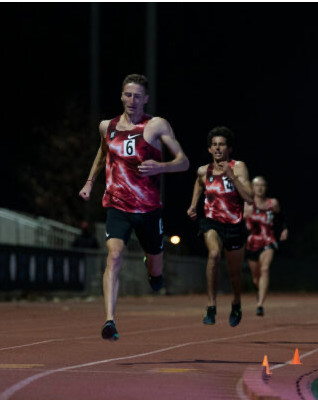
The Bowerman Track Club’s Elise Crannyused a 65.11 final lap to kick by teammateKarissa Schweizer to win The TEN tonight in 30:47.42 to Cranny’s 30:47.99 as the two women became the sixth and seventh US runners in history to dip under the 31:00 barrier for 10,000 meters. They are now the third- and fourth-fastest women in US history.
Britain’s Eilish McColgan also broke 31:00 in third in 30:58.94, just off the 30:57.07 personal best that her mom and coach Liz ran to win in Hengelo back in 1991, the year she won the 10,000 world title in Tokyo. 2015 world championship bronze medallist Emily Infeld (31:08.57) as well as Marielle Hall (31:21.78) also left tonight’s race with the 10,000 Olympic standard of 31:25.00. Hall already had it thanks to her 31:05 at Worlds in 2019; for Infeld, 30, her time was a 12-second personal best.
The race was very evenly run at almost exactly 75-second-per-lap pace for 7200 meters (22:28) with pacers Vanessa Fraser and then Courtney Frerichs leading through 6400. Four sub-75 laps after 7200 meters winnowed the lead pack down from four to two with three laps to go. Schweizer did all of the leading for the final 6+ laps until Cranny kicked by for the win in the final 50 meters. Cranny ran her last 1600 in 4:38.76 with lap splits of 72.59, 71.70, 68.75, 65.74
Men’s Race: Scott leads five men under Olympic standard
The Bowerman Track Club’s Marc Scott’s hot start to 2021 continued tonight as he ran 27:10.41 to win the men’s 10,000 and move to #2 all-time on the British 10,000 list. Scott wasn’t the only man leaving the race happy as the point of the race was to get the Olympic standard of 27:28.00 and all five men that finished the race were well under the standard.
In his 10,000 debut, Grant Fisher ran 27:11.29 for 2nd, meaning he’s now the 5th-fastest American in history. 12:58 man Woody Kincaid was third in 27:12.78 as Bowerman Track Club athletes swept the top 3 places.
Ben True, currently unsponsored, ran a big pb of 27:14.95 for 4th (previous pb of 27:41.17). And in the shock performance of the night, Harvard grad Kieran Tuntivate of Thailand ran 27:17.14 for 5th, meaning a guy who came into the night with a 13:57.60 5000 pb ran the equivalent of two 13:38’s back-to-back and is now #4 all-time in Asian history.
The race was rabbited perfectly through 8000 meters by Evan Jager and Sean McGorty. The field went through 5000 in 13:45 and McGorty hit 8000 in 21:57.85 (27:22 pace). After McGorty stopped at 8k, Scott did most of the leading although Fisher had the lead with 2 laps to go. Scott immediately picked up the pace and his final 5 laps were 64.18, 65.49, 64.62, 61.18 and 57.13, meaning he covered his last 1600 in 4:08.40 and last 2k in 5:12.58
(02/21/2021) ⚡AMPby Let’s Run
The Cold, Hard Reality of Racing the Yukon Arctic Ultra
Temperatures were brutally low at this year’s running of the 300-mile competition, and one frostbitten competitor may lose his hands and feet. Is this just the price of playing a risky game, or does something need to change?
Roberto Zanda left the Carmacks checkpoint of the Montane Yukon Arctic Ultra just before noon on February 6. He was at least 150 miles into the 300-mile race—he’d already been slogging down a dogsled trail through the Yukon backcountry for more than five full days. Temperatures had plunged below minus 40 Fahrenheit on the first night out of Whitehorse, the small Yukon city where the race began; along the race course, temperatures consistently ranged from the minus 20s to the minus 40s.


In short, conditions were brutal. Of the eight racers who’d begun the 100-mile version of the variable-length event, just four had finished. Of the 21 who’d started the 300-miler, only the 60-year-old Zanda and two others remained. Most of the rest had scratched with frostbite or hypothermia.
When Zanda left the checkpoint, hosted in a village rec center, a race medic wrote on the event’s Facebook page that the racer had paused only for “a short rest and a big meal. He was looking very strong.”
Just over 24 hours later, Zanda was in a helicopter, being rushed to Whitehorse General Hospital with hypothermia and catastrophic frostbite, lucky to be alive. He now faces the likely amputation of both hands and both feet. What went wrong?
This was the 15th running of the Yukon Arctic Ultra, an annual race in which competitors choose their distance—marathon, 100 miles, 300 miles, or, every second year, 430 miles—and their mode of transportation: a fat bike, cross-country skis, or their own booted feet. Race organizer Robert Pollhammer, 44, who runs an online gear store in his native Germany, started the event in 2003 after being involved with Iditasport, a similar event on the Alaskan side of the border.
The Yukon race takes place on part of a trail built each year by the Canadian Rangers for the Yukon Quest, a 1,000-mile dogsled race, and it’s as much a feat of logistics as it is an athletic contest. It’s continuous, not a stage race; competitors are self-sufficient, carrying all their camping and survival gear, spare layers, food, and water in sleds they pull behind them. Temperatures are cold enough to kill, and it’s dark for roughly 14 hours every day. Nonetheless, eager ultra racers travel from around the world for the event, paying anywhere from $750 to $1,750 USD to enter (depending on when they register and the distance they’re attempting), plus the cost of flights, hotel, and gear. The total can easily add up to $5,000 or more.
The entrants tend to be experienced ultra and adventure racers; many athletes have already completed events like the Gobi March or the Marathon des Sables. Most competitors come from Europe, although this year’s race also saw entrants from South Africa and Hong Kong. The race organization offers a survival course a few days beforehand—a crash education in moisture management, layering, and cold-weather injuries. Generally speaking, the racers are accomplished athletes, but they may not have extensive experience with severe cold. The challenge lies in keeping themselves safe while moving through the Yukon’s remote, frigid backcountry.
The race is billed as “the world’s coldest and toughest ultra,” and there have been plenty of serious injuries before: flesh blackened by frostbite, frozen skin peeling off racers’ faces like wax, and bits of fingers and toes lost to amputation. But what happened to Zanda is by far the worst medical outcome yet, and it has shocked former racers, event organizers, and fans. It has also led to discussions and debates, often heated, about where a race organization’s responsibilities end and a racer’s personal assumption of risk begins.
As Zanda moved out of Carmacks, his Spot tracker showed him clipping along steadily at around three miles per hour. Between 3 p.m. and 9 p.m., his beacon’s transmissions became more erratic—but that’s fairly normal in the Yukon, where satellite signals can be weak or inconsistent. Between 9 and 10 p.m., the problem cleared up and the Spot began sending signals every few minutes.
The last blip came in at 10:08 p.m., at route mile 189.7, and then the device went into sleep mode. After a strong ten-hour, 25-mile push from Carmacks, Zanda appeared to have stopped to camp for the night.
In the morning, as the sun rose, his tracker still hadn’t moved. The race crew wasn’t concerned yet—Zanda had taken a 12-hour rest once before during the race, as had some other athletes. At 9:32 a.m., Pollhammer posted on Facebook that two volunteer trail guides were headed out to check on him. “His Spot has not been sending for a long time now. Once we have news I will let you all know.”
The trail guides are the race’s safety net, patrolling hundreds of miles by snowmobile to check on the athletes and, when necessary, evacuate them from the course. They motored down the trail toward Zanda’s Spot location, but when they got there, in late morning, they found only the racer’s harness and sled, loaded with a tent and sleeping bag, a stove and fuel, and—crucially—the Spot device. Zanda was gone.
They called back to Pollhammer, who contacted the Royal Canadian Mounted Police, and then they began searching the area, looking for some sign of where the racer might have left the packed trail and wandered into the forest. The Mounties were about to launch a search of their own when the call came in: Zanda had been found. A helicopter was dispatched and landed near him. The trail guides, advised by the incoming medical team, did what they could to care for Zanda while they waited. As Pollhammer put it in an email to me: “No time was lost.”
A few days later, Zanda spoke to a Canadian television reporter from his hospital room in Whitehorse. He wore a pale-green gown, and his hands were heavily bandaged, nearly up to his elbows. His feet and shins were the same. He said he’d left his sled behind to go look for help because his feet were freezing up. He and his family members have also told race organizers that Zanda had lost the trail and went in search of the next marker, leaving the sled behind while he scouted.
Hypothermia must have already had Zanda in its grip by then, muddying his mind and compromising his decisions. His sled was his lifeline, containing everything he needed to stay alive and the only tool he had to call for help. He wandered through the cold and dark all night while the sled sat on the trail, sending out a reassuring beacon to the world that all was well.
I competed in this year’s Yukon Arctic Ultra—my first attempt—and I didn’t last long. Twenty-two hours in, suffering from frostbite on three fingertips, I scratched from the event, one of four 100-mile racers who decided to quit.
I never met Zanda, though for all I know we could have been standing side-by-side at the start line. On the afternoon of day one, he left the first checkpoint 19 minutes ahead of me. That night, I passed by as he bivied on the side of the trail. A couple hours later, I put up my own tent, crawled inside, and was trying to change into dry clothes with my hands briefly exposed. That was long enough for frostbite to set in.
Early the next morning, Zanda and two other racers passed my tent. I heard them go by but didn’t call out. I was waiting until daylight to push the help button on my Spot. I’ve thought about those encounters a lot since I learned about what happened to Zanda. It’s impossible not to hear his story and ask: Could that have been me?
Easily. I knew when I signed up for the race that amputations, or even death, were among the potential consequences. At such low temperatures, exhausting yourself to the degree required to complete an ultramarathon is a good way to erase whatever thin margin of safety you’ve managed to create. But while some of my friends had concerns, I wasn’t really worried. That disconnect is what allows many of us to put ourselves in these situations.
Zanda wasn’t the only person hospitalized. Nick Griffiths, another 300-mile racer, scratched on day two. The frostbite on his left foot had become severe by the time he was whisked from the trail to a remote checkpoint for eventual evacuation to Whitehorse. Griffiths spent five days in the hospital, and he will eventually lose his big toe and two others next to it. (To preserve as much healthy tissue as possible, doctors will allow the toes to “self-amputate,” meaning that the dead tissue will simply fall off.) Losing the big toe, in particular, could have a serious impact on Griffiths’ future ability to walk, hike, and run.
“I’m hoping I’ll be all right,” he told me from his home in England, where he’s been reading up on athletes who’ve lost toes. “I’m not expecting to be able to go and do ultras or things like that, but there’s other challenges. It’s not ideal, but there’s no point jumping up and down about it. It’s done.”
I’m not sure I could muster the same acceptance if I were in Griffiths’ position, let alone Zanda’s. Understandably, the Italian racer’s friends and family are extremely upset. In the days after his rescue, the race’s Facebook page filled up with furious comments from people demanding to know how this could have happened, why Zanda wasn’t checked on sooner, why the race hadn’t been canceled entirely when the weather refused to relent. Zanda’s wife, Giovanna, wrote, in Italian, “It’s been too many hours before you decided to verify what happened. He didn’t die by miracle.” His brother, Paolo, posted, “Why they promise you safety when they do not care about you?” To which Pollhammer replied, “Nobody promises safety.”
That much is certain. The waiver I signed when I filed my registration paperwork last summer listed the risks I was assuming as including but not limited to “dehydration, hypothermia, frostbite, collision with pedestrians, vehicles, and other racers and fixed or moving objects, sliding down hills, overturning of ice-rocks, falling through thin ice, avalanche, dangers arising from other surface hazards, equipment failure, inadequate safety equipment, weather conditions, animals, the possibility of serious physical and/or mental trauma and injury, including death.”
Still, even as we sign our lives away, participating in an organized race may provide us with an illusion of safety in a way that an independent backcountry trek might not. If so, I suppose it becomes our job to tear down that illusion and make clear-eyed choices about the risks. That’s easier said than done, of course.
Throughout the aftermath of this year’s race, Pollhammer has remained calm as he answered his critics, walking the fine line of showing empathy for Zanda and his family while making it clear that he believes the error was the racer’s. Initially he seemed shaken, unsure about running the event again next year, but he has since announced the 2019 dates. I asked Pollhammer if, with the benefit of hindsight, he would do anything differently. He said that the rules and safety procedures evolve almost every year, and next year will likely be no different. But there are limits to what he can do, no matter how much he tweaks his protocols
“We can increase the list of mandatory gear, make people carry a sat phone, warn athletes even more so than we do now,” Pollhammer said. “We can do many things. However, we won’t be able to make sure people don’t get hypothermic and start making mistakes when they are out there. It they don’t act, or if they act too late, it will always mean trouble. I wish I could take that away from them, but it is impossible.”
Or as Nick Griffiths put it, “I can’t blame anybody for it—it was my own fault.”
As for Zanda, he told the CBC that he’ll be back out racing again—on prosthetics, if need be.
(02/21/2021) ⚡AMPYukon Artic ultra 300 miler
The Yukon Arctic Ultra is the world's coldest and toughest ultra! Quite simply the world's coldest and toughest ultra. 430 miles of snow, ice, temperatures as low as -40°C and relentless wilderness, the YUA is an incredible undertaking. The Montane® Yukon Arctic Ultra (MYAU) follows the Yukon Quest trail, the trail of the world's toughest Sled Dog Race. Where dog...
more...This new spike technology has a place in sport, provided everyone has reasonable access
In the past 12 months, despite minimal conventional competition opportunities, seven track world records have fallen. Beyond those, track has also seen countless area, national and age-group records fall – in seemingly more frequent succession than recent years.
For some of these records, the runners wore what are being referred to as super spikes – spikes with added foam, and in some cases, an embedded carbon-fibre plate, similar to the plates now found in many marathon shoes. Nike has a sprint (Air Zoom Viperfly), mid (Air Zoom Victory) and long-distance (Dragonfly) version of these spikes, and runners sponsored by several other companies, like New Balance, are wearing prototypes.
With similar technology, these spikes are doing for track what the Nike Vaporfly 4% did for road running – they’re leading fans, pundits, and professional athletes to question whether the shoes are hindering or helping the sport, and whether this emerging technology should be better regulated.
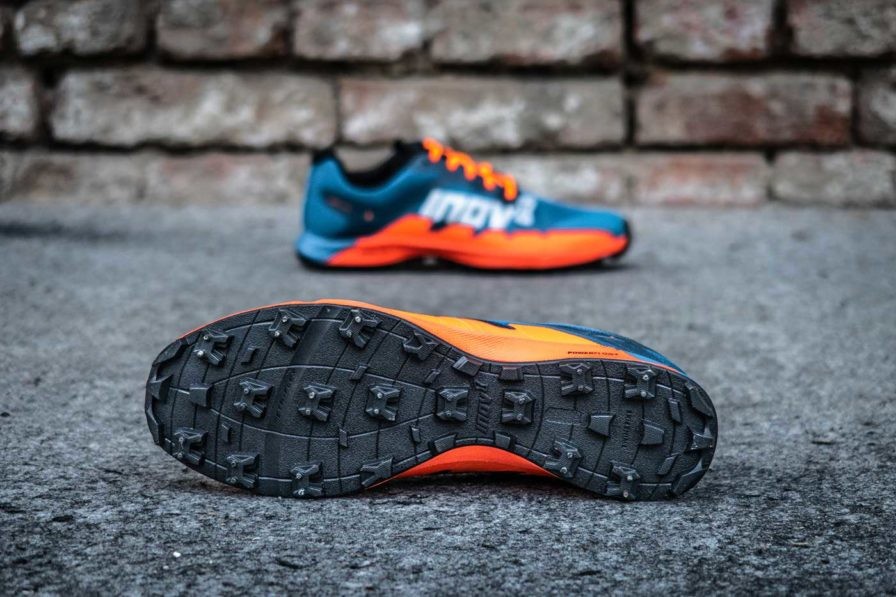
The new rules
In recent years, the thinking around shoe technology has shifted, and brands are now creating ‘super shoes’ that include more foam and a stronger plate. (Spikes always had plastic plates, and now some have carbon plates.) This changed was first seen on the road, and resulted in new regulations when it comes to in-competition footwear. In the fall of 2020, World Athletics announced new rules that declared a limit of 25 mm in stack height on the track. While that remains a far cry from the 40 mm limit on the roads, 25 mm is much higher than track runners were accustomed to. The average spike at the time had a stack height of about 5 mm and was developed based on the principle that lighter is faster and less is more.
Lack of access

Beyond limiting stack heights, the new WA rules also mandated that shoes had to be widely available to all runners in order to be used in Olympic competition. However, for a lot of Olympic hopefuls, they need every little advantage possible to find themselves on a start line at the Games, and WA rules aren’t making these shoes any easier to access for early-season competition. Many companies have made versions of the new spikes ‘available’ online – in a size 15 men’s. This technically complies with the ‘widely available’ rule but is obviously severely limiting.
solid training block
Fans are quick to point a finger at the new shoes for the many records that have fallen in the last 12 months, but as some have pointed out, it may also be due to training schedules that are not constantly being interrupted by meets. During the pandemic, runners have competed much less than usual, swapping weekly racing for intense training camps. These changes in training schedules may have allowed people to simply run more and become stronger, as they’re no longer dropping mileage to taper for competition.
Some top athletes are opting out of using the super spikes for their track events. For example, to set the 5,000m American record over the summer, Shelby Houlihan wore a pair of spikes released back in 2008. While Houlihan was kicking it old-school, several of her teammates, including Canadian Mohammed Ahmed, were wearing the then-unreleased Nike Dragonfly spikes. In a low-key meet, with some technically out-of-date spikes, Houlihan ran a 14:23.92 – faster than any American woman ever has over the distance.
What about doping?
Some have raised the issue of doping as a possible factor. When the pandemic first hit, athlete drug testing was temporarily suspended. As a result, there was a weeks-long period where runners everywhere could, in theory, have cheated without getting caught. A few months later, though testing has resumed, we’re seeing out-of-this-world results. This is obviously a bigger conversation for another day, but I personally don’t believe that all of these athletes took advantage of that brief testing gap in order to break records.
As spike technology is improving, so are pacing technologies and track surfaces – the world keeps on turning, and running must turn with it. While these new spikes are certainly among the many changes that are bringing about faster times, they’re not the sole reason, and in my opinion, it’s reductionist to say they are. We’re living in a completely different world than we were a year ago, and maybe some of the changes the pandemic brought have positively impacted training. It’s entirely possible that forcing life to slow down helped some athletes speed up.
While I believe these ‘super shoes’ should be truly accessible in order to be used in competition, I also believe that innovation is inevitable. The super spike will one day be replaced by a new technology that will ‘ruin’ the sport all over again, and we’ll be missing the days when carbon and extra foam were the biggest deal on the block.
(02/20/2021) ⚡AMPby Madeleine Kelly
High school 3,000m record-holder Katelyn Tuohy will make her collegiate debut this weekend
More than a year after announcing that she had committed to attending North Carolina State University in the fall of 2020, American high-school superstar Katelyn Tuohy is finally making her collegiate debut at the Camel City Invitational in Winston-Salem, NC on Saturday, Feb. 20.
This will be Tuohy’s first race since she won the 1,500m at the New York high school state meet on March 7, 2020.
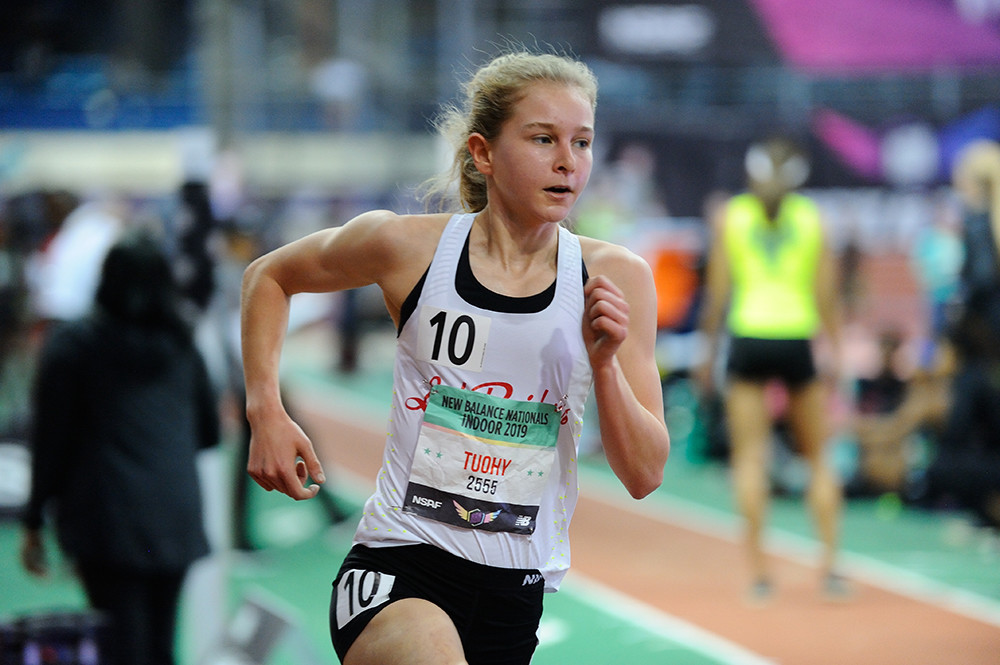
With everything that has happened, it’s easy to forget that this is one of the United States’ most decorated high school runners’ freshman year. According to an interview with Let’sRun.com, Tuohy’s coach, Laurie Henes, made the decision to have the young runner sit out the cross-country season last fall because she was not fully healthy when she arrived on campus.

Instead, they decided to take it slow, pointing out that it didn’t make sense to rush her back into a fall season that didn’t have an NCAA championship.
Evidently, Tuohy is now healthy enough to race, and she will be competing for NC for the first time this weekend in the 3,000m. She is the current high school record-holder at the distance, running a 9:01.81 in January 2019 to break Mary Cain’s previous record of 9:04.51.
With only three weeks until the NCAA XC Championships, this race will be a good test of her fitness, and track fans everywhere will be watching to see what she’ll do this Saturday.
(02/20/2021) ⚡AMPby Brittany Hambleton
South African marathon runner Gerda Steyn is training and staying positive ahead of Tokyo Olympics
Gerda Steyn is happy with how training is going ahead of the Tokyo Olympics.
The Risidale road runner will run the marathon distance for South Africa at the Olympics in August and before then has lined up some races to build her fitness.

On 24 January, Steyn won the Dubai 10km with her best 10km time – just one of the many races she has won in the United Arab Emirates (UAE) in recent years.
“I was really pleased to run 32:33 for the 10km because I am currently in the middle of a training block, so I couldn’t really have expected to run my best 10km performance, but [it] definitely helped me gain some confidence in what I can do for my next race,” Steyn told Northcliff Melville Times.
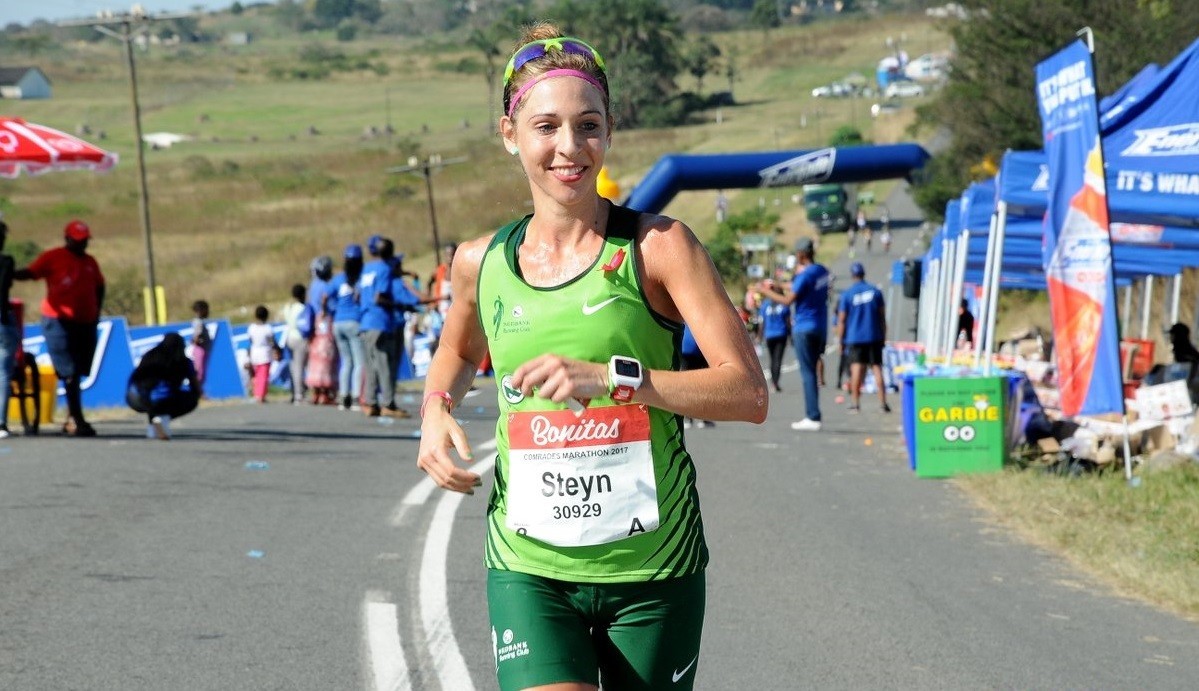
“I am still seeing improvement in a lot of my speed sessions and tempo workouts, so I trust that this will result in better performances in races too. Every training cycle is different and normally this time of the year I would be doing high altitude training in Lesotho, so I’m just looking to make the most out of training at sea level.”
Upcoming races for Steyn include the RAK (Ras Al Khaimah) Half Marathon in the UAE, dubbed the fasted half-marathon in the world, on 21 February, and the Half Marathon World Championships in Poland on 29 March.
“I have been very focused on staying injury-free with more emphasis on recovery in between sessions and also making sure that I am well prepared for every workout because it’s not just your performance on the day, but all the small building blocks beforehand that will count towards obtaining your target times.”
Steyn said she was excited about representing South Africa for the first time at the Olympics.
“[It] will be an incredible opportunity,” she said.
“The pandemic has affected everyone and as a sportsperson, it has been a tough past 12 months, especially with all the uncertainty with regards to race dates and race cancellations. I promised myself right from the start that I will not give up and that by the end of the year I want to look back knowing that I did everything in my power to seek opportunities and still make 2020 a year to remember.”
This she did.
“Running has been my greatest outlet. I was able to stay positive through my love for running and having the support from many great people in my life. I miss running in a social environment and competing knowing that I am sharing the roads with thousands of runners but I was extremely grateful to have had an invitation to run the 2020 London Marathon which kept me focused on training and improving.”
(02/20/2021) ⚡AMPby Nicholas Zaal
Tokyo 2020 Olympic Games
Fifty-six years after having organized the Olympic Games, the Japanese capital will be hosting a Summer edition for the second time, originally scheduled from July 24 to August 9, 2020, the games were postponed due to coronavirus outbreak, the postponed Tokyo Olympics will be held from July 23 to August 8 in 2021, according to the International Olympic Committee decision. ...
more...The North Face Just Dropped the First Carbon-Plated Trail Running Shoe
Controversial speed is coming to a mountain near you
I’ve tested out carbon-plated shoes from a variety of running brands over the last 12 months. A movement that began with Nike’s NEXT% line — which propelled Kenyan legend Eliud Kipchoge to a mind-boggling sub-two hour marathon back in late 2019 — has now firmly taken over the sport.
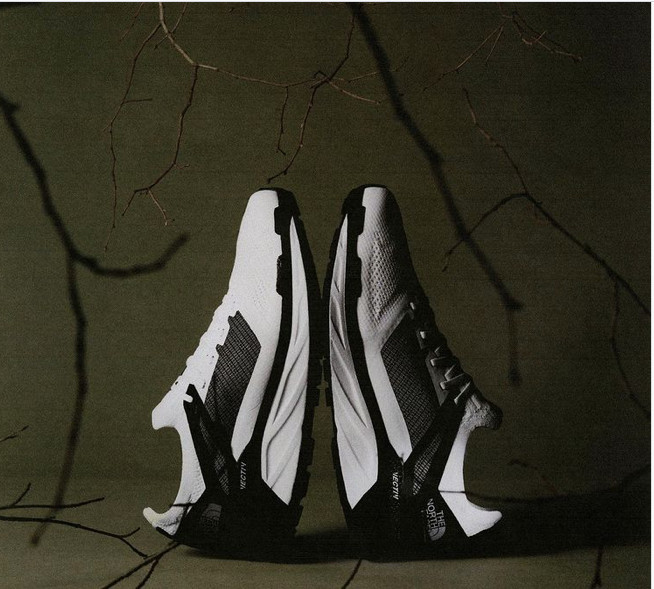
For the skeptics out there, these shoes are legit. There’s a reason the success of Nike’s shoe led to allegations of “gear doping,” new rules from the World Athletics body, and a call to arms for competitors like Adidas, ASICS and Saucony. The shoes generally combine tall, lightweight foam (which running journalist Amby Burfoot once compared to having extra leg muscles), with a carbon insert, meant to facilitate maximum energy retention — to “propel you froward” as the brand copywriters like to say.
After all that initial noise, they’re not only here to stay; they’re poised to take over other sub-sections of the sport. Yesterday, The North Face dropped a first look at its VECTIV series, the world of trail running’s first official carbon-plated running shoes.
I have zero complaints about my carbon-plated shoes. (Lately, I’ve been running in the Nike ZoomX Vaporfly NEXT%s and the Saucony Endorphin Pros.) In a year without races, they’ve helped me to log some benchmark times I’m proud of. That said, those shoes are noticeably reliant on dry, clean surfaces. They like asphalt, they prefer track. Whenever either is slick from rain or snow, or — god forbid — roots or leaves get involved, they have a ton of trouble gripping the ground.
The North Face, a brand as synonymous with all-elements gear as any on the planet, has designed a carbon-plated shoe that can actually handle unforgiving trails. Most running brands have their athletes come in and test out prototypes on a treadmill; TNF trail runners logged up to 600 miles in a single pair, and much of them on punishing terrain. One runner ran 93 miles around Mt. Rainier in them this past summer.
The premier release in TNF’s line, the FLIGHT VECTIV, aims for stability and strength, like any other reliable trail running shoe. It has a high-grip outsole, while its mesh fibers are literally reinforced with Kevlar. But it’s built for speed. The shoes contain a 3D plate directly underneath the foot, alongside a rocker midsole. Ultrarunner Pau Capell described the shoes as a “downhill weapon.” Trail runners often have to slow down due to practical concerns, not for lack of spirit. These shoes are designed to let them fly.
And, crucially, to avoid injury while doing so. The maximalist foam included in carbon-plated shoes blunts the impact of runners logging so many miles. Ultrarunners are on another level entirely; they’re incessantly susceptible to stress fractures, plantar fasciitis, sprained ankles, cramps, and broken toes. But the VECTIV line — which also includes the INFINITE and the ENDURIS, two shoes less concerned with speed — promises 10% less “impact shock.” It could bring more newcomers to the sport, and keep around those who already love it.
(02/20/2021) ⚡AMPObiri eyeing double events at Tokyo Olympics
World 5000m champion Hellen Obiri is keen to compete in both 5,000m and 10,000m events at this year’s Olympic Games in Tokyo, Japan.
The 31-year-old has already vowed to go all out for her maiden Olympic gold, the only medal missing in her cabinet.
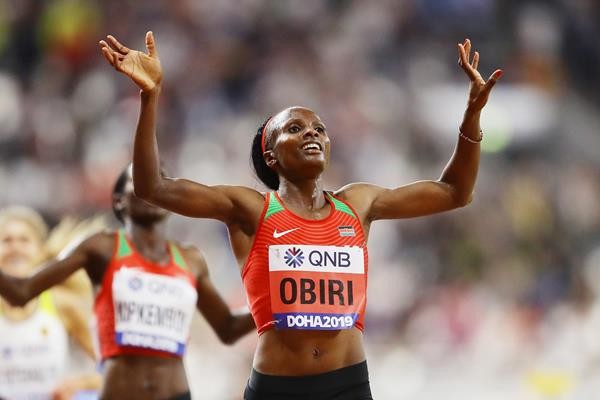
In what could be her final appearance at the Summer Games, Obiri who bagged a silver medal in 5,000m in Rio Games, said she is ready to contest in both races.
“Probably I am going to double in 5k and 10k if I will make the Kenyan team,” said Obiri after anchoring her Kenya Defence Forces mixed relay team to victory at the national cross country championships.
Obiri did both events at the 2019 World Championships in Doha winning the 5,000m race and finishing a distant fifth in 10,000m.
The Commonwealth Games champion will follow in the footsteps of her compatriot Vivian Cheruiyot who did the double in 2016 clinching a gold medal in 5,000m and a silver in 10,000m.
Despite making the team for Africa Cross Country Championships in the mixed relay category, Obiri said she will skip the continental showpiece slated for Lome, Togo on March 7 as she heightens her preparations for the Olympics.
At the same time, Obiri disclosed that she is set to kick start her track season at the Diamond League season opener in Rabat on May 23.
“Right now I am focused on the buildup towards the Olympics. I am looking forward to the Diamond League season where I intend to compete in 1,500m at the Rabat meeting,” she said.
The African champion was set to make her debut in the half marathon at the cancelled Ras Al Khaimah (RAK) Half Marathon that was slated for Friday.
(02/20/2021) ⚡AMPThe new and improved Hayward Field sits ready for the Olympic Trials, whenever that comes
There was a lot of hope that the new Hayward Field would be a major attraction before the pandemic hit, and it finally looks like events will return in some form or another.
The 2021 Olympic games are scheduled to start in Tokyo on July 23rd.

We spoke to an athlete training for her shot at an Olympic medal to see how uncertainty is playing a role in everything.
Raevyn Rogers, an 8 time all-American, 6-time national champion, and the recipient of the prestigious Bowerman Award with the Oregon Ducks is training for her return to Track Town USA for the 2021 Olympic Trials. After the 2020 summer Olympics were postponed last March, she had to refocus.
"I expected it, so it was kind of hard to be sad," Rogers said. "It was just one of those things that were like "ok so what is the plan now?"
The Olympics are scheduled to take place in Tokyo from July 23rd to August 8th. The International Olympic Committee (IOC) recently released their first resource playbook for a safe and successful event. One line reading...
"...limiting the number of time athletes and support staff stay in the village, restrictions on socializing outside the village, their movement between official games venues, and a COVID-19 screening system that will see athletes and support staff screened during the games."
But before the Olympics, Hayward Field will hold the 2021 Olympic Trials- slated for mid-June. After running for the Ducks in college, Rogers feels a bit of a "home-court advantage."
"performing in front of the home crowd, I always want to do my best and perform my best," she said. "That's just the kind of pride that I want to carry when it comes to just how much I associate and really care for the University of Oregon."
The atmosphere at Hayward is electric, but due to the pandemic, runners in Olympic trials could be at a loss without a crowd.
"It's not just the noise, but more so the energy," Rogers said. "With the tradition of coming of the Bowerman Curve, there's so much tradition and so much energy that these passionate track fans give."
After running on tracks internationally, Rogers says Hayward has potential as an Olympic venue.
"We've got to get the parking and the hotels a little more situated but the track alone and the facility alone is just Olympic standard."
Rogers was also recognized by her alma mater, as they used her photo on the new Bowerman Tower at Hayward. Photos of Steve Prefontaine, Ashton Eaton, and Bill Bowerman are also on the tower.
A major event people were looking forward to this year was the IAAF 2021 Track and Field World Championships, but because of the pandemic, that will happen in 2022.
(02/20/2021) ⚡AMP2021 Rock ‘n’ Roll Nashville Marathon has been postponed again
After being postponed in 2020 before being officially cancelled altogether, the Rock ‘n’ Roll Nashville Marathon & ½ Marathon has met the same fate in 2021.
Race officials announced on Wednesday that the event, which was originally scheduled for April 24-25, has been moved to the fall due to COVID-19 risks. A likely target date for the rescheduled event could be Nov. 20-21, the same date the event was rescheduled for last year.

The race, which starts on Lower Broadway and wraps up near Nissan Stadium, usually draws about 30,000 participants and has a $40 million economic impact, according to Nashville Sports Council President and CEO Scott Ramsey.
“While this is a disappointing way to start the year, officials from Rock ‘n’ Roll and the City of Nashville feel confident the event will be better positioned for a strong return,” an official statement from the marathon read.
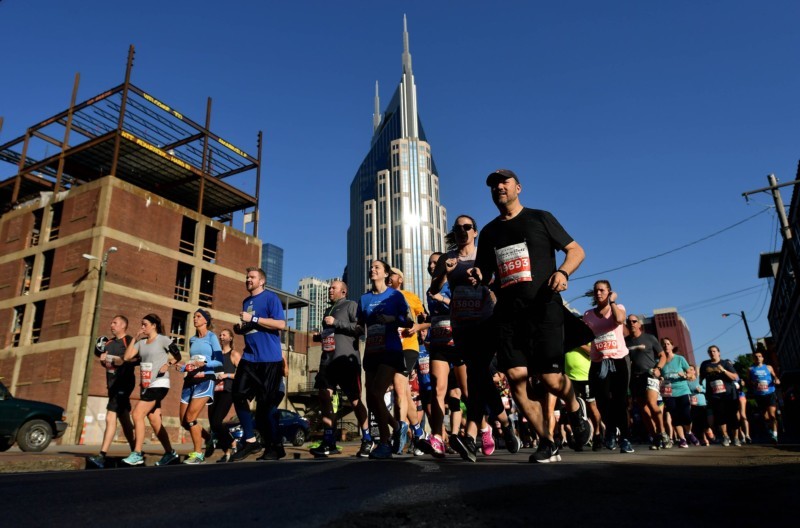
“Based on Rock ‘n’ Roll Nashville utilizing Nissan Stadium as a key venue for the event, the new Fall 2021 race date is dependent on the Tennessee Titans home schedule and thus will be confirmed and communicated as soon as the NFL schedule is available for us to work through with host city officials and stakeholders.”
The race may be scaled down to accommodate local health and safety guidelines. All participants registered for the 2021 race will be receiving an email with further details. Hendersonville’s Scott Wietecha has won the race each of the last seven years.
(02/19/2021) ⚡AMPSt. Jude Rock N Roll Nashville Marathon & 1/2 Marathon
The St. Jude Rock ‘n’ Roll Nashville Marathon & 1/2 Marathon (formerly St. Jude Country Music Marathon & 1/2 Marathon) gives you the opportunity to enjoy an up close and personal tour of Music City, one of the New York Times’ top destinations in the world! Run through the Honky Tonks of Lower Broadway and take a musical tour through...
more...Nagoya Marathon announced that race will have up to 11,000 participants
The Mar. 14 Nagoya Women's Marathon announced this year's field yesterday, the same day that vaccinations officially began in Japan. It's another domestic-only race, but it has a great potential trio up front and looks to be going ahead with a mass-participation race.
Up front are last year's Osaka International Women's Marathon winner Mizuki Matsuda, 25 km national record co-holder Sayaka Sato, and Tokyo Olympics marathon team member Ayuko Suzuki. Suzuki is only 9th by recent time, but with a half marathon best of 1:07:55 and this being her first shot at a fast marathon she's definitely got the potential to stay with Matsuda and Sato.
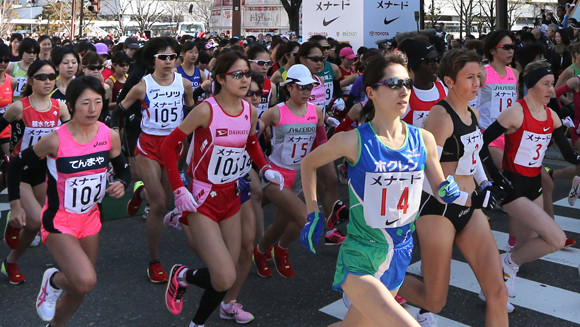
Reia Iwade and Rei Ohara have both run 2:23 but neither has been near that level in the last few years, Iwade in particular having dropped out of Osaka last month and only running 1:13:10 last weekend at the National Corporate Half. Mao Uesugi, Haruka Yamaguchi and Mirai Waku all ran Osaka too, so whether they start and how seriously they run remains to be seen. Yomogi Akasaka had a breakthrough to win December's Hofu Yomiuri Marathon in 2:29:21 and could be a surprise.

Nagoya is heavy this year on talent in the first-timer department, Ikumi Fukura coming in top-ranked with a best of 1:09:58 and four others with bests under 71 minutes. Olympian Mai Ito ran well at the National Corporate Half with her best time since before Rio and will be looking to finish her first marathon since Osaka in January 2017. Further down the field, 62-year-old Mariko Yugeta will be trying to better the 2:52:13 60+ world record she set in Osaka this year.
Pre-corona, Nagoya was the largest women-only marathon in the world. Last year it was held as an elite-only race, but this year it took mass-participation entrants up to a limit of 11,000. Earlier this month Nagoya issued a statement inviting entrants to switch to a virtual race, but at this stage it looks like it will go ahead with an on-site race for every entrant who still wants to run, assuming no extension to the current state of emergency set to expire on Mar. 7.
With every other race in Japan that size having already canceled or postponed this season, going ahead with its race would put Nagoya in a class of its own and give some much-needed hope that things are actually starting to turn around.
(02/19/2021) ⚡AMPby Brett Larner
Nagoya Women's Marathon
The Nagoya Women's Marathon named Nagoya International Women's Marathon until the 2010 race, is an annual marathon race for female runners over the classic distance of 42 km and 195 metres, held in Nagoya, Japan in early March every year. It holds IAAF Gold Label road race status. It began in 1980 as an annual 20-kilometre road race held in...
more...Former Russian athletics chief Dmitry Shlyakhtin was on Wednesday banned for four years
Shlyakhtin was banned for four years over the Lysenko doping cover-up affair, the Athletics Integrity Unit (AIU) announced.
Four other former RUSAF officials received the same punishment from athletics' independent anti-doping watchdog: executive director Alexander Parkin, Artur Karamyan, Elena Orlova and Elena Ikonnikova.
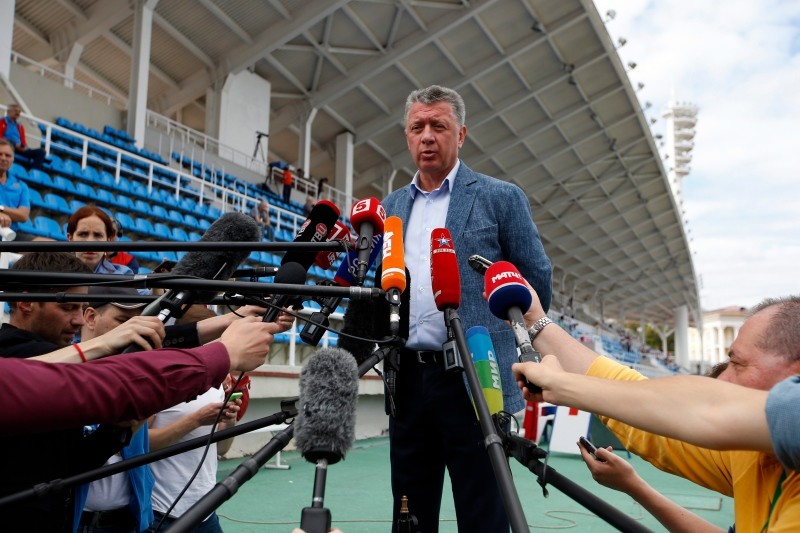
The quintet were found guilty of obstructing an investigation into high-jumper Danil Lysenko, a silver medallist at the 2017 World Championships in London.

Shlyakhtin and the others were suspended last year for "serious breaches" of anti-doping rules.
Russia has been banned from competing as a country in athletics since 2015, after the World Anti-Doping Agency found evidence of widespread doping in the sport.
Some Russian athletes, including Lysenko, have been allowed to compete under a neutral flag.
But last year Lysenko had that status removed by athletics' governing body, then called the IAAF, after he failed to provide the whereabouts information he is required to give to submit to doping tests.
The AIU's 15-month investigation found that Shlyakhtin and Parkin had been involved in the "provision of false explanations and forged documents to the AIU in order to explain whereabouts failures by the athlete".
The ex-RUSAF five can appeal the verdict while Lysenko's case is still ongoing.
RUSAF has until March 1 to present its plans for reform and remains under the threat of exclusion from the IAAF and the Tokyo Olympics.
(02/19/2021) ⚡AMPOlympic Trials Winner Shogo Nakamura withdraws from Lake Biwa Mainichi Marathon
After experiencing mild pain in the outer ankle of his left foot and being diagnosed with peroneal tendonitis, Tokyo Olympics men's marathon trials winner Shogo Nakamura (Fujitsu) has made the decision to withdraw from the Feb. 28 Lake Biwa Mainichi Marathon.
Nakamura will take a few days off to rest and plans to resume light jogging next week. However, in combination with not meeting his performance goals at an intensive training camp last month, he has decided to err on the side of caution and withdraw.
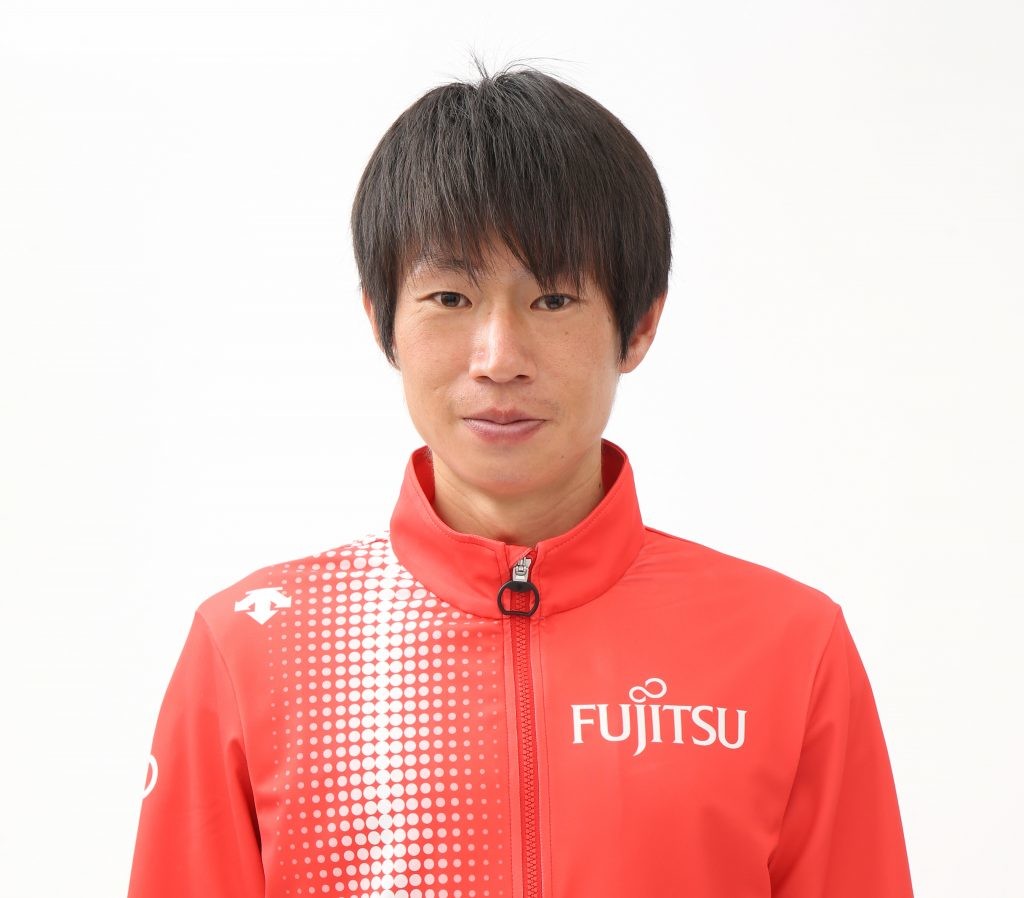
Comments from Nakamura:
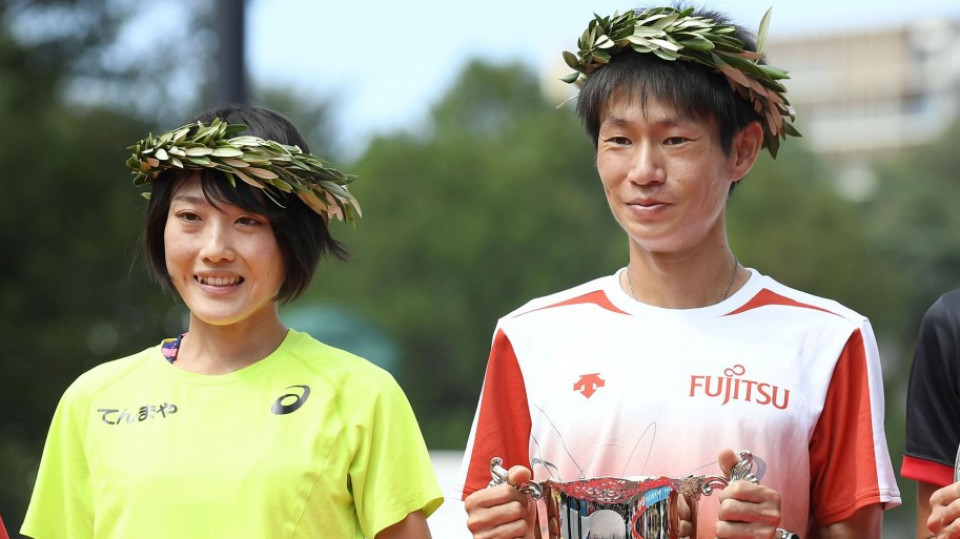
Lake Biwa was going to be my first race since the New Year Ekiden and my first marathon in a long time, so I'd been looking forward to it.
The pain has already faded and doesn't look like it will get in the way of training, but after looking carefully at the situation we decided not to risk more serious injury and to withdraw in favor of being ready for the Tokyo Olympics.
I apologize to everyone who had been expecting to see me run. My first priority is to get back on my feet and do the work necessary to show up at the Tokyo Olympics ready to race. I hope that you will all support me and cheer me on there.
(02/19/2021) ⚡AMPby Brett Larner
Osaka Marathon
In 2022 the Lake Biwa Mainichi Marathon and Osaka Marathon were held together. For 2023 the name of the marathon will be Osaka and both men and women can run the race. The original male-only competition was first held in 1946 and, having taken place every year since then, it is Japan's oldest annual marathon race. The early editions of...
more...2021 Vermont City Marathon is back, but it’s moving to October
The Vermont City Marathon is back for 2021, but it’s moving to the fall. That’s one of several things that will be different this year.
Whether you’re a runner or an onlooker, this year’s marathon will be smaller with a different route-- no beltline this year. But even with those changes, officials tell me having a race at all is a sign of things getting back to normal.

At a virtual press conference on Wednesday, RunVermont announced their plans for the 2021 Vermont City Marathon to happen in person.
Instead of the Sunday of Memorial Day Weekend, the race is set for Oct. 24 with a mini-marathon the day before.
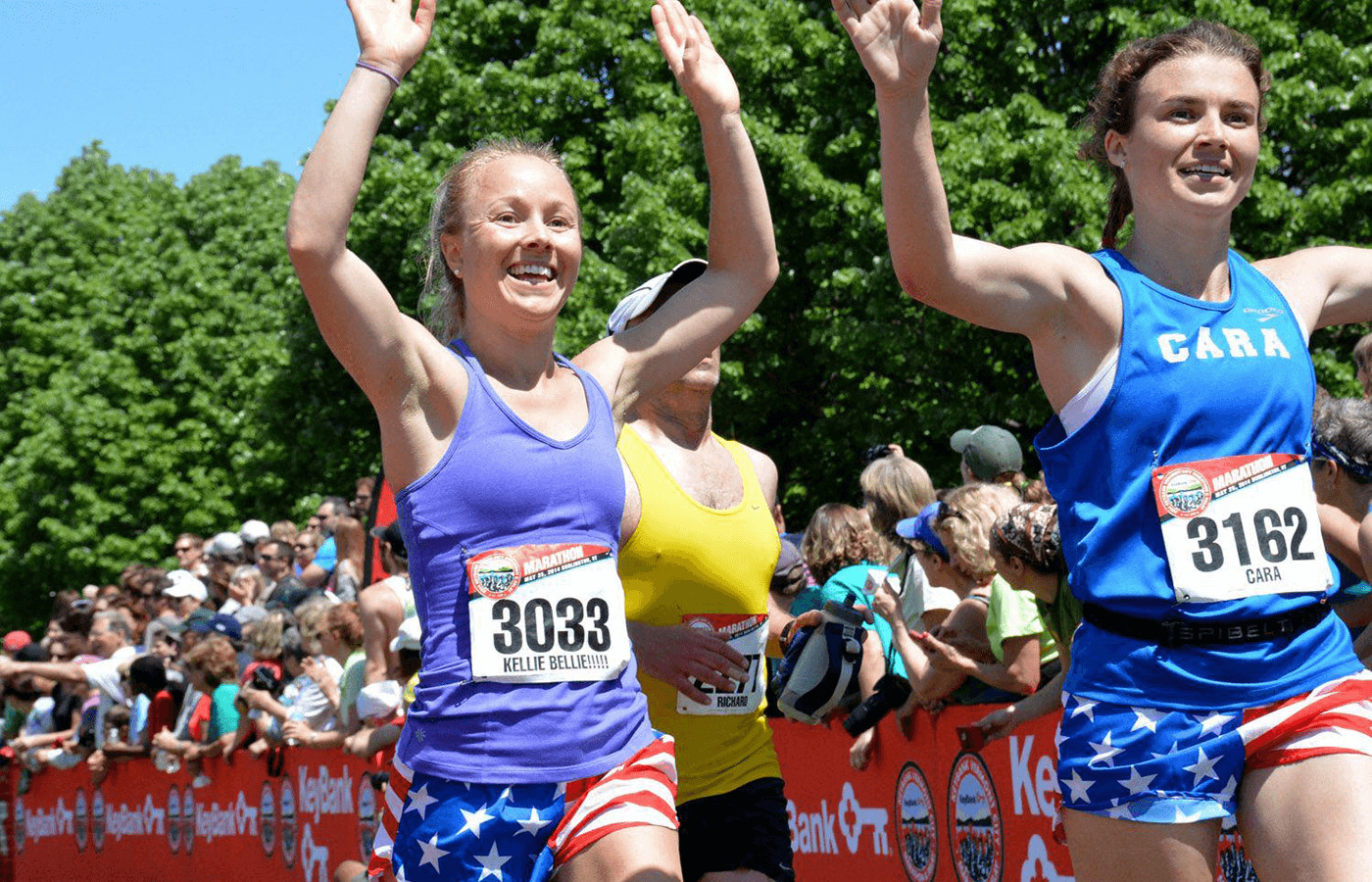
“One of the benefits we believe the move and date will allow us is that we hope that we will be able to engage the primary asset for this event and that is the community at large,” said Peter Delaney, the executive director of RunVermont.
But the day is about the runners and it will have a different look.
“It will be moving to a two-loop 13.1-mile course. The start and finish will be co-located at Waterfront Park,” Delaney said.
Officials say the loop will pass along all the main highlights like the bike path and Church Street.
“Additionally, the format changes will include wave starts. We will have multiple waves, size is yet to be determined,” Delaney said.
With the date change and the unknowns of the pandemic, organizers are shrinking the field of runners down from over 7,000 relay runners and marathoners to about 3,500. Runners who signed up for the 2020 race didn’t get a refund, so the Vermont City Marathon is giving them first dibs on signing up for this October event.
“All of the eligible participants for 2021 will be those people who are registered with us for 2020,” Delaney said.
The city says the Vermont City Marathon will be one of many big events in a post-pandemic world.
“I think when we get together this way this fall, it’s going to be one of the moments-- I hope there are many-- that I think will be a special moment of being on the other side of this pandemic,” said Burlington Mayor Miro Weinberger, D-Burlington.
As for that route change, Run Vermont tells me that’s only for this year. They will return to their normal course for the 2022 Vermont City Marathon.
(02/18/2021) ⚡AMPby Ike Bendavid
People's United Bank Vermont City Marathon
The race is held annually on the Sunday of Memorial Day weekend normally. Runners in the Vermont City Marathon can compete in the full marathon, on a two-person relay team running half marathons, or on a three-to-five person relay team running legs ranging from 3.1 to 6.2 miles. The Vermont City Marathon is a Boston Marathon Qualifying Race. We automatically...
more...Seiko Hashimoto has been named Tokyo 2020 chief
Seiko Hashimoto, who will head the Tokyo 2020 organizing committee after a sexism row forced its last chief to step down, is a seven-time Olympian and was one of just two women in Japan's cabinet until she took the job.
The 56-year-old politician, who was also minister for gender equality and women's empowerment, will replace Yoshiro Mori, 83, after he sparked uproar with claims that women talk too much in meetings.

The appointment comes just over five months before the virus-postponed Games, with public opinion in Japan still largely against holding the massive event this year.
Hashimoto is a passionate Olympian, who competed at seven consecutive winter and summer Games, in speed skating and as a sprint cyclist, winning a bronze for skating in 1992.

She has said she was raised being told by her father "'you were born to go to the Olympics'... even before I knew that the Olympics was."
She entered politics in the 1990s and after a period balancing sports and statecraft, her final Games as an athlete was in 1996, and she began to work her way up the ranks of the ruling Liberal Democratic Party.
Following Mori's sexist remarks, Hashimoto said she wanted to hold "thorough discussions" with the Tokyo Olympics boss about his views.
"The Olympics' fundamental principle is to promote women's advancement in sport at all levels and organizations in order to realize gender equality," she said.
But Hashimoto is no stranger to controversy herself.
In 2014, she faced a sexual harassment scandal after photos emerged of her hugging and kissing a male figure skater over 20 years her junior.
Purportedly taken at a booze-fuelled party in Russia's Sochi after the Winter Olympics, the images appeared to show Daisuke Takahashi in the clutches of Hashimoto, head of the Japanese delegation to Sochi.
Takahashi said he regretted the drunken moment but did not think he had been harassed by the married Hashimoto, who apologized for any "misunderstanding" caused by the photos.
As Tokyo Olympics boss, Hashimoto faces an uphill struggle to convince a sceptical Japanese public the event can be held safely this summer despite the pandemic.
She has called cancellation or another postponement "inconceivable", echoing the sentiments of Tokyo 2020 organizers and the International Olympic Committee.
"For the Games next year, athletes are continuing to work hard in the environments they find themselves in. So I feel we have to hold it at any cost," she said in September.
(02/18/2021) ⚡AMPTokyo 2020 Olympic Games
Fifty-six years after having organized the Olympic Games, the Japanese capital will be hosting a Summer edition for the second time, originally scheduled from July 24 to August 9, 2020, the games were postponed due to coronavirus outbreak, the postponed Tokyo Olympics will be held from July 23 to August 8 in 2021, according to the International Olympic Committee decision. ...
more...2021 Flying Pig Marathon moves the race event in person to late October
Over the past few months, we have been working closely with City of Cincinnati and Hamilton County leadership and medical leadership to seek guidance in planning our spring races, including the Bockfest 5K and Flying Pig Marathon.
To that end, we have mutually determined that spring of 2021 will be too early to hold in-person events.

Our 2021 Race Schedule will be as follows:
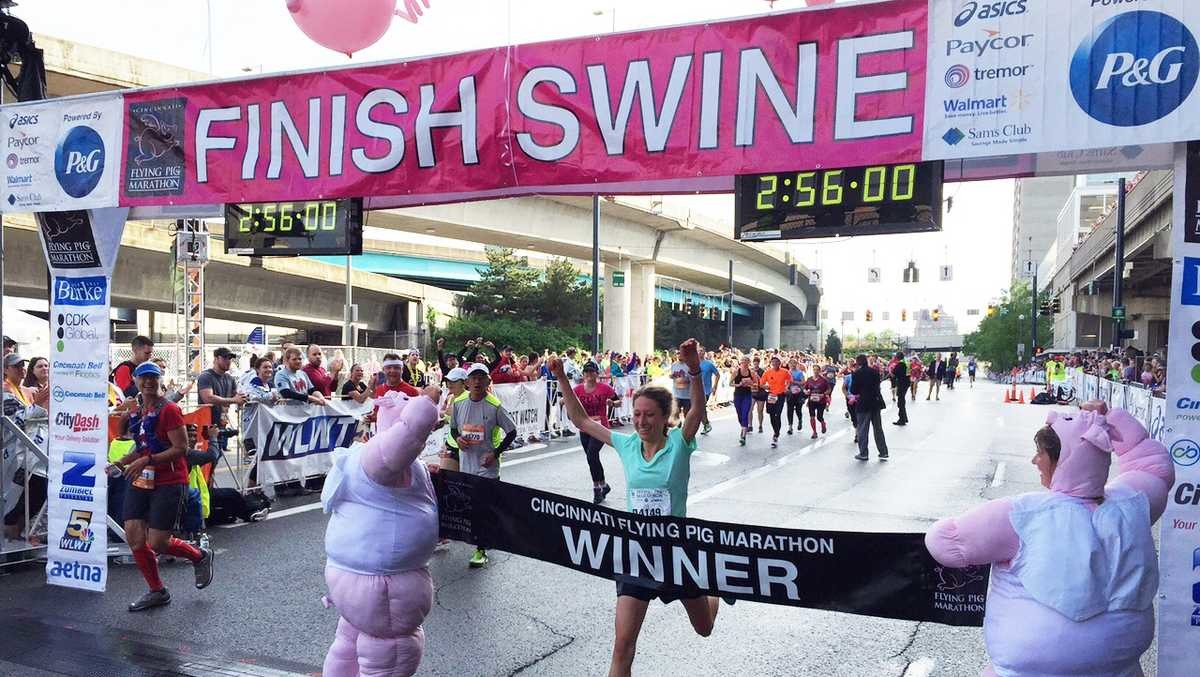
· Bockfest 5K (virtual format only), on or by March 6. Registration is open at https://raceroster.com/events/2021/34027/2021-bockfest-5k
· Flying Pig Marathon Weekend (virtual format only), May 1 & 2. Registration for all races is open at https://raceroster.com/events/2021/34032/2021-cincinnati-flying-pig-marathon-weekend
· Flying Pig Marathon/Queen Bee Half Marathon (planning for in-person events), October 29-31. Registration for these events will open March 1, 2021 and virtual registrants will have the first opportunity to transfer to in-person events.
On behalf of our staff and board of directors, we want to thank Cincinnati Mayor John Cranley, Cincinnati City Manager Paula Boggs Muething and Hamilton County Commissioner Denise Driehaus for their guidance and continued support of Pig Works. We also want to recognize the dozens of corporate partners, thousands of volunteers and numerous community partners for their on-going loyal support of the “Pig.”
Additionally, we are very proud of the “new playbook” our team has developed over the past year to ensure the safety and security of our participants, volunteers, spectators and community-at-large. We can reassure you that all of these measures will be in place when we can gather again at the Start Line this fall.
Stay active and stay healthy.
(02/18/2021) ⚡AMPCincinnati Flying Pig Marathon
This beloved race found it's name from Cincinnati's pork history which dates back to the early 1800's. Cincinnati is also known as "Porkopolis."Our weekend line up of events are designed to welcome athletes of all abilities from the Diaper Dash to the full Marathon and everything in-between, we truly have something for everyone. We even added a dog race several...
more...Eliud Kipchoge will make his final marathon appearance prior to his Olympic title defence at the NN Mission Marathon in Hamburg
The one-off marathon, organised jointly by his management firm Global Sports Communication, the NN Running Team and the Hamburg Marathon, carries the tagline ‘The fastest way to Tokyo’ and is an effort to provide another much-needed competitive opportunity for athletes to not only run a fast race in the lead-in to the rescheduled Tokyo 2020 Olympic Games, but in many cases to help them achieve the qualification standard.
The race, which will take place around a looped 10.5-kilometer city center course, is expected to attract about 100 invited elite athletes.
Kipchoge, the world record-holder, will of course attract the bulk of the attention. His appearance will come after a disappointing eighth place finish at the London Marathon last October where he clocked 2:06:49.

The Kenyan kicked off his marathon career in 2013 with victory in the Hamburg Marathon, and said he's delighted to return to compete in the northern German.
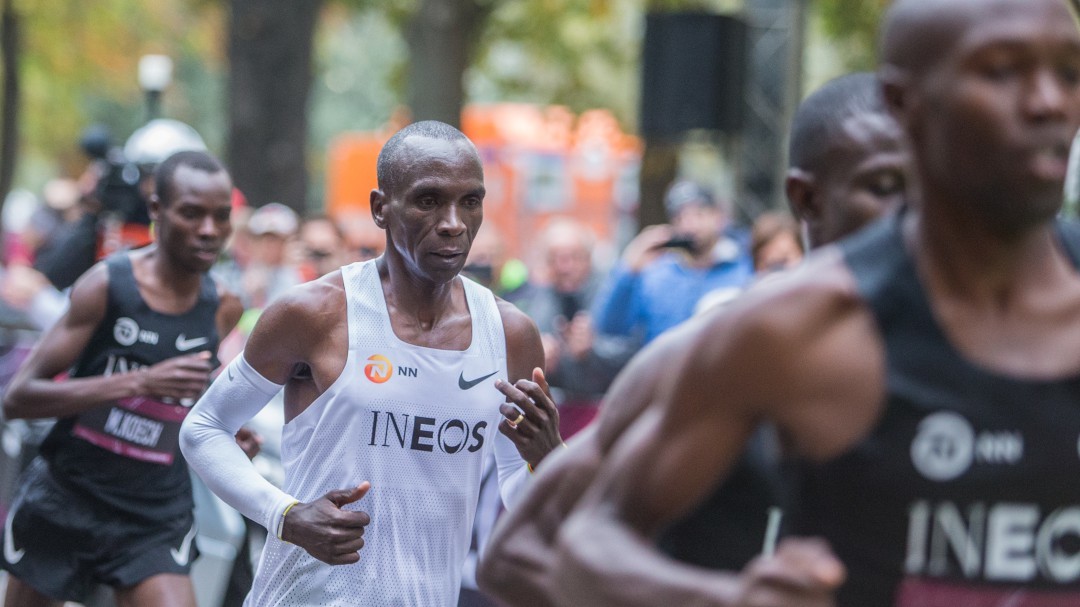
"In Hamburg, I am going back to the genesis of my marathon career," he said. "I hope to inspire many people around the world by running a beautiful race in the streets of this beautiful city."
Kipchoge, 36, has gone on to win 11 of his 13 races over the classic distance and has produced two of the three fastest performances of all-time, topped by his 2:01:39 world record at the 2018 Berlin Marathon.
One year later, Kipchoge became the first athlete to break the two-hour barrier in the event, when he clocked 1:59:40 at an exhibition event in Vienna.
In Tokyo, Kipchoge will aim to become just the third man to win back-to-back Olympic marathon titles.
(02/18/2021) ⚡AMPby World Athletics
Tokyo 2020 Olympic Games
Fifty-six years after having organized the Olympic Games, the Japanese capital will be hosting a Summer edition for the second time, originally scheduled from July 24 to August 9, 2020, the games were postponed due to coronavirus outbreak, the postponed Tokyo Olympics will be held from July 23 to August 8 in 2021, according to the International Olympic Committee decision. ...
more...Organizers promise an unforgettable experience for Al Marmoom Ultramarathon
Preparations for next month’s 50KM Al Marmoom Ultramarathon have picked up pace and organisers have promised a safe and unforgettable race that will test the participants’ endurance and resolve.
Organized under the umbrella of Dubai Sports Council, in association with Dubai Municipality and FittGROUP, the 50km Al Marmoom Ultramarathon will take place on Friday, March 5 in Al Marmoom Desert Conservation Reserve.The event will also offer two shorter races of 10km and 5km, and all three races will take runners into the desert, across some fascinating landscape.
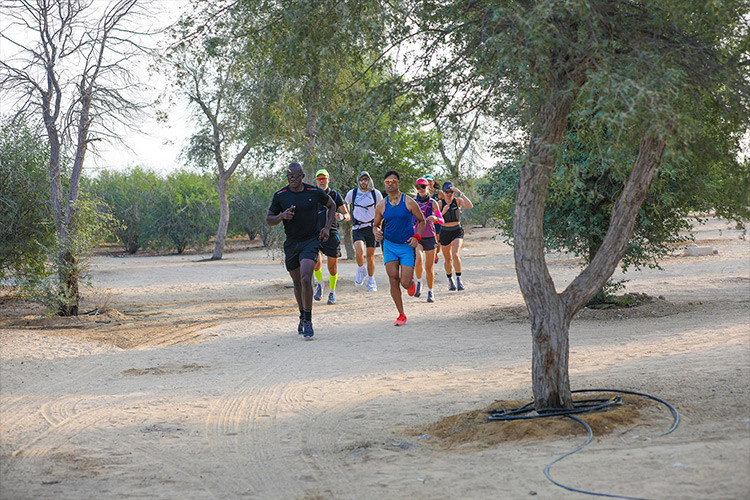
All participants will receive finisher medals and the top three rankings in each category, male and female, will be awarded trophies.
Registration for the event is still open through the official website, https://www.ultramarathon.ae, or Hopasports (https://www.hopasports.com/en/event/al-marmoom-ultramarathon-50km-10km-5km), and race organisers have organised a series of practice sessions, or ‘build up’ runs, for registered participants in Al Marmoom Desert Conservation Reserve every Friday, until Feb.26.
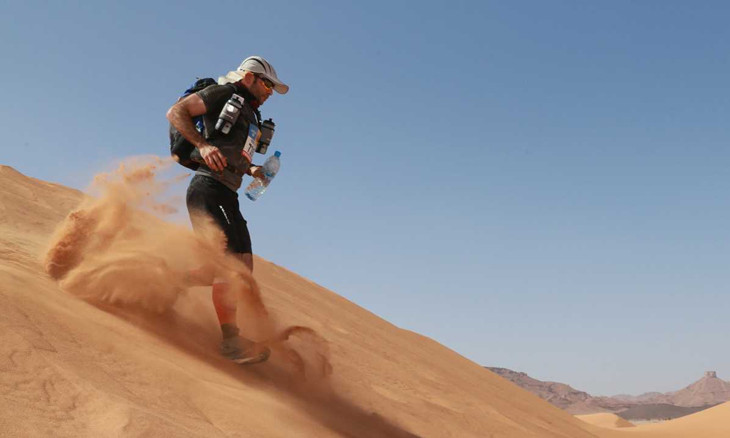
Speaking about the race, Danil Bornventure, Race Director of FittGROUP, said: “The 50km Al Marmoom Ultramarathon will be a challenging race, that will test participants’ endurance, both mental and physical stamina, as well as strength and courage.
“Following the popular success of Al Marmoom Dune Run, we are offering the shorter distances of 10km and 5km to encourage the many runners who wish to experience the challenge of a desert race.This event brings together the growing running community, both elite and recreational runners.“It is being organised after unprecedented demand from runners who are looking for challenging competitions at all levels.”
Speaking about the health and safety measures in place, Bornventure added: “The health and safety of participants, organizers and crew is our highest priority. In response to the COVID-19 pandemic, we will follow all the guidelines and protocols of the relevant authorities and ensure that every precautionary measure is implemented and adhered to.
“We will act vigilantly to safeguard the wellbeing of everyone involved.”Al Marmoom Desert Conservation Reserve is the largest project of its kind in the world, spread acros more than 40 hectares of pristine shrub land that is home to 204 species of native birds, 158 species of migratory birds and many other endangered species, as well as Arabian Oryx, Arabian gazelles, sand Gazelles, foxes, and wild cats.
With natives of more than 200 countries calling Dubai their home, Dubai Sports Council has also been regularly launching new initiatives and adding new events to its calendar for the benefit of every member of Dubai’s diverse community.Through such events, the Council also seeks to provide members of the community an opportunity to compete in unique events like Al Marmoom Ultramarathon in a fun-filled environment, and also encourage them to embrace a physically active lifestyle.
(02/17/2021) ⚡AMPAl Marmoom Ultra Marathon
Launched under the initiative of UAE Vice President and Prime Minister and Ruler of DubaiHis Highness Sheikh Mohammed bin Rashid Al Maktoum, Al Marmoom Desert Conservation Reserve will host the world's longest desert ultra-run Meraas Al Marmoom Ultramarathon. Meraas Al Marmoom Ultramarathon is a 300km, 100km and 50km race across desert terrain and will be held 9th to 11th December...
more...Beatrice Chepkoech sets sights on victory at World Indoor event in Torun
Fresh from breaking the world 5-kilometer road race record on Sunday in Monaco, world 3,000m steeplechase champion Beatrice Chepkoech will be seeking to continue her rich vein of form at World Athletics Indoor Tour in Torun, Poland today.
This time round, Chepkoech will feature in the 3000m, where she will face Genzebe Dibaba, the world indoor record-holder and three-time world indoor champion at the distance.

Chepkoech has had a stellar year so far in the 3000, winning the opening World Athletics Indoor Tour in Karlsruhe, then set an indoor PB of 8:34.21 over the distance to place third in Lievin and setting a world 5km record of 14:43 in Monaco three days ago.
However, It is not going to be a two-horse race though. Ethiopian teenager Lemlem Hailu, who stole the show in Lievin to win in a PB of 8:32.55, is also in the line-up as is her compatriot Fantu Worku.
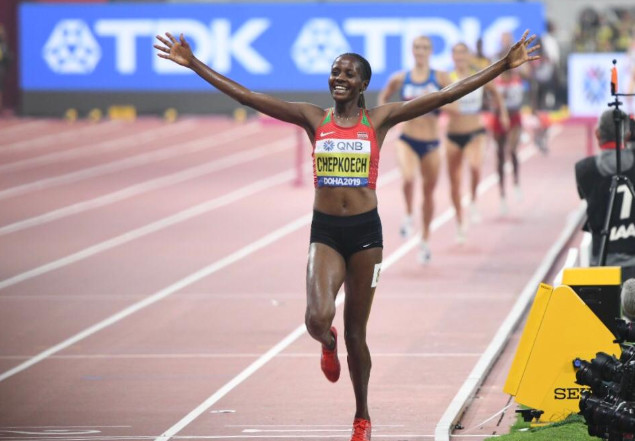
World indoor 3,000m bronze medallist, Bethwell Birgen face off with world 5,000m silver medallist Selemon Barega of Ethiopia in the men's 1,500m event. Poland's Marcin Lewandowski is also in contention and the meeting record of 3:35.57 looks to be a realistic target for the field.
Collins Kipruto, won the event last year in 1:45.86, has been entered for the 800m, where he will line up against world indoor champion Adam Kszczot of Poland.
However, Elliot Giles, who won in Karlsruhe and Lievin, starts favourite but will have to contend with European indoor silver medallist Jamie Webb and Swedish record-holder Andreas Kramer.
African bronze medallist Habitam Alemu will start as favourite for the women’s 800m, a scoring event in this year’s World Athletics Indoor Tour. Uganda’s Winnie Nanyondo, Poland’s Joanna Jozwik and Ireland’s Nadia Power – all of whom hold their respective national indoor records – will ensure the race is a competitive one.
(02/17/2021) ⚡AMPby William Njuguna
European Athletics Indoor Championships
Witness six sessions of action-packed sport over three days of intense competition as some of the best athletes in the world compete for prestigious European titles. Don’t miss the opportunity to witness this thrilling event and get closer to the action. ...
more...U.S. Olympic Marathon Trials winner Aliphine Tuliamuk will be the first elite female athlete to receive financial assistance as she recovers from childbirth and trains for the 2021 Olympics
In November 2007, Paula Radcliffe won the New York Marathon, a mere nine months after giving birth to her first child. In 2011, Kara Goucher finished fifth at the Boston Marathon and set a new PB only 7 months after delivering her baby.
Shelly-Ann Fraser-Pryce won the women’s 100m at the World Championships in 2019, with her two-year-old son in the audience.
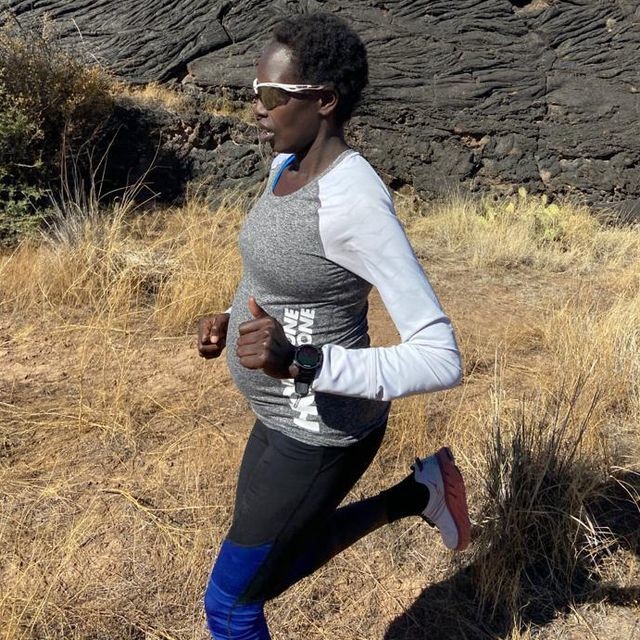
While there have been many incredible stories of female athletes who have returned to sport after childbirth with great success, the reality is that many struggle during those first weeks, months and years, and are sometimes forced to choose between their athletic careers and their families.
The U.S.A. Track and Field (USATF) Foundation has now committed to providing support for these women through a new grant program, with U.S. Olympic Marathon Trials winner Aliphine Tuliamuk as the first recipient of financial assistance.

The USAFT Maternity Grant Fund will provide assistance to elite female Track and Field athletes and runners during their pregnancy and postpartum when they are recovering. The USATF Foundation website says “this fund will allow elite females athletes confidence that there is financial assistance available if needed.” The fund was started with a donation from USATF Foundation Director Lisa Larson, who says that although pregnancy and childbirth can be unpredictable, it is clear that female athletes can return to sport better than ever when given the proper support.
Tuliamuk, the first recipient of the grant, won the U.S. Olympic Marathon Trials in February 2020.
When the COVID-19 pandemic hit and the Olympics were postponed, she and her partner took this extra time to start growing their family, and Tuliamuk gave birth to the couple’s first baby girl last month.
She is now preparing to compete in the marathon at the Tokyo 2021 Olympics, which will take place only 6.5 months after her daughter was born. Tuliamuk is very thankful to be the first recipient of this new fund, and she says it will help cover the couple’s babysitting needs so she can rest and return to training as quickly as possible.
"Iam so grateful that USAFT Foundation chose me as their first recipient of the maternity grant,” she tells usatffoundation.org, “being a new mom is challenging enough, let alone being a new mom who’s representing her country in the summer Olympics 6.5 months postpartum.”
(02/17/2021) ⚡AMPby Brittany Hambleton
Lace up and get ready to run, Atlantic City plans April Fools Half Marathon and 8K
Atlantic City is hosting a half marathon and an 8K the last weekend in April.
If you're looking for a race to run this spring, registration is now open for the April Fools 8K, which will be run on the Atlantic City Boardwalk on Saturday April 24th.
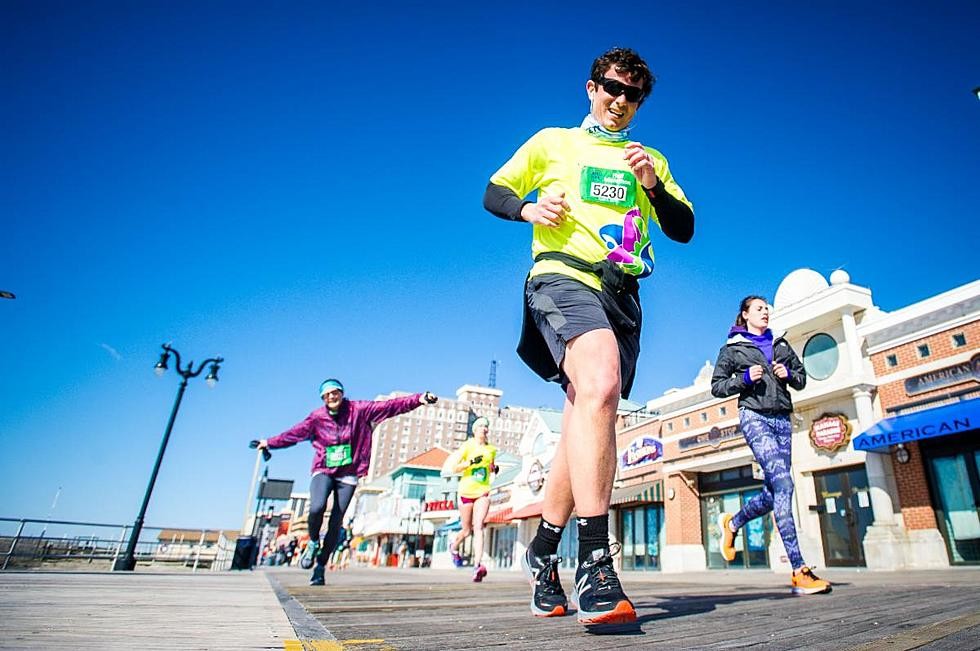
If you're up for more of a challenge, the April Fools Half Marathon (which goes for 13.1 miles) will also be run on the boardwalk on Sunday, April 25th.

The Atlantic City Boardwalk provides the perfect fast, flat course for runners of any level. Running by landmarks like Boardwalk Hall and Steel Pier in the cool, spring air sounds really nice.
The reason why the races will be run on two consecutive days rather than concurrently, is for the safety of the runners, as we're still dealing with the COVID-19 pandemic. Registration for both the half marathon and the 8K will be capped at 250 runners.
To keep in compliance with state social distancing guidelines, the races' 'Start' line will feature small “waves” of distanced runners at a time. Runners who register will be emailed specific details about their start times for the AmeriHealth April Fools Half Marathon & 8K by April 1, 2021.
And Atlantic City Marathon offers a virtual option, too, so you can run on your own where you're most comfortable. If you are not comfortable yet with in-person racing, you can chose the virtual race option for the distance you plan to run.
Virtual runners will earn a short sleeve event specific technical shirt and Virtual Challenge finisher medal that will be mailed to you prior to race weekend, according to organizers.
(02/17/2021) ⚡AMPApril Fools Half Marathon
Fun, Fast, Flat! The April Fools themed event offers the best finisher medals, free photos, free beer and a post-race party at Jimmy Buffet's Margaritaville and LandShark Beach Bar on the Atlantic City Beach & Boardwalk. It's your chance to get fit and party like Buffett! FREE PHOTOS! Custom Finisher Medals and Technical Shirts for ALL runners Live Runner...
more...Survey shows that over half of Japan firms want Olympics cancelled or postponed
Over half of Japanese firms believe the Tokyo Olympic Games should be cancelled or postponed, a survey by think tank Tokyo Shoko Research showed on Monday, casting further doubt over the fate of the troubled Games.
Japan is struggling to contain the coronavirus and lags behind western countries in rolling out vaccines, even as Prime Minister Yoshihide Suga vowed to get conditions in place to host the once-postponed Summer Olympics from July 23.

The survey, conducted online on Feb. 1-8, showed 56.0% of the companies polled feel Japan should cancel or postpone the Games, up from 53.6% in the previous survey in August.

Only 7.7% of the firms surveyed said the Games should proceed in full form as scheduled this year, down from 22.5% in the previous survey.
while another 17% said it should proceed with no spectators, the survey showed.
Over 70% firms said cancelling or postponing the Games will barely have any impact on their earnings.
The survey, which covered over 11,000 firms, was conducted before Friday’s resignation of Tokyo 2020 Olympics chief Yoshiro Mori over sexist remarks that left the Olympics searching for a chief five months from the opening ceremony.
(02/16/2021) ⚡AMPTokyo 2020 Olympic Games
Fifty-six years after having organized the Olympic Games, the Japanese capital will be hosting a Summer edition for the second time, originally scheduled from July 24 to August 9, 2020, the games were postponed due to coronavirus outbreak, the postponed Tokyo Olympics will be held from July 23 to August 8 in 2021, according to the International Olympic Committee decision. ...
more...Ultrarunner Tom Evans prepares for his biggest race at Olympic marathon trials
Like many, ultrarunner Tom Evans has struggled with the lack of races in lockdown. The former army captain burst onto the ultrarunning scene in 2017, coming third in the six-day Marathon des Sables, and last year he set a new record in the Tarawera 102km Ultra Marathon, in New Zealand. But he has had to adapt to circumstances and is now setting his sights on the marathon in the rescheduled Tokyo Olympics.
We talked to the 29-year-old about swapping the trails for the pavements, his mental strength, the Olympic marathon trials and his role as a Garmin ambassador.
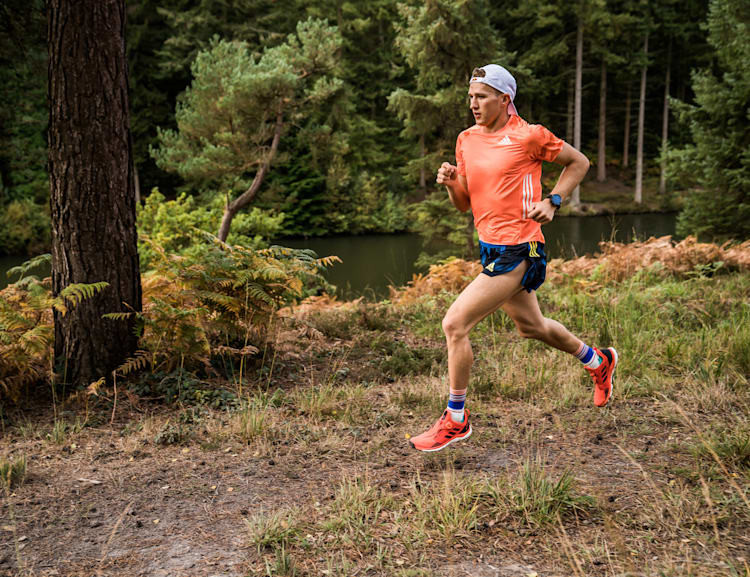
You’ve set your sights on the Tokyo Games. How did this happen?

‘At the beginning of the pandemic, Tokyo was not on my list whatsoever – I very much planned on staying on the trails and running long rather than running fast. I guess what the pandemic has taught me is that I like structure and I’m a very goal-orientated athlete and person. I have to have goals, whether it’s “Today I’m going to list 10 things on eBay” or something bigger; I have to set goals and achieve those goals. It’s the same with my running, with there being so little opportunity to race, I thought I need something to set my sights on and if something is going to happen, it’s going to be the Olympics.
‘[With the lockdown restrictions] we couldn’t drive to run or go on training camps, which is how I would normally do my trail running and my ultrarunning. It’s all been very much running from the door, so I’ve been running a lot more on the road, which has led to running a bit quicker and that’s opened my eyes to what I could run at the marathon trials at the end of next month.’ [The event will take place on a looped course in Kew Gardens, London, on Friday, March 26.]
How do you feel about the trials?
‘I’m really excited – for me, it’s really unknown. I think I’ll be able to take a lot of lessons I’ve learnt from ultrarunning into the race and I’m really looking forward to the challenge. It’s been great fun training for it and to now get the opportunity to push myself to the limits and see what I’m capable of.’
‘You know that during a marathon you’re going to hurt and you know that when it starts to hurt, the training that you have done before is what’s setting you up to keep doing it. I go into a race saying, “I know this is going to hurt” and when it starts hurting I think, “Bring it on; I’ve done the training, I trust myself and I knew this was going to happen and now it’s happening, it’s no surprise.”’
(02/16/2021) ⚡AMPby Jane McGuire
Tokyo 2020 Olympic Games
Fifty-six years after having organized the Olympic Games, the Japanese capital will be hosting a Summer edition for the second time, originally scheduled from July 24 to August 9, 2020, the games were postponed due to coronavirus outbreak, the postponed Tokyo Olympics will be held from July 23 to August 8 in 2021, according to the International Olympic Committee decision. ...
more...Virgin Money tickets go on sale for second virtual London Marathon
The organizers of the marathon are releasing 50,000 virtual tickets which, combined with the 50,000 in-person participants, would make it the largest marathon ever.
Last year’s marathon was awarded a Guinness World Records title for the most users to run a remote marathon in 24 hours with 37,966 finishers.
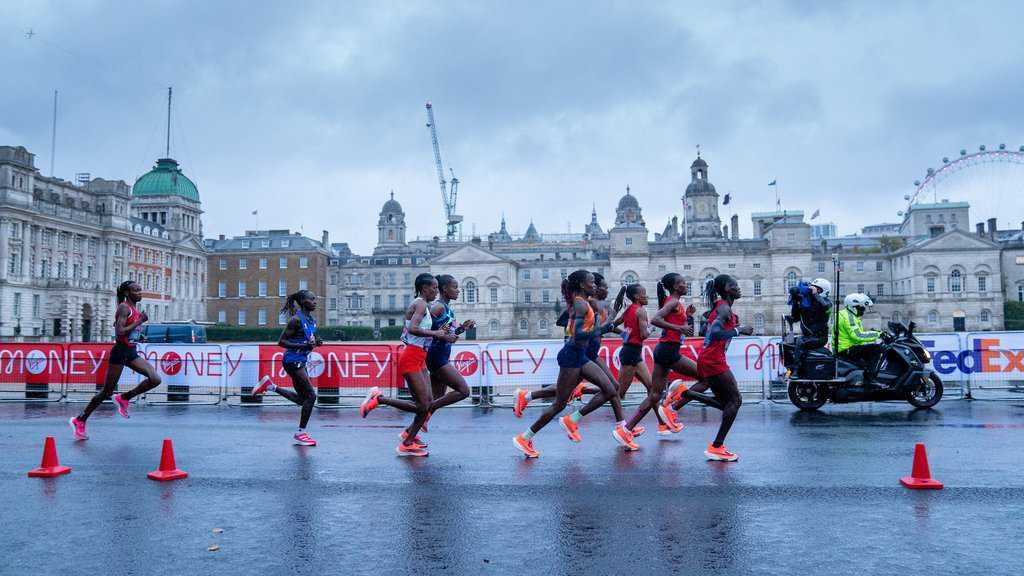
It was also the most inclusive marathon in the forty-year history of the event, with participants able to complete the marathon at any time on the day.
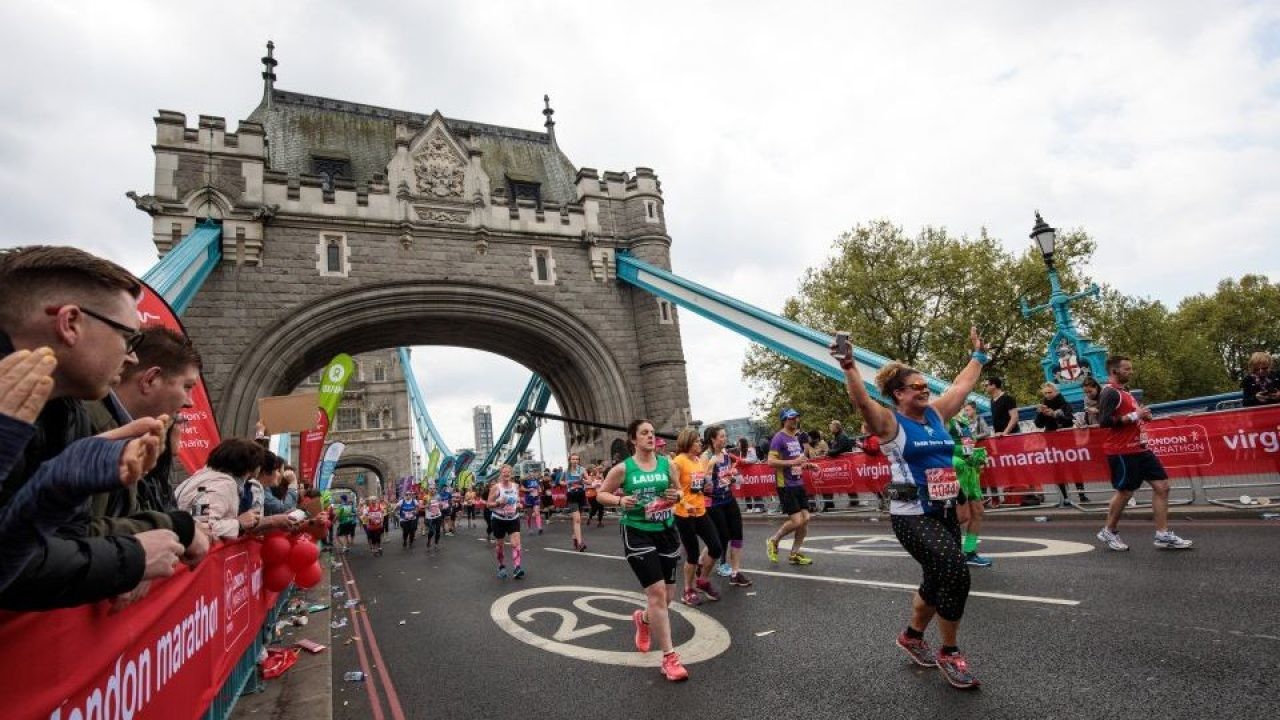
Hugh Brasher, event director of the Virgin Money London Marathon, said: “Our first virtual Virgin Money London Marathon last year was a real eye-opener for us.
“Everyone did the marathon their way: some ran the whole way, others walked, while some broke up the distance into manageable parts over the day and night. It was an incredible, inclusive day when the spirit of the London Marathon brought everyone together in a unique way.”
All finishers, whether virtual or in-person, will be sent an official medal and a New Balance finisher’s T-shirt.
(02/16/2021) ⚡AMPby Tom Saunders
TCS London Marathon
The London Marathon was first run on March 29, 1981 and has been held in the spring of every year since 2010. It is sponsored by Virgin Money and was founded by the former Olympic champion and journalist Chris Brasher and Welsh athlete John Disley. It is organized by Hugh Brasher (son of Chris) as Race Director and Nick Bitel...
more...Chinese marathon couple share their love of running
Every morning at 4 o'clock, 84-year-old Hu Yingfu and 75-year-old Wang Zhangmin from Hefei, east China's Anhui Province will gear up, head out and run for 10 kilometers as their wake-up exercise. They have been doing this for decades and nothing has ever stopped them – not aging or the cold in winter.
Having been married for 54 years, Hu and Wang have finished more than 100 marathons all over China.
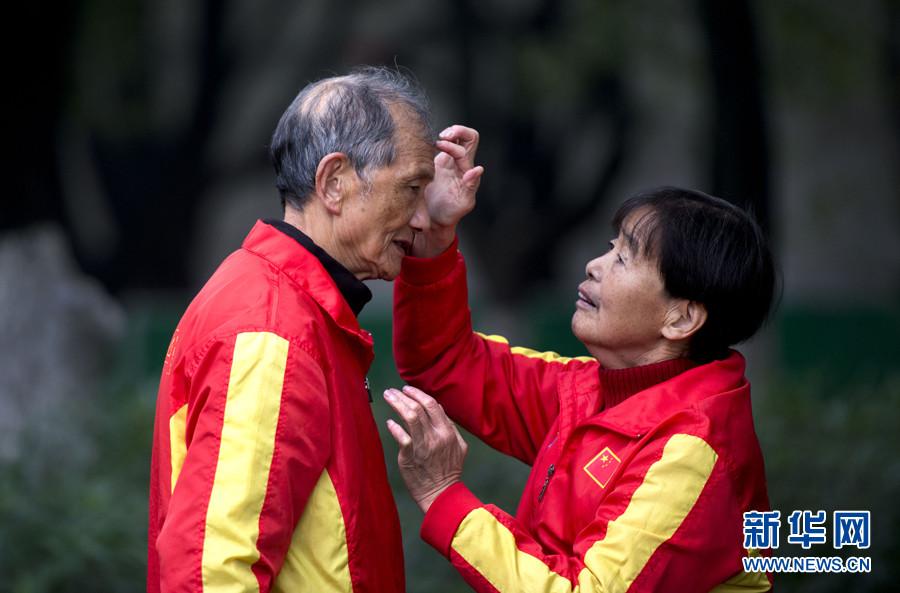
In their earlier years, both were haunted by various health problems. Hu suffered from gastroptosis and tracheitis; Wang vomited often and had persistent diarrhea because of her stomach trouble. One day, Wang followed her friend's suggestion and began to jog as exercise.

It did not take Wang too long to realize that running helped her shake off health problems she had suffered for decades. After Hu retired in 1997, he followed his wife's example to make strides on the track as well, which in turn fixed his gastroptosis.
In 2004, 58-year-old Wang attended a national 1,500-meter race for senior citizens and was the fourth to cross the finish line. Since then, the couple started signing up for every running competition they could find. Soon they wanted to try something even more challenging, and what could be a better choice than a marathon?
In 2011, Wang and Hu ran their first full marathon in the Shanghai Inter National Marathon. Seventy-four-year-old Hu had bloody toes by the time he was midway through, but still managed to finish the 42.195 kilometers race in four hours and 18 minutes.
"There is a process doing everything. I began to feel the fun after finishing several marathons. That sense of accomplishment is remarkable," said Hu to Xinhua News Agency. "I was always top 3 of my group at 70s. Many who are younger than me lost to be."
Having left their footprints in most of the marathon tracks in China, the couple cannot remember how many medals they have won. However, both Hu and Wang are convinced that it's their pursuit of fun, health and confidence that keeps them running.
Running has also added more vibrancy into their lives. Hu and Wang made a lot of new friends through participating in marathon events. For example, Wang Hongcai, vice-president of the Hefei Marathon Sport Association (HMSA), said he only began to run marathon due to the encouragement of Hu and Wang.
"I used to be 95 kilograms, now I'm 65. Running healed my hypertension which I fought for three years with medicine," said 52-year-old Wang Hongcai. He also revealed that the total number of registered members of HMSA went from fewer than 100 to more than 4,000 thanks to role models Hu and Wang.
In 2017, Hu and Wang attended the Beijing International Marathon to celebrate their 50th wedding anniversary, which in China is also known as "Golden Marriage." That day was also Hu's 80-year-old birthday. Though Wang had sprained her leg one month earlier, she still managed to finish the competition.
The organizing committee prepared a special gift for the couple. Their numbers were 13520 and 14520. In Chinese, "520" sounds similar to "I love your" while "13" and "14" combined together sounds like "my whole life."
One of Wang's favorite sayings is "Life is a marathon." The sport has been there as he and his wife support each other and move forward with their lives. "Every marathon finished is another 42.195 kilometers extended for our love," said Hu, whose goal is to become the world's oldest marathon runner. "As long as our hearts beat on, we will keep running."
(02/16/2021) ⚡AMPRunners of Lincoln Marathon won´t be able to finish inside memorial stadium this year
The Lincoln Marathon’s finish line will look quite a bit different from how it has in recent years.
But this change isn’t entirely pandemic-related.
Runners will cross the finish line on the track at Ed Weir Stadium, which was the race’s original finish line. Since 2010, the finish line has been on the 50-yard line inside Memorial Stadium.
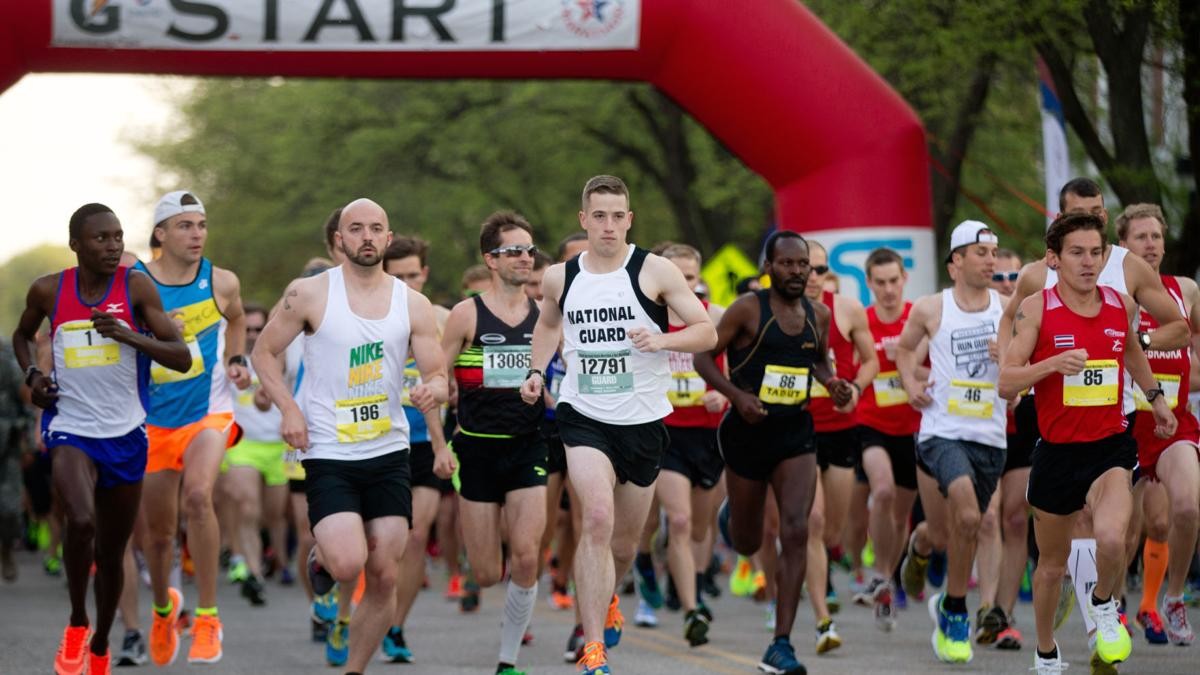
The change was made because of the Husker spring game, which is set to take place the day before the race.
The Lincoln Marathon, which also includes a half-marathon, is scheduled for May 2.
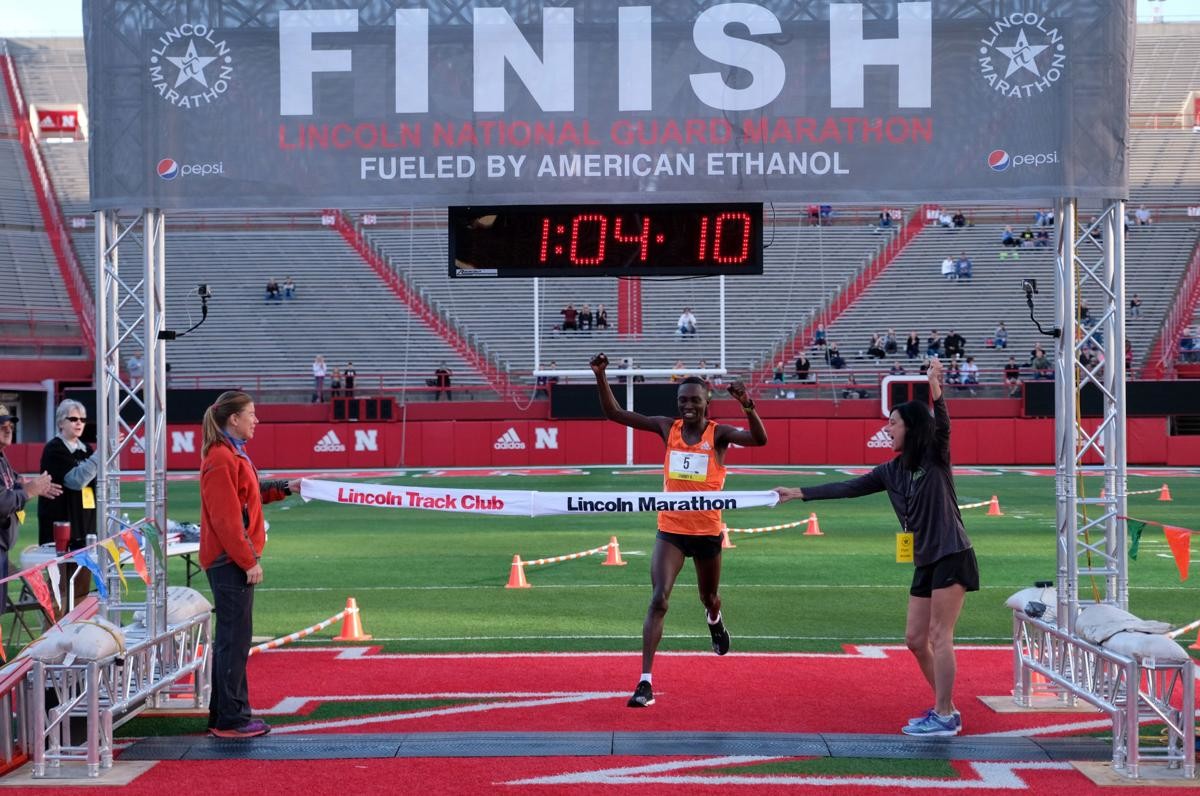
Turf renovations were going to require the same change during last year’s race. But the event transitioned to a virtual format because of the coronavirus pandemic.
The University of Nebraska-Lincoln worked with the Lincoln Track Club to help determine the new finish line, said Ryan Regnier, president of the Track Club.
“They have been supportive in helping us find an alternative, recognizing the importance of the marathon to the Lincoln community,” he said. “There is some nostalgia associated with finishing on the track since it served as the original finish line for the race.”
The rest of the 2021 course will be the same as previous years and will be certified as a Boston Marathon qualifier.
(02/15/2021) ⚡AMPby Kelsey Stewart
Lincoln Marathon
The Lincoln National Guard Marathon and Half-Marathon is run on a citywide course that starts and finishes on the campus of the University of Nebraska-Lincoln. Runners in both races share a common start and run a loop route past the Nebraska State Capitol, along Sheridan Boulevard, past Union College, along the Highway 2 bike path, past the Lincoln County-City Building...
more...

